- Work With Me

- Sierra Leone
- South Africa
- New Zealand
- Falkland Islands
- Netherlands
- Accommodation
- Electrical Gear
- Essential Gear
- Working Abroad
- Blogging Resources

Travel Tips
How to plan the perfect travel itinerary: 15 easy steps.
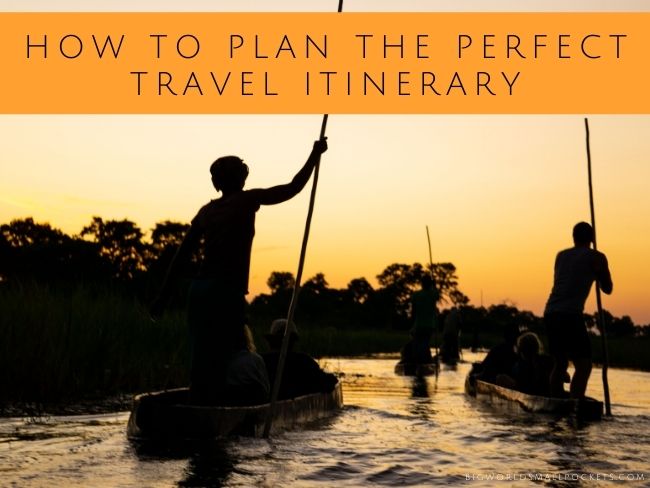
They say the key to a good trip is in the planning.
And y’know what?
They’re right!
Yes after many years spent traversing the globe, I can certainly attest to the fact that planning your trip is not only key to having the best time while you’re away, but also ensuring the process of getting there is stress-free too.
After all, who wants planning a travel adventure to be stressful?!
Instead, trip planning should be a major part of the travel enjoyment and, if you’re an organiser like me, there’s almost nothing you’re likely to enjoy more!
But even for the non-organisers among us … and I know you’re out there!… you really can learn to love planning.
Because the more you do it, the easier it gets and the better you get at it too.
Plus you also come to work out what essential parts of a trip need to be organised ahead of time and what don’t.
After all, a good travel planning strategy is as much about knowing what needs to be prepped in advance as what doesn’t!
Too much planning can ruin a trip and too little planning can ruin it as well.
So here to help you strike the balance, is my complete guide to planning a travel itinerary in 15 easy steps…
Just enter your details below and I'll email it you - simple!
Information will be sent to the email provided above
Related Posts
- 12 Essentials for a Long Term Flight
- The Best VPN for Travel
- Travelling with a Yoga Mat – All the Info You Need!
This page contains affiliate links meaning Big World Small Pockets may receive a small commission on any purchases at no extra cost to you.
#1 Consider When You Want to Travel
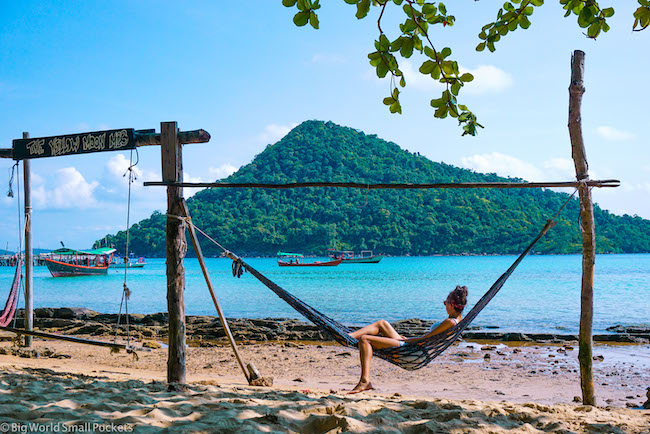
So first up on this article about how to plan the perfect travel itinerary is to consider when you want to travel.
This might seem like a strange place to start, but honestly, knowing roughly what months of the year you want to go adventuring for is going to make a big difference as to where you go adventuring.
Yes you might have your heart set on a particular region or country, but honestly, if it’s rainy season or winter or hurricane season or humidity madness in that / those places during the time of year you plan to travel, then forget it!
Not only will you not then see this region or country at its best, but if you’ve wanted to go for a long time, you might be bitterly disappointed too!
And it goes without saying that some types of travel adventures just aren’t possible at certain times of the year too.
Often these travel adventures are the flagship things to do in a particular country or region, so if you can’t enjoy them at the time of year you’re going to be there… well then what’s the point?!
Classic examples of this type of situation include road tripping the top end of Australia during the wet season (when many roads and national parks are closed), hiking in Asia’s Himalayas or South America’s Andes when many mountain trails are inaccessible, or heading to the Greek Islands in winter (when it’s too cold for swimming, sailing and sunbathing and many transfer boats don’t run!)
There’s a million more variables here too of course, but you get my point!
As a heat lover and sun worshipper, I can certainly claim climate is the number one factor I consider when planning the perfect trip and I reckon it should be top of your considerations too!
So first decide on when exactly you’re going travelling first and then start narrowing down the destination list from there…
#2 Research Climates and Weather!
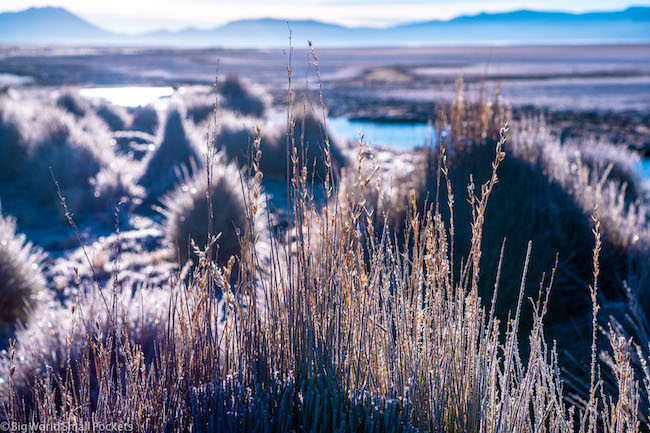
And this brings us nicely onto the second point here, because once you know when you’re off, you can start deciding where you’re off too.
Even some simple Google research can help here, at least in terms of broad regions.
Otherwise take a look at the overview list below for some starting ideas…
- Jan – Mar: Head to Southeast Asia, India, New Zealand, Non-Tropical Parts of Australia, Central America, West Africa, South Africa, Ethiopia
- April – May: Great for North Africa, Middle East, Caucasus, Turkey, Central Asia, Russia, Japan & Korea, Namibia & Botswana
- June – Aug: Ideal for Tropical Australia, Europe, North America, Peru & Bolivia, East Africa
- Sept – Oct: Enjoy Autumn in Canada, Southern Mediterranean, East Africa, China, Namibia & Botswana
- Nov – Dec: Consider New Zealand, Southern Africa, Non-Tropical Parts of Australia, Chile and Argentina, India
This is far from being an exhaustive list, but may give you a handy starting point to do further research.
Within these sweeping regional areas, there are of course micro-climates and geographical particulars to take into account too, as well as any cultural festivals and religious periods that can drastically alter a travel experience, a notable example of which is Ramadan.
It’s also worth bearing in mind what you want to enjoy in area – if there are specific activities you are going to certain countries for, such as hiking, diving, safari or festival-experiencing, then it certainly does make sense to research the best time for these particular pursuits to ensure you get the best travel experience possible.
#3 Think About The Length of Your Trip
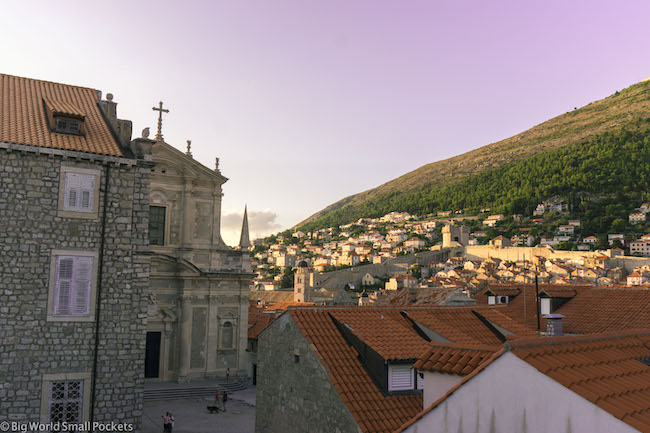
So once you’ve decided when and where you plan to travel, it’s now time to really hone down exactly how long you have for your trip and therefore whether you’re likely to be enjoying just one area in a county, a whole or nation or perhaps even a broader geographical region.
Absolutely key to planning the perfect travel itinerary is making sure you don’t overcommit yourself, and by that I mean don’t plan to cover too many places or too large an area!
Honestly, in doing this, you’re likely to overstretch yourself (trust me, I’ve been there) and actually not enjoy your trip nearly as much as if you’d planned a sensible itinerary inline with the length of trip you have!
In general, my rule of thumb looks like this:
- A weekend trip: Pick 1 city and enjoy it!
- 1 Week Trip: Base yourself in one destination and explore it well – possibility to include day trips to nearby areas.
- 2 Week Trip: As above, or select 2 different destinations within the same country and explore them both for 1 week each or, plan a backpack-style trip (moving every couple of days) in a small country. I try never to visit more than 1 country I if have just 2 weeks – the time you lose from travelling between them is too great.
- 1 Month Trip: Possibility to explore several destinations within one large country i.e. the northern highlands as well as the islands of Thailand, or the Andes as well as Amazon in Peru. Alternatively, explore 2 small neighbouring countries such as Armenia and Georgia. I wouldn’t advise trying to pack in more than 2 countries in a month.
- 2-3 Month Trip: This is when you can really start exploring several countries within one region i.e. Southeast Asia, East Africa, Eastern Europe, Central America. Just ensure you choose countries which are close together, as this saves travel time and also means you can get away with packing similar types of clothes and travel items.
- 3 Months+ Trip: With a longer trip up your sleeve, you can start exploring wider regions and enjoying bigger trips, such as road tripping parts of the US, backpacking South Africa or travelling from Cape Town to Cairo. In general, I wouldn’t start considering covering multiple regions in one trip until I had a 6 month+ travel window up my sleeve.
#4 Factor in Country, Region-Size, Journey Times and Accessibility
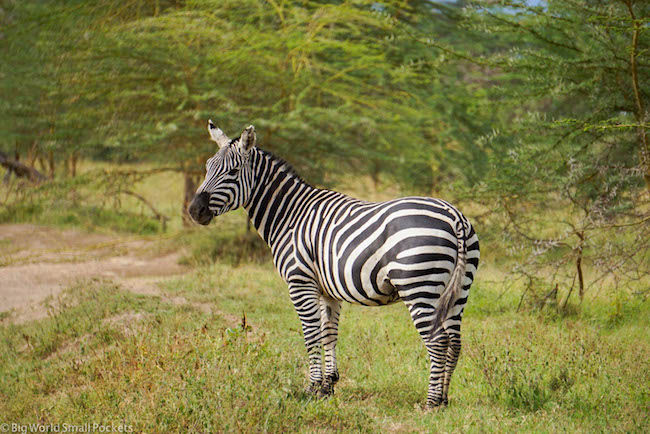
Needless to say, the above length of trip guidelines will vary wildly depending on the size of the country or region, as well as the amount of things / places etc you want to explore there.
Always remember that there will be more to see / do / visit than you plan on initially in any part of the world, so do consider this when thinking realistically about how much you can fit into the length of time you have.
Also remember that the physical act of travelling can be exhausting.
This is another reason to bear in mind your journey times when you are planning a travel itinerary and remember that, if your destination is far away from your home country, that 2 days of your itinerary might have to be given over to just getting there and back.
You will also need to possibly allow time for jetlag if you’re travelling across time zones.
And finally, if you’re planning to hit up a couple or more destinations within one country, then you need to think about the journey times for these too.
Firstly, how can these journeys be made? Secondly how long do they take? And thirdly, how frequent and reliable is the transport?
More off the beaten track or inaccessible countries will take longer to get around, which certainly needs to be factored-in to your travel itinerary.
More on this in section #10 of this article.
#5 Settle on a Destination

So now that you’ve thought about what time of year you’re travelling, the length of your trip, and the climate, journey times, accessibility and size of several destinations, it’s time to decide once and for all on your destination of choice.
Just remember, this will not be your only trip and no matter where you pick, you’ll have a great time if your attitude is right… so just go for it!
Any second or third choice options can always be saved in the bag for your next travel adventure!
#6 Research Visa and Medical Requirements

With your destination now selected, it’s time to begin researching the visa and entry requirements of that country or countries.
This will be specific to the passport you hold, so remember to check with the right foreign office website for the most up-to-date and correct information.
If you need to apply for visas, it can take a while, which is why it’s best to start this process early.
The same goes for any medical requirements.
If you need any vaccinations to enter a region or country, then planning this in advance (so you can book any medical appointments and get any prescriptions you need) is best done at least a month or 2 before your departure date.
#7 Book a Flight / Boat etc
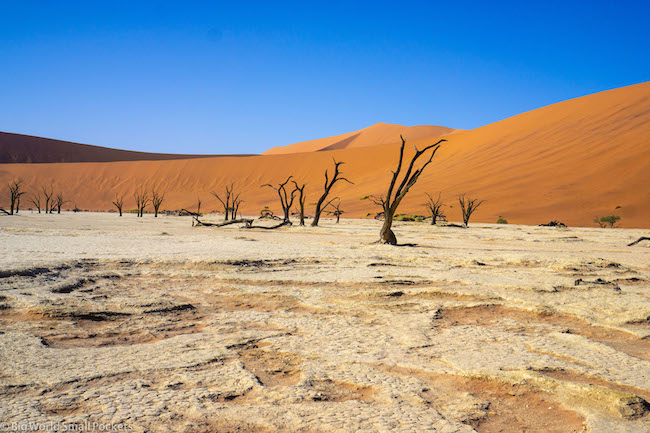
And a few months before your trip, it’s also start time to planning how you’re going to get to your chosen destination.
If you’re trying to take the green option (and your selected arrival point isn’t too far away) then trains or boats maybe an option for you.
As always, I use Trainline to book coach and rail travel throughout the UK and Europe and highly suggest you check it out for the best prices if you’re travelling in this region.
Otherwise FerryHopper is a great sight for searching, price-comparing and booking ferry travel in Europe too.
Alternatively, if you’re heading further afield, it’s likely you’ll be catching a flight to your chosen destination.
My go-to website for finding the best deals on plane tickets is Skyscanner who cover both domestic and international airlines, including budget air companies.
Finally, if you’re planning a combination trip, perhaps a flight with ferry or train ride, then check out Kiwi.com. Their multi-modal travel planners are a really great resource when you’re looking to combine a range of transport methods:
#8 Insurance

Alternatively, if you’re a long-term traveller, digital nomad or frequent remote worker seeking travel health cover, check out Safetywing’s Nomad Insurance policies.
#9 Look at Specific Destinations
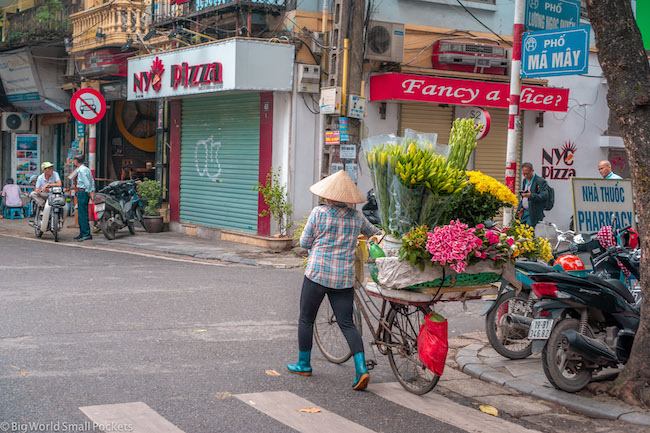
Then, once you’ve chosen your destination and done all the big admin for your trip, it’s time to get to the fun stuff, the real planning!
We’ve already touched on this when we spoke about the length of your trip, but at this point, it’s worth doing a bit more research.
In particular, it pays to know the various destinations or hotspots you want to visit in your country or region of choice – the big ticket numbers if you will.
At this point, making sure you have enough time to do them all, or whittling down the list if you don’t, is crucial in beginning to build the perfect practical travel itinerary, as you start piecing together exactly where you are going to go.
Once you have those destinations mapped out, then consider making a rough route and plan for how you will travel between them i.e. north to south or east to west – this will stop you having to double back on yourself and will save you time and money when you’re away.
Remember to be logical here and create an itinerary that works not only in terms of travel direction and geography, but also suits your trip’s feel.
For most people this involves flying into a major city and spending a couple days there, then picking a 2-5 other destinations in the country they want to see /explore / visit, before winding down care of a relaxing night or 2, possibly at the beach!
#10 Plan Where You’re Going to Stay
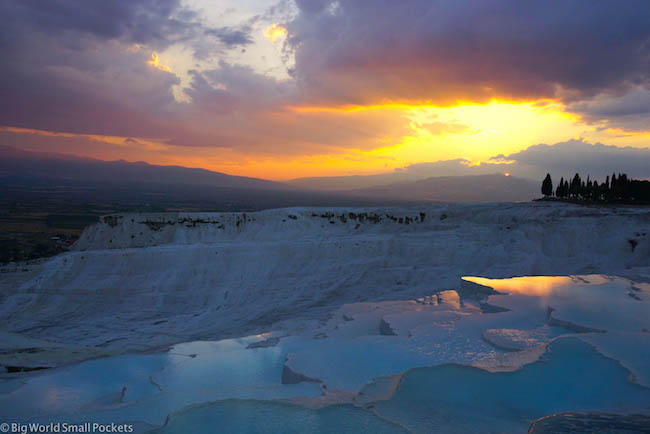
And once you’ve got those key destinations mapped out, you’ll start be able to look at where you are going to stay – a key part of planning any top travel itinerary.
With a vague route outlined too, you should know where you’re going to be on each night of your trip (or at least for the first couple of weeks if you’re heading off on a long adventure), as well as how many nights in each place you are looking to be there.
This should allow you to start researching and possibly booking some accommodation based on your budget and travel style.
For budget travellers, I always recommend Hostelworld for finding the best hostels around the world.
For couples or groups, VRBO is my go-to site when it comes to finding great rental accommodation such as apartments, quirkier or unique stays, or great glamping options.
And finally, when it comes to traditional stays, it’s hard to go past Agoda who offer a huge range of guesthouses, bed & breakfast, hotels and apartments around the world.
Just remember, you certainly don’t have to book every night of your itinerary in advance, but I think having somewhere to stay for at least the first 4 nights is a great idea, so you don’t have to worry about finding somewhere when you arrive.
#11 Discover How to Travel Around
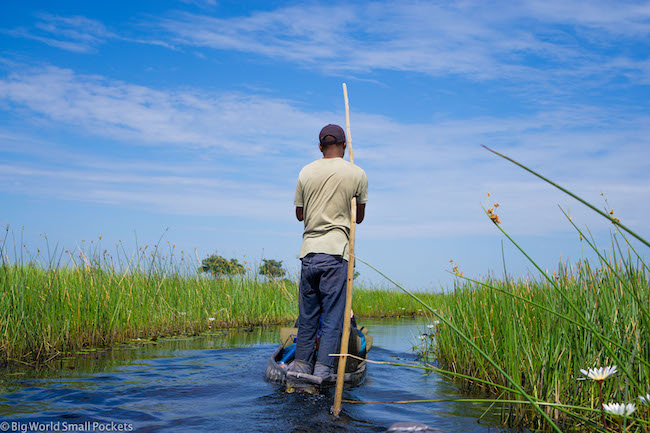
Once you’ve got your rough travel itinerary plan in place and some accommodation lined, it’s then time to research how you can get between destinations in your chosen country(ies) – either on day trips or, if you’re moving around, to base yourself in different areas too.
Again, we talked about this in section #4 of this post, but this is the time to go into more detail – perhaps even booking or reserving those day trips or car / train / bus / internal flight connections that will get you between the spots you want to visit.
As discussed before, I use Trainline for booking coach and train tickets in the UK and Europe, and I use the excellent 12Go website for booking buses and train across Southeast Asia.
Thrifty Car Hire are my go-to for car rental, pretty much the world over and Skyscanner are the best for flights no matter where in world you’re heading.
#12 Outline Possible Activities
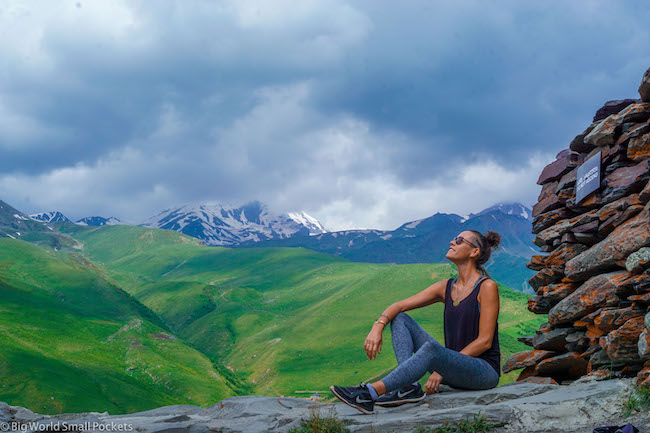
And it’s not just day trips you might want to research, but also any other activities you plan to enjoy as part of your travel itinerary at this stage too.
If there are must-do activities, then creating the perfect travel itinerary, definitely involves locking them in early.
These sort of activities might include things like scuba dive trips, hikes with guides or attractions that require tickets to be bought in advance to avoid the queues.
If there are any absolute bucket lists activities on your itinerary too – such as The Louvre in Paris , Angkor Wat in Cambodia or Machu Picchu in Peru – y’know the sort of activity that underpins a large reason you’re going to that country, then locking in these ahead of your trip is definitely a good idea as well.
GetYourGuide is my go-to site when booking day trips, guided attraction tours, as well as skip-the-line tickets to many of the world’s top sights.
#13 Pack Accordingly
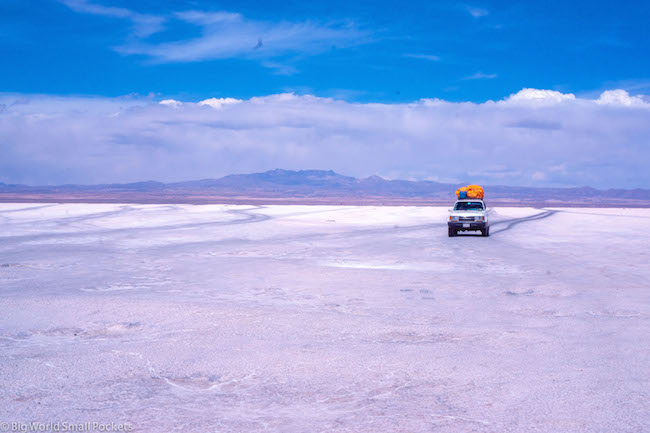
And now that you know where you’re going, when you’re going and what you’re going to be doing there, it’s time to start thinking about what you’re going to pack.
I generally advise starting to do this a couple of weeks before your trip, so that if you do need to buy anything extra, you’ve got the time to do this without stressing!
Check out my top 25 travel essentials for more info about what you should wear when travelling in different parts of the world.
#14 Learn Common Cultural Norms and Safety Tips
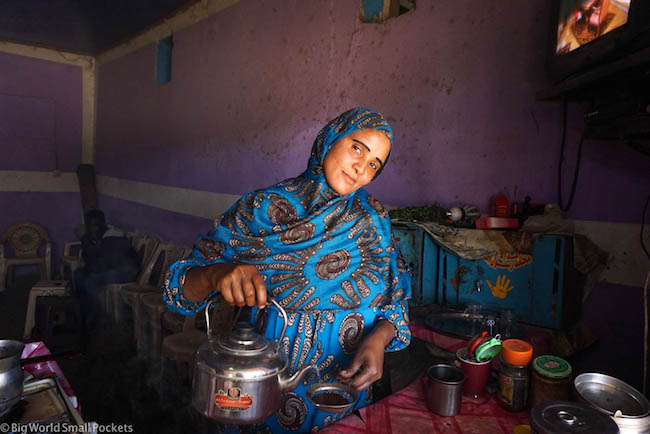
The next step when it comes to planning a travel itinerary can also be done in the final few weeks before your trip, and that is learning some of the common cultural norms and particular safety tips when it comes to your chosen destination(s).
This is particularly pertinent if you’re jetting off to a nation far away from your own, where life might be very different.
Be a little forewarned about what to expect in the areas you plan to travel is a crucial part in getting ready for your travels and I often find reading blog posts from people who have already visited there, gives a great personal perspective on what you can expect.
#15 Get Money Access & Entertainment Organised
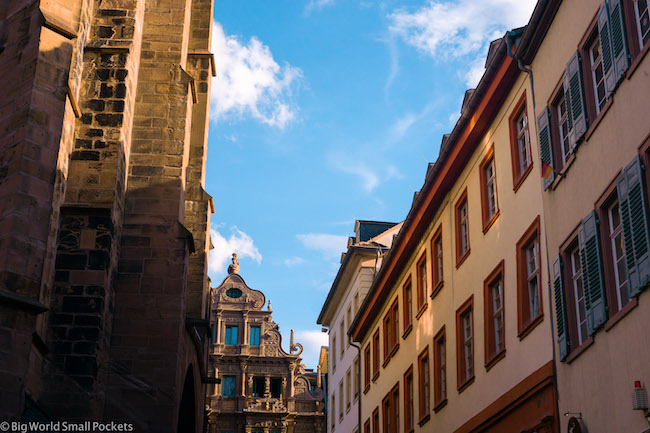
And last but not least on this list of my top tips about how to plan a great travel itinerary, it’s get your money and entertainment organised!
By this I mean, you need to learn what currency the country(ies) you’re heading to use(s) and whether you can use debit and credit cards there, or need to carry a lot of cash.
In either instance, it makes sense to take some cash with you – either some currency that is used in that country or alternatively, Euros or USDs that can easily be exchanged on the ground there.
If you can use debit and credit cards in the region of your intended travels, then it’s also worth researching some bank cards that won’t charge you for overseas transactions and setting about getting one or two!
The easy way to spend abroad with real exchange rates, no markups and no sneaky transaction fees, a Wise card works just like a debit card abroad… and it links easily with Google and Apple pay! Grab yours here .
When it comes to entertainment, make sure you have Spotify Premium lined up for your music listening, as well as Amazon Audible for your eBooks and any Netflix or Amazon Prime series / films downloaded.
This is also crucial for your travels and those journeys / nights when you just want to chill.
And Finally…. Enjoy!

Yes the most important part of your trip is that you just relax and enjoy and, to be honest, don’t plan too much!
Here’s some other great tips to ensure you plan your travel itinerary in the perfect way…
- Leave some stuff to the last minute – planning everything ahead of time will ruin the sense of adventure and fun
- Be flexible – just as you should leave some planning to the last minute, you should also remain flexible, so that if any of the plans you have made have to be changed at any point, you’re able to do this and still enjoy!
- Relax – it’s a holiday after all, so getting stressed during the planning process or at any point on your travels kinda defeats the object!
- Read blogs – I mentioned this already, but reading blogs to help research your trip is one of the best tips I can give.
- Schedule free time – Do not, I repeat do not, over schedule your trip itinerary. If you try to fit too much in, you won’t enjoy it as much. Trust me!
- Think about value – And finally, please remember value over budget when it comes to planning the perfect trip. Honestly, bearing in mind the memories you’ll make, rather than the money you’ll spend (within reason), is crucial to having the best trip!
PIN IT TO PINTEREST!
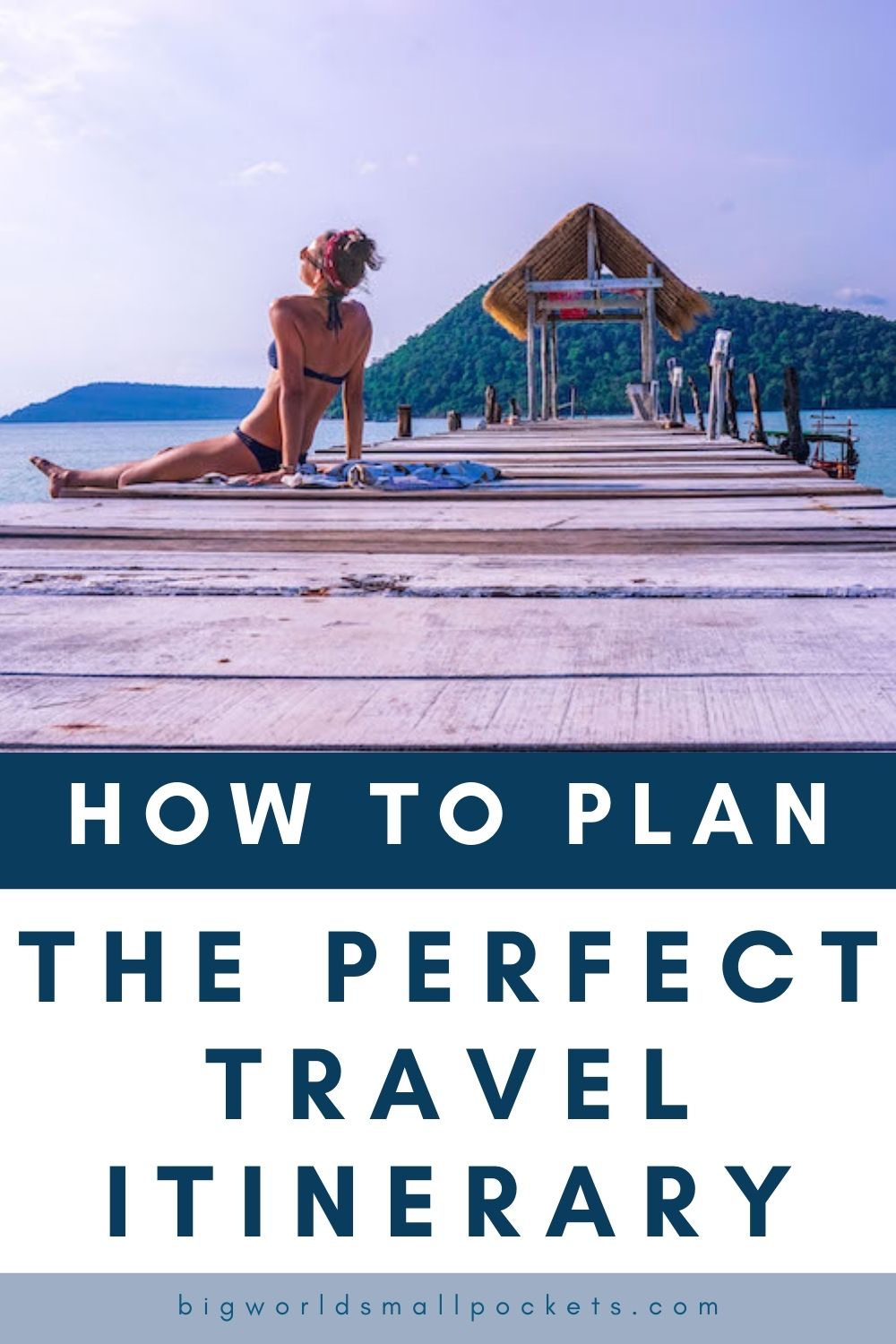
So there you have it, my guide on how to plan the perfect travel itinerary in 15 easy steps.
Do you have any more questions about planning a trip or tips to help a fellow traveller out?
If so, then please drop them into the comments box below…
Creator of Big World Small Pockets, Stephanie Parker is a travel addict! Originally from Jersey in the Channel Islands, Stephanie adventures the world collecting tips, advice and stories, to share with a smile
Leave a Reply Cancel reply
Your email address will not be published. Required fields are marked *
This site uses Akismet to reduce spam. Learn how your comment data is processed .
- Search Please fill out this field.
- Manage Your Subscription
- Give a Gift Subscription
- Newsletters
- Sweepstakes
Fueled by convenience store snacks and a Kerouacian dream of driving across state lines and international borders, road trippers take to the freeways, thoroughfares, and dusty back streets of the world searching for the wind-in-your-hair kind of freedom. Maybe it's on a coastal drive along the shore of South Australia, between red-rock formations in the American West, or through white-capped mountains in the Canadian Rockies. Wherever the road takes you, there's nothing quite like a big drive to quench a thirst for travel. Now buckle in, cue up an audiobook, and hit the road with Travel + Leisure .
- Lost Cultures: Living Legacies
- America's Favorite Places
- Attractions
- Better Together
- Destination Videos
- Holiday Travel
- Intelligent Traveler
- Let's Go Together
- Adventure Travel
- All-Inclusive Vacations
- Backpacking Trips
- Beach Vacations
- Budget Travel
- Bus and Train Travel
- Business Travel
- City Vacations
- Country Trips
- Culinary Vacations
- Destination Weddings
- Disney Vacations
- Fall Vacations
- Family Vacations
- Get Outside
- Global Hot Spots
- Golf Vacations
- Green Travel
- Group Travel
- Honeymoon Destinations
- Island Vacations
- LGBT Travel
- Luxury Travel
- National Parks
- Nature Travel
- New World Wonders
- Romantic Getaways
- Senior Travel
- Solo Travel
- Spa Vacations
- Space Travel + Astronomy
- Spring Vacations
- Summer Vacations
- Volunteer + Charity
- Walking Tours
- Winter Vacations
- Yoga + Wellness
- Weekend Getaways
- Like a Local
Home » Vacations
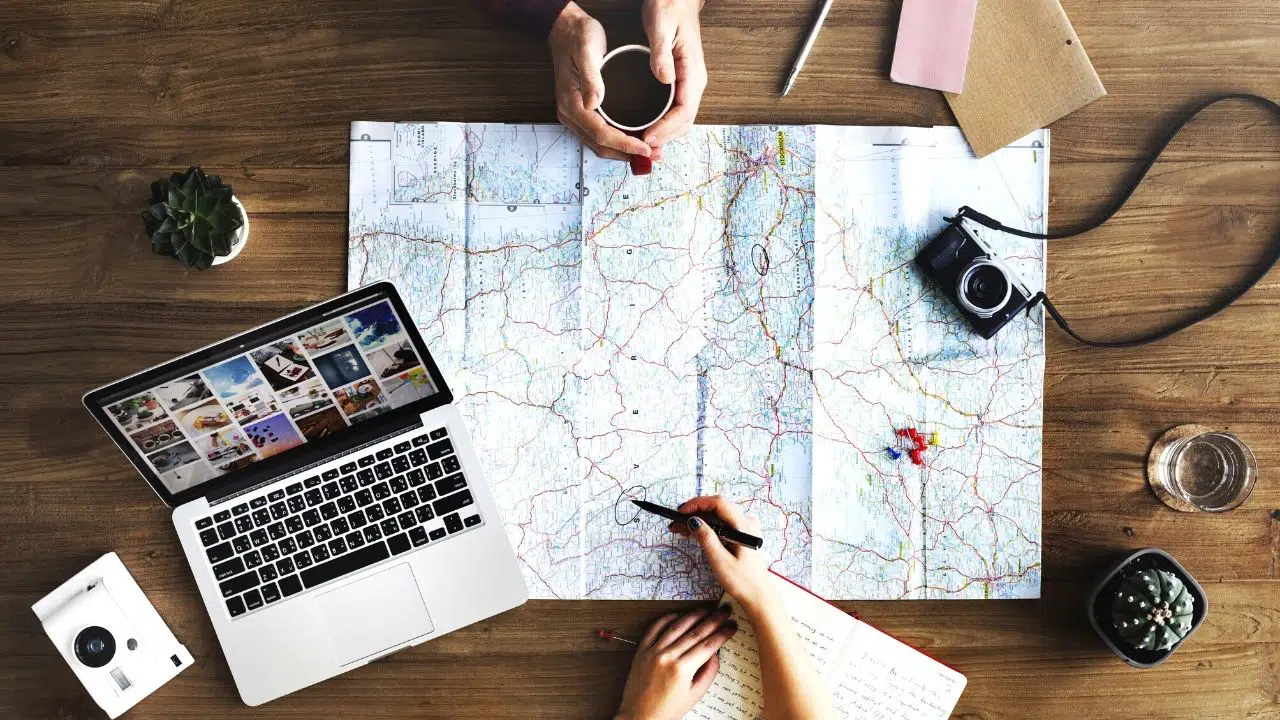
How to Plan a Vacation: 12 Tips for Planning the Perfect Trip
We all could use more vacations. That should go without saying. But as far as planning our next great trip goes, well, let’s just say sometimes we end up needing a vacation from planning our vacation.
And let’s face it, some of us have been out of the vacation planning game for a long time now.
Between travel restrictions, being married to work, or simply being a terrible planner, you’re here because you’re struggling to put together a solid plan for your next vacay.
But there’s no need to stress. We’ve put together 12 helpful tips to take you from troubled to triumphant and leave you with a foolproof plan for how to tackle your vacation planning one step at a time.
Table of Contents
1. choose your destination.
- 2. Pick Your Travel Partners
3. Determine Your Budget
4. decide when you’ll go, 5. research travel deals, 6. ask for time off, 7. find a great place to stay, 8. research the area, 9. plan your itinerary (or don’t), 10. get your documents in order, 11. decide on travel insurance, 12. minimize travel risks.
When planning a trip, the first step is one of the most fun … deciding where you want to go for your vacation. The options here are endless, from vibrant and energetic cities to magnificent national parks and palm-studded islands.
Whatever you’re looking for, you can find the perfect travel destination to make your dream vacation a reality.
It doesn’t even have to be a specific place to start. If you find yourself too spoiled for choice, try narrowing it down first by region to give yourself multiple destinations to choose from.
Suppose you know you want to have a boozy getaway in wine country. Then you can start narrowing down your travel destinations to include places like Napa Valley, Bordeaux, and Tuscany.
Or maybe you want a relaxing vacation in the tropics. Then you know you can cross off most of the continental US and start looking to places like the Caribbean for your ultimate getaway.
You don’t have to start off married to a specific destination just yet.
In fact, it may be better to start with only a vague idea instead.
This way, you can adjust your plans to allow for changes in your budget and your time-off schedule and score the best deals possible for your trip.
2. Pick Your Travel Partners
We’ve all heard the saying: “It doesn’t matter where you’re going. It’s who you have beside you.”
Well, when it comes time to plan a trip, that couldn’t be more true.
Trips—and how you plan them—are defined by the people who take them, from family vacations to epic bestie adventures.
Sometimes, other travelers aren’t a requirement at all.
Solo travel is on the rise, and more and more women are doing it by themselves , from planning a quick weekend trip somewhere close by to traveling abroad and visiting a foreign country solo.
And, of course, the answer to how to plan a vacation will differ immensely if you travel with family , plan a trip with friends, or even go it solo.
With a family, you may need a more disciplined plan, with precise itineraries for what you’re going to do and when. Whereas with friends or alone, you may be more inclined to go wherever your feet take you. You also may be less picky about where you stay and not mind traveling off the beaten path when something catches your interest.
These are all things to consider as you make your travel plans.
Now that you have at least a basic idea of the where, why, and who of your how-to-plan-a-vacation master blueprint, we can start talking budget.
This is usually the worst part of trip planning—at the very least, it’s in the top three.
Don’t worry, it isn’t nearly as bad as it sounds.
Okay, yes, this is the part where most of us have to start saving money and figuring out how much we need to afford our next trip and what that’ll cost in terms of time and effort. You have to start asking yourself questions like, will you need to work more hours, set aside more money each month, or cut back spending in other areas to afford your trip?
But most people think of their travel budget as an obstacle to their dream trip. Of course, there’s bound to be some bad blood in the mix if you think of it like that. Instead, think of your travel budget as the little piggy bank or money jar you kept as a kid.
Remember the incomparable joy you felt at adding more money to your stockpile, whether Christmas money, weekly allowance, etc.?
Think of your travel budget just like that piggy bank and know it’s going to need filling before you can start booking all your plans. Use that to incentivize your decisions and give you that little boost of joy as you put each dollar away, knowing the cause is a worthy one.
And this is where having a more general destination comes in handy, too, as you can plan a trip around your budget. Set on an escape to wine country but looking for a less expensive option than Tuscany? Maybe Napa Valley will do the trick instead.
When you’re going to go is almost as important as where because the timing can affect just about everything in the trip planning process, from how much money you spend to how you spend your time .
This is one of our key takeaways for how to plan a perfect vacation: travel during your destination’s shoulder season.
The shoulder season is that time between peak season and low season. And this sweet spot is the gift that keeps giving, with cheaper flights, lower hotel rates, smaller crowds, and more.
On the other hand, if you plan your next trip for a holiday or peak travel time, prepare for inflated prices and larger crowds. If it takes place at a specific time—like during a famous festival or peak tourist season—then start your planning process early .
Savvy budget travelers know that having a solid budget in place before you start your planning process is key to getting the best deals and saving money.
Two reasons.
- You want to look for specific ways to save money, not go overboard because you found “deals” that you didn’t want to pass up.
- It’ll be that much more satisfying to see how much money you save—and how much you come in under budget—from all the deals you nab during your travel planning.
Take advantage of countless online resources to help you compare prices and score the cheapest deals. Here are just a few to get you started.
- Google Flights – for comparing flight prices from multiple airlines
- Kayak – for finding cheap hotel room bookings
- Airbnb – for locating fantastic vacation rentals
While accommodations can take up a sizable portion of your budget, airfare tickets are arguably one of the most expensive parts of travel. To make matters worse, finding and booking flights can often be a nightmare.
If you want to be sure you never miss out on great flight deals in the future, try signing up for Next Vacay ! You may even find yourself with some new travel inspiration, as NV sends you all the best airfare deals to domestic and international destinations available right out of your home airport.
You can even book directly through the airline to use travel points for a discounted or even free flight!
With a budget in place, you can search for the deals that’ll keep you at your budget thresholds or below. So, when a great deal from Next Vacay comes in several hundred dollars under budget, you’ll know it’s one you won’t regret snatching up right away!
Get Secret Flight Deals
If you’re not planning this trip because you already have time off approved, schedule time in your calendar to speak with your boss or submit your time off request as soon as you’ve nailed down the dates you want.
Try not to schedule your request off during your busiest time at work or when you have a lot of unfinished projects awaiting completion.
The earlier you get your request in, the better positioned you are to have your time off approved. Then you can start cementing your travel dates and itinerary.
Also, make sure you get the confirmation of your time off in writing. This way, if something happens, you can refer your boss back to the written confirmation and dispel any confusion.
Booking accommodation for your trip shouldn’t be complicated. We touched on this a bit earlier when talking about how to score the best deals on your travel, but plenty of search engine websites exist to help you compare prices on accommodations and get the best rates. We recommend starting with a few at a time:
- Airbnb
- Booking.com
- Google Hotels or Google Vacation Rentals
- Hostelworld
Who you travel with could also affect your accommodation plans, so keep the needs of your travel group in mind.
Are you looking to stay in boutique hotels, secure a whole vacation rental for yourself, or simply book a single bed in a hostel? Do you need to make meals or wash clothes during your trip?
Approach how you plan a vacation with this mindset of asking questions to hone in on what will work best. This way, you ensure you’ll find something to accommodate your group and fit your travel budget.
There’s more fun to be had in your travel planning. One of our favorite parts of planning a vacation is detailing the trip! That means once you’ve gotten some of the particulars, like budgeting and finding deals, out of the way, you can start researching where you’re going!
This research can be as brief as or in-depth as you want. However, we always vote to do a bit more research than not here, especially if you’re visiting a foreign country. We can think of fewer things worse than finding out about an incredible sightseeing destination or local eatery on the last day of our trip. Trust us, it’s happened before, and it’s not fun.
Not to mention, doing some recon on your destination is a great way to drum up excitement for your trip. It can also help you iron out an itinerary—if you’re into those.
Here are some helpful travel tips to get you started:
- Look up famous sights or experiences at your destination (research travel blogs, recommendations from locals, and Google’s handy Things to do feature).
- Note the average length of any activities you’re interested in.
- Check out distances between activities and your lodgings (try checking out multiple locations with Google Maps).
Once you’ve got a list of things you’re interested in seeing and doing, you can narrow it down further. Consider this intro lesson 101 for the itinerary portion of our how-to-plan-a-vacation breakdown.
Start with the things you:
- Want to do most
- Fit in your budget
- Are easiest to get to
Then you can purchase tickets or time slots based on how busy you want your day to be and travel times between different attractions.
If you’re not the itinerary type, don’t feel like you have to be just to check this off your travel planning list.
Instead, try making plans for must-see attractions and purchase those tickets. Then leave the rest of your schedule free to wander down random streets, linger somewhere with a scenic view, or slip into other attractions that have same-day ticket slots open.
And for those by-the-book travelers, don’t stick to an itinerary at the cost of your enjoyment.
Just because you’ve planned to visit something one day doesn’t mean it can’t be moved around or struck from your itinerary entirely if needed. Sometimes, you just need a day to sit and do nothing but enjoy the fresh air or have a drink with a newly made friend.
Make plans, but don’t be afraid to break them.
Okay, now that you’ve gotten a chance to have some fun, it’s time to wrap up the last few details of your trip planning.
First and foremost, that means getting all your documents in order.
A quick and relatively painless way to make sure nothing gets left at home is to create a checklist for all your essential documents and confirmations:
- Passport or visa
- Drivers’ license/ID card
- Flight booking confirmation
- Accommodation booking/order confirmation
- Tickets to attractions
- Vaccination record or negative COVID-19 test result
- Travel insurance
The more digital options you have, the better, as that’s fewer physical documents to carry around. You’re also less likely to forget your phone on a major trip. But a checklist will do the job of making sure you get everything you need together, so you don’t have any last-minute panic attacks at the airport.
Travel insurance isn’t always necessary when you decide to hit the road. Still, it can help relieve some stress knowing that you’re covered if something happens before or during your trip.
Different types of travel insurance will ensure coverage in different situations, so it’s crucial to familiarize yourself with the primary forms of coverage available:
- Trip cancellation, interruption, or delay insurance
- Travel medical insurance
- Emergency medical evacuation coverage
- “Cancel for any reason” coverage
- Baggage and personal belongings
- Car rental collision insurance
You may find that some of these are covered already through things like your credit card, renters or homeowner insurance, or even your current health plan, so double-check before adding on the expense of travel insurance.
Keep in mind there are benefits and drawbacks to adding travel insurance to your trip, so give time to consider all of them and determine if travel insurance is right for you.
- Provides peace of mind
- Offers compensation for lost items
- Covers medical expenses
- Helps save money if something drastic does occur
- Can be expensive
- May not cover pre-existing conditions
- Claims could be rejected due to technicalities
Whether or not you need travel insurance will be up to you and if you’ll feel comfortable traveling without. Take the time to do your research and find out what you may already have covered!
At this point, we’re so close to being ready to fly you might be inclined to zip up your suitcase and call it a day. We’re almost there, we promise. Before you fly out, there’s just one last check you need to do in your travel planning: prepare for the worst.
It’s the last thing we want to imagine, especially on a trip abroad, but taking a few precautions ahead of time will doubtlessly save you lots of anxiety and dread should you run into trouble on the road.
So, how can you prepare for the worst when you’re not sure what the worst might be? Here are a few things you can do ahead of your travels to make sure you’re not caught unprepared.
- Sign up for the Smart Traveler Enrollment Program (STEP) – helpful for getting in touch with your local embassy and friends and family during emergencies
- Make copies of your essential documents – keep a physical copy of your ID and passport with you and keep electronic copies of documents like travel insurance, credit cards, etc.
- Research common scams – familiarize yourself with typical scams at your destination to avoid risky situations and tourist traps
- Inform your credit card companies you’ll be traveling abroad – ensure your credit card companies know you’ll be out of the country so your accounts aren’t frozen
- Bring backup credit cards – try carrying one card on you and leave another at your accommodations in the event one is lost or stolen
- Secure your valuables – ensure your valuables are locked up tight at your accommodations or kept in hard-to-reach places on your person to reduce the chances of theft
It’s never fun to imagine all the ways your trip might go wrong, but taking the time to make a few plans for what-if scenarios can help you avoid these situations during your vacation. And if they do still happen, you can minimize their impact on your travels and hopefully still enjoy what remains of your trip.
Which helps make all the planning, checklists, and scheduling worth it!
Related Posts

- LATIN AMERICA & CARIBBEAN
- MIDDLE EAST
- US & CANADA
How to Plan the Perfect Vacation: 10 Step Guide

Do you know how to plan a trip?
I love planning trips. Like, looooooooove planning trips. I have entire detailed itineraries for countries I’ve never visited. Friends will ask me how many days they should spend in a city they know I’ve never even been to. And I will STILL have an answer. I can get carried away for hours daydreaming on Pinterest or reading blogs, learning all the cool things to do and see in our big, bright, beautiful world.
For me, planning is a fun part of taking the trip itself. It helps build anticipation and gives me something to look forward to before takeoff. But maybe you’re not that way. And that’s why I made this guide on how to plan the perfect vacation or trip. I want you to be empowered and find the planning process to be a fulfilling part of your travel experience – not a major chore to complete before the fun begins. Follow these 10 steps on how to plan a trip, and you’ll have your itinerary planned with minimal stress and maximum excitement.
Ready? Then let’s jump to it!
STEP 1: CHOOSE YOUR LOCATION
What are you in need of? A calm beach getaway? One big party? Ancient history? Nature and hiking? If you don’t already have a place in mind, get some inspiration. Pinterest, Instagram, the Skyscanner “everywhere” search option are great stating points. The Skyscanner one is especially good if you are constrained by work for time of year or want to leave ASAP. Finding inspiration is one of the most fun steps of how to plan a trip.

Recommended reading: 20 Trips to Take in Your 20s and My Travel Bucket List
Once you’re inspired by a place or two (or three), make sure they are all viable options.
- Check Travisa to make sure you can get in without a visa or have enough time and money for the visa process. Do you have a passport if you are going abroad? Many countries require it be valid 3 – 6 months after you arrive. If you need a new passport, give yourself 6 weeks from when you apply before expecting it back. Keep note of the visa and passport costs if any.
- Check CDC Travel to make sure you have all vaccines necessary or can get them easily and in time. For example, yellow fever vaccine can take awhile to get. You can also check for any outbreaks on this site, like measles. Research the costs or necessary vaccines and keep note.
- Check your country’s Travel Department website to make sure there are no travel alerts you are unaware of. Or, do a quick Google search of the country or city name to skim major news (no protests, no weather related problems, etc). Right now as I am writing this, there are violent protests in both Paris and Venezuela, which I can see by simply Googling those two terms.
- Consider your budget, if you have one. Some locations might be expensive to fly to but cheap once you are there (Thailand). Others might have a sweet low-cost flight, but housing, meal, and ground transport costs will be high once there (Iceland).
STEP 2: CHOOSE THE TIME OF YEAR
Are you constrained by work or family obligations? Narrow down what months or weeks you have as options and go from there.
Look up temperature averages and precipitation by month . Where I’m from, summer means no rain, ever. But in many places, June through August is the rainiest, most humid time of year. Make sure you know what to expect.
Look up peak tourist season to see if you can manage the shoulder season. How bad would it be to go during offseason ? Is it worth the savings? Will the place be entirely shut down? Santorini in the off season – probably not worth it. Colombia in the off season – probably worth it, due to consistent weather year round.
STEP 3: DECIDE WHAT TO DO & SEE THERE
This is my favorite part of how to plan a trip! But this will also take most of your time. Block off a few hours to a few day to this, depending on if your trip is one week long or one month…or longer!
Decide what to do and where to go. Is just one city enough to keep you busy? If not, can you do day trips from it? Will you hit up multiple cities on your trip? Should you consider flying into one airport and flying out of a different one ? Write a list of all destinations, sites, and activities somewhere. I like Excel, because I can later add extra columns for costs or dates, etc. Others use Word, but even a simple “notes” application will do if your trip does not require much detail.
For a run-down of the biggest, can’t-miss attractions, simply Google “[location] attractions.” You want to make sure you don’t miss the basic stuff. PlanetWare gives housing pricing suggestions at the bottom of most articles, so you can confirm your destination isn’t way out of your budget before getting too deep into planning.
- Example: look up what larger attractions you want to see and activities you want to do, but you don’t need to look up museum hours or book every tour right now.
Next, get more inspiration on Pinterest, for unique places and lists by bloggers. Search for itineraries to give you an idea of how much time to budget. If you are a go-go-go every day traveler or only like a couple attractions a day, keep this in mind as you skim itineraries. It can help to create a Pinterest board to save things to come back to later.
Also look up “things near [location]” or “[location] day trips.” If your trip is to just one city, search the attractions in the entire country. Make sure you’re not going to miss something good while you’re there. You might learn about it after returning back home and regret not seeing it while nearby.
Is there anything you would be EXTREMELY bummed to not do? Like the Inca Trail? Or a music festival? Sporting event? Make sure there is availability – consider booking these items the same time as or even before your flight.
STEP 4: CREATE A ROUGH ITINERARY
This is also my favorite part of how to plan a trip!
Get a map app , or use GoogleMaps, and save key locations so you can have a visual idea of your trip. See why I love Ulmon for planning trips here (they don’t pay me to say this).
If you are staying in one city, see what sites can be grouped together by area. Plan certain areas for certain days. GoogleMaps how long it takes to walk between the furthest points in the city, to have a rough idea of how much ground you can expect to cover in a certain amount of time. Then, click the train icon to get a sense of the metro system and how useful it is to you, if there is one.
If you are moving around between cities, look up how to get from point A to B. You don’t need all the details right now, but make sure you can get from A to B and B to C in a way you are comfortable with (is a 10 hour bus ride okay?) and in a way that fits your budget. Trains can be expensive, remote locations might require a private car, flights can be stressful to re-pack for. Use Rome2Rio , TripAdvisor, and Google Maps for this.
- Example: look up that you can take a train, how long it will take, and that it is in your budget. But you do not need to look up the train schedule right now.
After all this, group your Excel sheet or Word doc items or list by day. Now you have an idea how many days you will need for your trip. This is not your actual itinerary. This is just to get an idea of how many days minimum you will need.
STEP 5: BOOK YOUR FLIGHT(S)
I love Skyscanner as my search engine. It includes budget airlines and domestic airlines from abroad that larger travel search engines don’t include. If you don’t like the price you see, you can set a travel alert and be emailed as prices change. The flight can be the single largest expense, so play around with the dates and month if you can.
I’ve also been using Google Flights more and more lately to search flights. I love how easy it is to customize searches. For example, you can add multiple departure and arrival airports (just hit the plus sign in the entry field), filter on certain connection airports, and get flight price alerts for any changes saving all of your filters.
Rumor has it that you should book either six months or more out or two months or less out . Budget airlines, like RyanAir , get more expensive as the date nears, but they can have sales around holidays.
Depending on how far out your trip is and how certain you are, be sure to read the cancelations and exchange policy . Be careful of discount search engines that make it impossible to change flights, like Student Universe.
Recommended reading: The Ultimate Guide to Flying RyanAir
Keep in mind luggage policy . One flight that includes baggage might be cheaper after you add round-trip baggage to a cheaper flight.
STEP 6: BOOK YOUR ACCOMMODATION
This is by far the most overwhelming part of how to plan a trip. (It’s my least favorite part.) But the further out you do it, the more options and lower prices you will have, making it quicker and painless-er (er…just go with it).
Use your map app to see what areas are convenient. Can you use a metro, or should you stay within walking distance of everything? Are all areas safe and welcoming for all kinds of tourists? Do a quick search on neighborhoods.
Do you have a budget? Shoot for an average cost per night if you can (# nights/housing budget).
How much time will you be staying in the hotel? If you are going to Cabo, Mexico or the Maldives, you are going to be spending most of your time in your accommodation. So it’ll be worth splurging more. If you will be busy sightseeing every day from dusk ‘til dawn, then all you need is a safe, clean place to sleep.
If you are staying somewhere long enough, AirBnB can be great. Otherwise, coordinating check-in and check-out time and leaving bags somewhere else if you arrive earlier or leave later can be a hassle. Be careful to look at the total cost and not just the per night cost. Some rentals rack up prices with “cleaning fees” after luring you to click with an attractive “per night” rate. In general, AirBnB is GREAT for groups. If you’ve never used AirBnB before, you can save 15% off your first booking by using this link to sign up.
Booking.com – This is personally my favorite site for booking housing. I really like their interface. Also, many properties allow free cancelation. You can check what comes with each room easily, to make sure there are things like a safe or a locker if you need them. If you’ve never used Booking.com before, you can get 10% back from your first booking when you use this link .
HostelWorld – This can be great if you are traveling solo. Hostels have a bit of a bad rep in the USA. But you can book private rooms too if you are worried about safety and privacy but still want a social experience. There are also often all-female rooms and all-male rooms, if that makes you feel more comfortable. Make sure there are lockers and a public kitchen if you need them. Also check if towels are included or rented out.
If you’re really looking to save money, consider house sitting or couch surfing . They both are also great ways to meet locals and have a more authentic experience in a city.
Regardless of what or through what you book, always look at TripAdvisor for user photos (not just photos submitted by the property). Use the search box for important words mentioned in comments, like “bed bugs,” “heater,” “AC,” etc. Similarly, do a GoogleMaps street view to check out the area if you are worried about comfort/safety.
Don’t forget to consider things like:
- cancellable reservations
- free breakfast or not – maybe you are in a location where you really want to eat breakfast out in a cute café anyways
- if there is a kitchen if you are trying to save money or be healthy
- do they accept your credit card
STEP 7: PREPARE YOUR FINANCES
If you are traveling abroad, do you have a credit card with no foreign transaction fees ? Will you need cash for this location or is it credit card friendly? Will you be gone long enough that you should get a debit card without foreign transaction fees, or will you only pull out a small amount of cash once?
Let your bank know where you will be, so they do not think your charges are fraud.
Are ATMs common in this place? In Iceland, there is no need to stray from credit card – even at tollbooths and gas stations. But in Cuba, you will need to exchange all cash before leaving the airport. And there is 10% fee for exchanging USD in particular!
Start saving for your trip if necessary. Buy less Starbucks, drink that free coffee or tea from work instead, or make your own at home. Eat out less, stock up on easy meals from Trader Joes. Cook in bulk on the weekends to save you from picking up take-out on your drive home from work.
STEP 8: SOLIDIFY ITINERARY DETAILS
Plan how to get to each accommodation stress-free after you land. Are taxis safe? Should you ask your hotel to arrange pick up? Will you have energy to use public transport right after a flight?
Is there anything you need to book ASAP ? Going up the Statue of Liberty or Eiffel Tour require reservation months beforehand. Trains in Italy can be very cheap if you book in advance, but get more expensive as the date nears. Spots on the Inca Trail sell out 5 – 6 months out for peak months, and even a day trip to Machu Picchu requires advance booking and a print out. Japan trains can be expensive, but getting a rail pass to save money needs to be completed entirely before you leave your host country.
Look up entrance fees (some attractions have free days), opening hours and days, excursion options, costs, departure points. Look up any other cool, non-attractions, like restaurants or local special things (owl and cat cafes in Japan). Is this region of the world known for coffee? Or pastries? Be sure to sample some of their best. Buzzfeed can be a great search tool for this. Scan Tripadvisor for top-ranked restaurants by other tourists. You can use Instagram and Pinterest for inspo too. Rearrange days in your original itinerary as necessary.
Assess your budget . Add a cost associated with each activity in one column in your Excel sheet (or at least for the large activities, transport, and housing). This way you can easily sum them to see total budget so far. Don’t forget to add an average cost of meals per day into your budget. Add some wiggle room – things won’t go according to plan.
But don’t plan too much . Leave some meals unplanned to discover on your own. Don’t jam pack each day to the brim. Leave time for wandering unplanned streets, for doubling-back to areas that you loved, for recommendations by locals you meet.
STEP 9: START SHOPPING – BUT ONLY IF YOU NEED TO
Depending on your trip, you might need some new gear. Trekking poles, mosquito repellent, waterproof phone case, underwater camera, lock for hostel lockers, a proper winter coat. Make sure to give yourself enough time for your items to arrive and to return them and potentially reorder. If your trip is way in the future, set a date by which you need to have everything and put a reminder on your phone or calendar at least two weeks before that date. You don’t want to be running around closer to your trip, so get this out of the way now.
STEP 10: DO YOU NEED TRAVEL INSURANCE?
If you are going somewhere familiar, or where you are already covered for what’s probable, you might feel comfortable forgoing this step. But strongly consider it for locations where you are more likely to get sick, politically tumultuous locations, activities where you might need saving, or far away places with expensive emergency flights home. Add this to your travel budget.
Congratulations – your trip is ENTIRELY planned! And now you know how to plan a trip. Pat yourself on the back, now. Go on, you deserve it! Now you can relax while you count down the days ‘til your trip of a lifetime and do fun stuff to prepare. (Like learning a bit of the language with Duolingo !)
WHAT DO YOU THINK?
Do you now feel confident on how to plan a trip? Are you ready to plan your next one? Let me know what you think in the comments below! Do you love to plan, or do you put it off as long as possible? What are your own tips and tricks on how to plan a trip?
Like It? Save It for Later on Pinterest.

Further Reading...

Complete Guide to Flying RyanAir (& Not Getting Ripped-Off)

The Beginner’s Guide to Staying in Hostels

20 Trips to Take in Your 20s
15 comments.
Embarking on adventures is a thrill I can’t resist! Snatching up a great flight deal is typically my first step in trip planning. It’s amazing how those unexpected destinations end up becoming some of the most memorable journeys!
Planning trips is one of my favorite pastimes as well! My initial move is usually snagging a flight deal. I’m all about seizing those fantastic airfare bargains, and they often lead me to embark on adventures to unexpected destinations!
Insider Tips For Selecting The Ideal Transportation To Port Canaveral - INSCMagazine
[…] When planning your transportation to Port Canaveral, take into account your cruise’s embarkation time and the flexibility offered by different transportation options. Cruise departure times can vary, and unforeseen delays or disruptions may occur, so selecting a transportation service that offers flexibility with scheduling can provide added peace of mind. Opt for a provider that allows you to adjust your pickup time or location if needed, accommodating any last-minute changes to your travel plans. […]
Advantages of Having a Vacation Club Membership - Melanom
[…] hardest part of going on vacation is planning it. You’ve got to book the hotel, decide on your itinerary, and look for places to eat. […]
Hello Em, and thanks for the very informative article! It was well written and I used many of your tips during my last trip to the Baja in Mexico. One other tool I used was the free trip planner from Geovea https://geovea.com/trip_plan/new_trip to create and share my trip, and estimate my trip budget. You can also take your itinerary with you on your phone for navigation. I really appreciate all of the great travel guides and already planning my next trip 🙂
Planning a trip for me is part of the fun. I really enjoy it. Researching the place and choosing every detail. This post is very well explained. Thank you 🙂
That Travelista
Glad I’m not the only one! It makes me get so excited for the trip 🙂
So many great tips in this post – I’m always looking for good holiday tips!
Thanks, Ciara! 🙂
I definitely love planning trips too! It’s almost better than the actual thing lol but it can still feel overwhelming sometimes. This is a great step-by-step guide so I don’t get too far ahead of myself. Thanks!
Very true! I usually get overwhelmed when I finally have to decide accommodation!
Planning trips are my favorite past time! I usually pick my destination based on ticket prices. Thank goodness for sites like sky scanner!
Isn’t it great?! I still remember the first time I heard of Skyscanner…. what a life-changing day that was 😉
I love planning trips too! My first step is usually buying a flight. I don’t typically decide on a destination until I find a great flight deal, which leads to me planning trips to some unexpected places!
That’s very true! I think I just have too long of a bucket list, so I typically already know exactly where I want to head next!
Leave a Reply Cancel Reply
Save my name, email, and website in this browser for the next time I comment.
This site uses Akismet to reduce spam. Learn how your comment data is processed .
20+ Photos to Inspire You to Visit the United Arab Emirates
How to travel carry on only: a beginner's guide to minimalist packing, that travelista.


How to Plan the Perfect Road Trip
Figuring out road trip logistics can get overwhelming—unless you have the right plan in place..
- Copy Link copied

Planning a road trip doesn’t need to be a chore.
Photo by Casey Horner
Road trips can be a wonderful way to travel. Offering the freedom to stop whenever, wherever, they allow you to explore lesser-known corners of the globe, take unexpected detours, and adventure at your own pace. But for many, planning a road trip is less thrilling and more overwhelming—especially if you’re thinking of driving in an international destination with extra logistics to consider.
Fortunately, we’ve done the hard work for you. From choosing the perfect route to making sure you have enough snacks and songs downloaded for the drive ahead, use these tips and resources from the team at AFAR to figure out how to plan your next road trip.
Pick a route: road trip ideas for your itinerary

The Blue Ridge Parkway is an iconic road trip route in the United States.
Photo by Anthony Heflin
The first (and, dare we say, most fun) step in planning a road trip is to choose your route and itinerary—be it in the United States or somewhere further afield. Whether you have three days or three weeks, below are some of our favorite road trip ideas around the world.
United States
The United States and road tripping are a classic combination. But with hundreds of thousands of miles of highway throughout the country, there are a seemingly infinite number of routes to choose from. Narrow down your options with these road trip ideas:
- Pacific Coast Highway : On this classic, coastal California road trip (one of seven must-drive Golden State itineraries ), road-trippers will meander from Los Angeles to San Francisco, stopping to take in awe-inspiring views of the Pacific and sample seafood along the way.
- Oregon Coast : Further north, the Oregon portion of the Pacific Coast highway, with its rocky coastlines and evergreen forests, makes for an ideal road trip for outdoor enthusiasts.
- Colorado Hwy 50 : Prefer mountains over beaches? Then set your sights on this Colorado road trip—best done in the fall—that will take you through small mountain towns, national parks, and historic sites.
- A classic Arizona itinerary : This route starts in Phoenix and takes travelers through Sedona, Scottsdale, and (of course) the Grand Canyon on a road trip of some of Arizona’s most iconic attractions.
- Southwest national park route : Explore five of the United State’s most iconic national parks in this 10-day national park-focused itinerary across Utah and Arizona.
- Blue Ridge Parkway : One of our favorite East Coast road trips , the Blue Ridge Parkway will delight with music, food, and scenery—especially as that fall foliage starts to peak.
- Route 66 for whiskey lovers : Put a new spin on the classic Route 66 road trip with this whiskey-filled itinerary, including pit stops to some of the best distilleries and bars along this iconic highway.
- Minnesota River Valley National Scenic Highway : Midwesterners, we haven’t forgotten about you. A road trip along the Minnesota River Valley National Scenic Highway offers a chance to see endangered landscapes, historic sites, and a German-style brewery that survived Prohibition. (See our full list of Midwest road trips. )
>> Read more: The 17 Best Road Trips to Take in the United States
Europe and other international destinations
Before buying that Eurail Pass, consider exploring Europe’s scenery by car. Driving in Europe may mean learning a few additional rules of the road (and, depending on the country, getting an international driver’s license ) but it’s worth it for those who want to explore harder-to-reach areas. Here are some European destinations best seen by car:
- Spain’s Catalonia Coast : Skip the beaches of Barcelona and instead head to the nearby Catalonian Coast, where you’ll see Romanesque style churches and the fortified medieval village of Escaló, and enjoy chocolate in Agramunt where the oldest chocolate factory in Europe still operates.
- Ireland’s Wild Atlantic Way : Drive 1,500 miles of shoreline of Ireland along the Wild Atlantic Way, one of the longest coastal touring routes in the world. Visit the pubs, historic sights, and memorable coastal scenery along the way.
- Scotland’s North Coast 500 : Take a scenic drive through rugged seashores and hilly mountainsides on northern Scotland’s 516-mile-long North Coast 500 route.
- Iceland’s Diamond Circle : Turn a visit to Iceland’s landmarks into a road trip by traveling along the Diamond Circle. Experience the geothermal baths, whales, and beautiful views of the horseshoe-shaped Ásbyrgi canyon.
Need more ideas? Consider driving through Mongolia ’s deserts and green valleys; explore beaches, wildlife, and wine country on South Africa ’s Garden Route; turn this one-day drive along Australia’s southern coast into a weekend visiting national parks, beaches, and Beauchamp Falls; or head out on one of the most epic road trips through South America on a Patagonian drive through small Andean villages and dreamy lakes.
>> Read more: 8 Incredible European Road Trips to Take
Choose a vehicle for the journey: car, van, or RV?

Sure you could drive your own car, but if you want more room and a flexible place to sleep, an RV or van is a great alternative.
Courtesy of Airstream Inc.
Whether you’re taking your own car cross-country or renting one abroad for the weekend, the most essential part of any road trip is choosing the right vehicle.
While a standard rental car works for most road trips, renting an RV or camper van might be a better choice for those who want flexibility in where they stop for the night, to sleep outdoors in comfort, or even take their work setup on the go.
Alternatively, consider driving an electric car to minimize your eco-footprint. Roadways are becoming increasingly more accessible to these types of vehicles ( Colorado is one great example of a state with EV-friendly routes ), making the choice of going electric more feasible and road trips more sustainable.
>> Read more: The Best Places to Take Your Van on a Vanlife Adventure
Start booking: select the stops along your route
Once you know where you’re going and how, it’s time to nail down the details by mapping your route, picking the stops along the way, and booking hotels, restaurants, or activities.
It can be a lot to keep track of, so consider using a road trip planning app like Roadtrippers to help with the route and pit-stop planning. If you prefer to play your overnight accommodations by ear, download Hotels Tonight to book last-minute hotels as you go (if you aren’t already driving your bed around with a van or RV rental).
If you want to take the stress out of planning entirely, though, there are also several companies that will plan your entire road trip for you, such as All Roads North and CrushGlobal , for a fee.
>> Read more: The Best Tools and Apps for Planning a Road Trip
Get ready to go: packing, entertainment, and snacks

Pack plenty of healthy snacks, like whole wheat crackers, to keep you fueled during long stretches of driving.
Photo by Bohdan Stocek/Unsplash
You have your itinerary picked out. Dates set, hotels booked. Your car (or RV, van, or stylish Airstream) is reserved and ready. Now all that’s left is packing your bags and prepping for the drive.
Pack your bags and your car
As for any trip, you’ll need to pack your standard travel items (clothing, toiletries, chargers, and the like). However, you’ll also want your car to be prepared in case of an emergency—no matter what adventure your plans may include.
Our essential road trip packing list details all the items you’ll need, but some additional, important items to bring on your drive include a car charger , like the Otterbox USB-C and USB-A Fast Charge Dual Port Car Charger ($30, otterbox.com ), to keep devices charged on the go. Also pack a car safety kit. Hopefully, you won’t have to use it, but a kit like the AAA Traveler Road Kit ($41, amazon.com ), will have you prepared in case of a dead battery, minor car issues, as well as some basic first-aid scenarios.
Prepare a few road trip snacks
Whether you plan to make something at home before you hit the road, or pick something up on the go, no road trip packing list is complete without a snack (or three). If you’re not sure what to bring, some of our favorite, healthy road trip snacks include:
- Nut butter , like Justin’s nut butter ($10 for 10, amazon.com ).
- Sliced vegetables , like carrots and celery.
- Coconut chips , like Dang Toasted Coconut Chips ($20 for 4, amazon.com ).
- Popcorn , especially lightly buttered and salted brands, such as Skinny Pop.
- Whole grain crackers , like Triscuit originals, which are easy to find on the road.
- Beef jerky , but not the highly processed stuff. Look for brands such as the New Primal , which are lower in sodium and sugar.
Be sure to bring along a cooler to keep everything fresh, and pack reusable cutlery for impromptu picnics along the way.
Download ways to stay entertained
To stay entertained on the road, load up your phone with podcasts, music, and audiobooks before you go. Old favorites are always good to have on hand (especially those songs you can’t help but sing along to), but if you’re looking for some new inspiration, here are some of our top picks:
- Podcasts: Download podcasts by Black creators and some of our favorites for road trips and long drives (including AFAR’s very own Travel Tales and family-friendly picks).
- Music : Listen to the best road trip songs of all time .
- Audiobooks : Get lost in a story with one of our 15 favorite audiobooks .
- Games : Try one like like Psych! Outwit Your Friends , ( apps.apple.com ; play.google.com ) for a little extra on-the-go entertainment.
>> Next: 16 Fall Road Trip Ideas Throughout the U.S.


How To Plan A Road Trip: Best Apps, Tools & Tips
by Mark and Kristen Morgan
Published: July 8, 2021
Updated: October 20, 2023
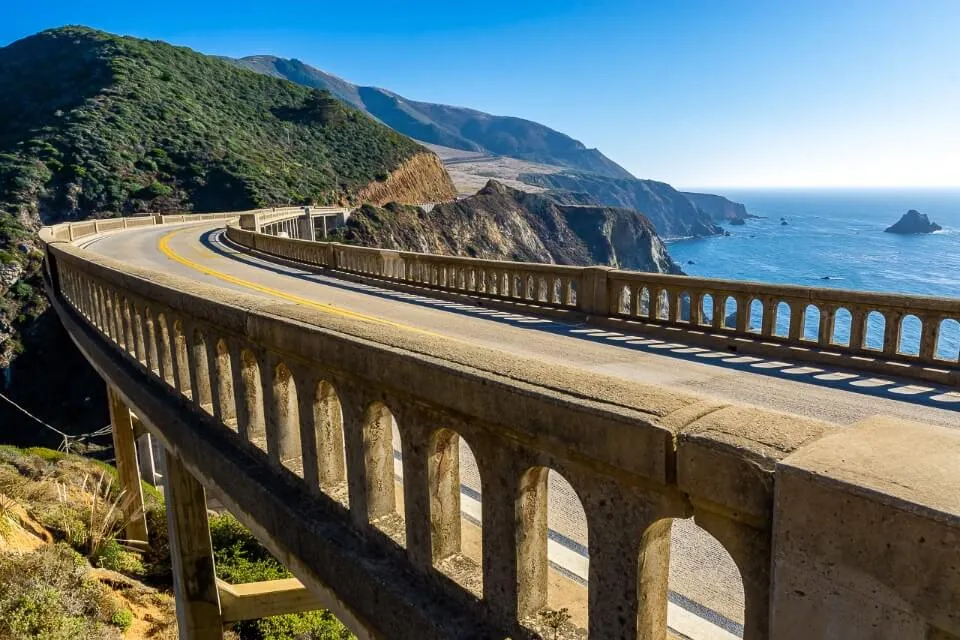
In this comprehensive step-by-step guide, we are going to explain how you can plan the perfect road trip. We want to help you prepare, save money and enjoy every minute of your upcoming bucket list worthy road trip.
We suggest you grab a pen and paper or a laptop to work through this road trip planning guide step-by-step. Many of the links in this article will give you additional information or help you directly book anything you may need.
Our ‘how to plan a road trip’ guide will cover:
- 10 simple steps to plan a road trip
- How to choose a destination and plan a road trip route
- How to create a road trip budget
- Important information on how to prepare your vehicle
- Best road trip planning apps
- Road trip tips and mistakes to avoid
This guide will use road trips across the United States as an example, but the information will apply to any destination you plan to take a road trip.
Bookmark or save this page so you can keep referring to this how to plan a road trip guide as you plan and prepare for your epic journey.
Let’s start planning a road trip!
What Is The Best Way To Plan A Road Trip?
The best way to plan a road trip is to break down the planning process into simple and easy to follow steps. So in this how to plan a road trip guide, we will show you 10 easy steps to follow when planning a road trip.
We will also highlight the mistakes you should try to avoid as well as give you some insider tips so your road trip goes as smooth as possible.
Planning for a road trip can be both exciting and overwhelming. But it doesn’t have to be difficult. Let us help you take away some of that road trip planning stress.
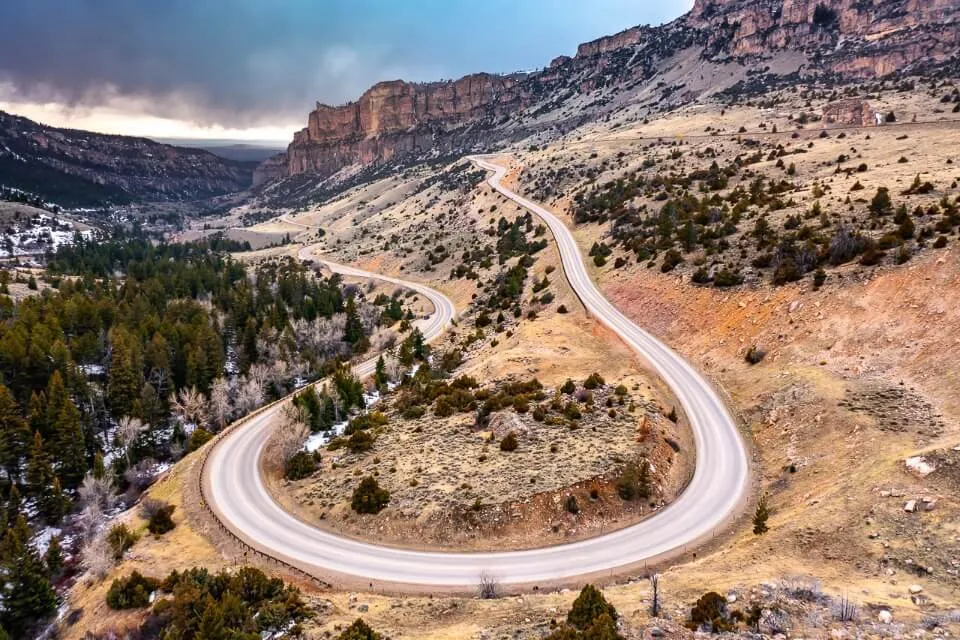
Key Questions To Consider
Having driven across the United States multiple times in all types of weather conditions, we have become pros when it comes to preparing for the worst.
Consider this guide a complete cross country road trip planner!
The best way to start planning for a road trip is to formulate a loose plan based on a few basic questions. Then we will fine tune your road trip itinerary, road trip packing list and accommodation options.
If you plan to road trip with others, make sure they are involved in the decision making process as well.
- Itinerary – What region do you want to travel?
- Timeframe – How long will the road trip be?
- Weather – What climates will you experience?
- Budget – How much do you have to spend?
- Vehicle – How are you going to get around? Car, SUV or Campervan?
- Camping / Sleeping Options – Where do you plan to sleep? Hotels, campsites or maybe in your car?
- Food – Will you cook your own food or eat at local restaurants?
- Must-See Experiences – Is there an attraction or site you really want to see?
Take some time to think about each question, but don’t worry because we will work through each road trip scenario with you.
10 Easy Steps To Plan A Perfect Road Trip
We will be honest and say this how to plan a road trip guide is a monster. It is almost 6,000 words in length. But our road trip planning guide is tried and tested.
We have taken years of road trip experience and whittled it down to concise and important information you will need for your trip.
This is will be only only guide you need for how to plan a successful road trip.
1. Choose A Road Trip Destination
The first step in planning a road trip is figuring out where you want to go. Do you want to drive cross-country? Or do you just want to visit a specific region on a short weekend getaway?
Do you see yourself soaking up spectacular scenery in national parks or would you prefer to take in famous city skylines like New York City ?
The beauty of a road trip is flexibility. You won’t be limited and held back by train schedules or late flights. You can also just pull over on the side of the road if something catches your eye.
Here are some of the best ways to research potential destinations for your road trip:
- Pinterest – Create travel boards on pinterest and save your bucket list places. We have several road trip boards on our Pinterest account, check them out!
- Instagram – This is an easy way to find epic road trips and new scenic drives. Use hashtags for specific destinations to find photos and videos from influencers (#usroadtrip).
- Travel Blogs – We may be a bit biased, but travel blogs are the perfect place to find road trip inspiration. Bloggers spend a lot of time researching and traveling to popular destinations. First hand experience is always priceless.
- Online Forums – Don’t forget about popular forums like Quora and Reddit . These forums can be a wealth of information from previous travelers who share tips and ideas.
- Personal Preference – Do you have a specific destination in mind? What are you waiting for? Life is short so plan your cross-country road trip with your loved ones to create lasting memories. Check our popular road trip itineraries here .
- Guidebooks – By definition, a guidebook gives useful information about a specific location or particular subject. We aimed to do just this with our location specific Guidebook itineraries to help you find all those local attractions easier. Click here to shop our Guidebook Itineraries now .
2. Determine Length Of Vacation
The second step when planning a road trip is to determine how long your road trip will be. While the amount of time may vary between people, the amount of time you spend driving everyday is an extremely important consideration.
How Long Is Too Long For A Road Trip?
From our road trip experience, it is best to have two weeks available for the duration of your trip if you plan to visit multiple states. This way you minimize your driving time each day while covering more attractions.
But if you only have a few days for your road trip, we would suggest trying to cover a smaller driving distance rather than trying to cram in a cross-country road trip. While you will cover less area, you will see more attractions everyday.
Long drive times are just not fun. In fact, if you spend many hours behind the wheel day after day, this can become both exhausting and dangerous.
The best way we have found to combat this problem is to limit how many hours you drive in a day.
How Long Should You Drive On A Road Trip?
Depending on your source, there are many different answers to this question. Some sources recommend you drive no more than 8 hours per day and some sources recommend you drive no more than 12 hours per day.
But let’s look at some math to get to the answer shall we?
If you assume an average speed of 70 MPH with an estimate of 500 miles driven per day, this would equate to just over 7.14 hours of actual drive time.
Keep in mind you may be able to drive faster or slower depending where you are planning a road trip. However, based on these numbers and our experience, we recommend you drive no more than 5-6 hours in a day.
Remember you also need to account for traffic, road work and stopping for gas or food. If you plan to drive for 8 hours and then get caught in traffic for a few hours, your road trip has gotten off to a really bad start.
Road Trip Tip : Try to factor in an extra day just in case something unexpected comes up. We like to call this your ‘fudge day.’
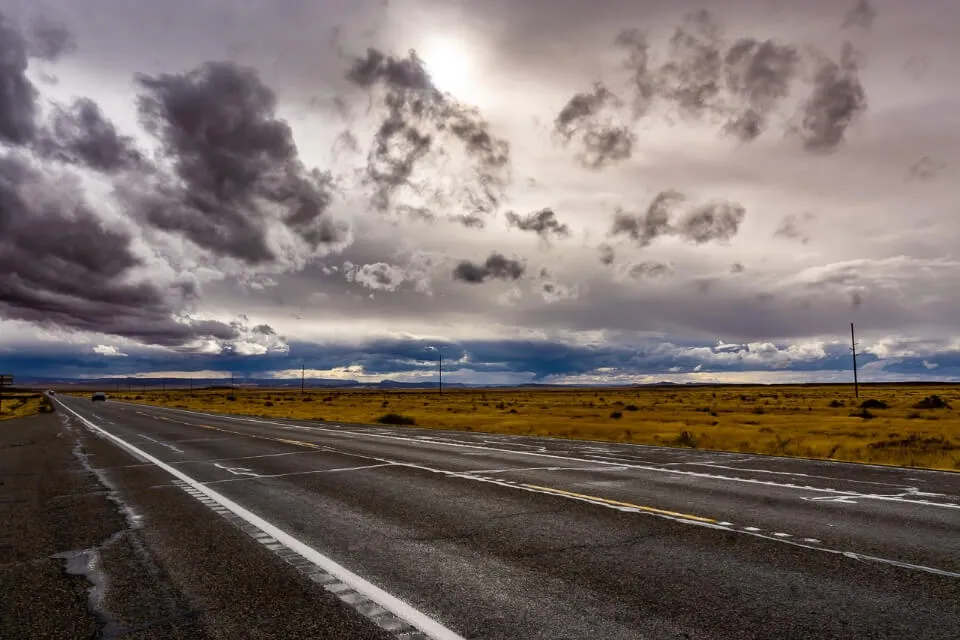
3. Create A Road Trip Budget
A road trip can be one of the most cost effective ways to travel if you are on a tight budget. But costs will greatly depend on your travel plans and travel style.
We recommend you create a road trip budget because if you don’t budget, you will most likely overspend. One of the best ways to minimise costs is to plan out your expenses.
This is what we typically budget for when planning a road trip:
- Accommodation (hotels, camping, etc.)
- Food and meal preparation
- Rental car or personal vehicle costs
- Major transportation (flights or trains if needed)
- Attractions
- Before trip costs (tent, cooler, hiking boots, etc.)
But luckily, there are many ways to save money when budgeting for a road trip. For example, if you are on a strict budget, you can choose to camp and make your own meals.
Alternatively, if you are don’t mind splashing out on luxurious accommodation and fine dining, find the places you want to indulge and calculate potential costs.
How To Calculate Your Road Trip Budget
The first part of planning a road trip budget is to establish a ballpark figure about how much you are willing to spend. For this example, we will use a $3,000 budget for a 10 day road trip.
This example is going to assume you are staying in hotels and plan to visit National Parks as well as a few major cities.
Setting a road trip budget for each day is key. Once you have a set budget, try your best to maintain this target goal. Let’s do some more math:
$3,000 total budget / 10 days = $300 / allocated budget per day
Now if you are traveling as a couple, this budgeted number is quite achievable. But if you are road tripping as a family, this budgeted number is not going to seem like much money.
Remember this $300 / day includes everything we mentioned at the beginning of this road trip budgeting section including gas, food, accomodation, transportation, etc.
Unfortunately, America can be very expensive to travel around.
Below are a few targets you can try to hit of you are on a tight budget while road tripping. Keep in mind these are on the lower end of a budget.
Couples – $100-200 / day
Family – $300-400 / day
Solo Traveler – $ 80-100 / day
How To Minimize Costs While Traveling
Here are a few great tips to help you stay within your road trip budget.
- Balance expensive days with cheap days – For example if you splashed out on luxury accommodation in Yellowstone National Park , then balance this high cost with lower costs of camping near Mount Rushmore .
- Avoid traveling during peak season – This is when demand is at its highest meaning accommodation is extremely expensive and sells out very quickly. Read our Grand Canyon in winter guide for more helpful tips about traveling in the off season.
- Price out potential costs for flights, rentals and hotels – If prices seem too high, you may need to rethink your budget or choose another starting point.
Road Trip Tip : If you are planning to visit multiple National Parks in the US, purchase an America the Beautiful Pass . For $80, this pass will cover your entry into the parks for an entire year.
4. Book Your Road Trip Vehicle
The next step in planning a road trip is choosing your road trip vehicle. This is how you will get from place to place during your trip.
If you are planning to use your own vehicle or Campervan, this section may not pertain to you. However, we will cover everything you need to do to prep your road trip vehicle later in this post (step # 10).
It is important to think about vehicle size, gas mileage, comfort, safety specs, maintenance, reliability and 4wd when choosing a road trip vehicle.
Using Your Personal Vehicle
If you plan to use your own vehicle for your road trip, here are a few important considerations:
- Is your car in good enough condition to handle a road trip?
- Do you mind putting miles on your personal vehicle?
- Can you accept the wear and tear your vehicle will go through?
- Have you kept on top of your regular maintenance? Will you need to have service during your trip?
If you had any concerns about your vehicle when going through these questions, you should consider renting a vehicle for your road trip.
Book Your Rental Car Using Rental Cars
Rental Cars is the best platform to search for rentals because it compares many of the big brand names like Hertz, Enterprise, Alamo, Avis and Budget to find you the best deals.
- Compare Rental Car Prices here
Here are a few additional things to consider when renting a car for your road trip:
- Is there any availability for the vehicle you need?
- Can you drop the car off in a different location than you picked it up?
- Does your personal car insurance cover your rental?
- Are there any hidden costs?
Be sure to familiarize yourself with your rental when you initially pick it up at your starting point. Make sure the car is in good condition and you have the required paperwork.
Do you need to book a flight too? We always recommend skyscanner to book flights . Skyscanner also compares the biggest names in the airline industry so you are guaranteed to find the best deal.
Renting A Campervan
The COVID-19 pandemic fueled the popularity of #vanlife. You can now rent campervans from many different companies.
Or you can take on an entire campervan conversion to experience a longer cross country road trip.
Here are some things to consider about a campervan option:
- Would you be comfortable driving a larger vehicle?
- Would you prefer to build your own campervan or rent one for your trip?
- Do you need a kitchen, toilet or shower?
If you plan to do a van conversion, make sure you do your research to see what features would be the best for you. But if you are interested in renting a campervan, these are some great options:
- Cruise America – Cruise America offers many different sizes of class C motorhomes with all the self contained features you need. The compact model fits 3 people while the large model fits up to 7 people.
- Escape Campervans – Escape rents converted and fully equipped premium vans. With 13 convenient locations, 24 hour roadside assistance and one-way options, this just might be the rental for you.
- Outdoorsy – With Outdoorsy, you can rent an RV, motorhome, trailer, or campervan from an extensive list of local providers. With 24/7 customer service and support services, you will also have a piece of mind when renting.
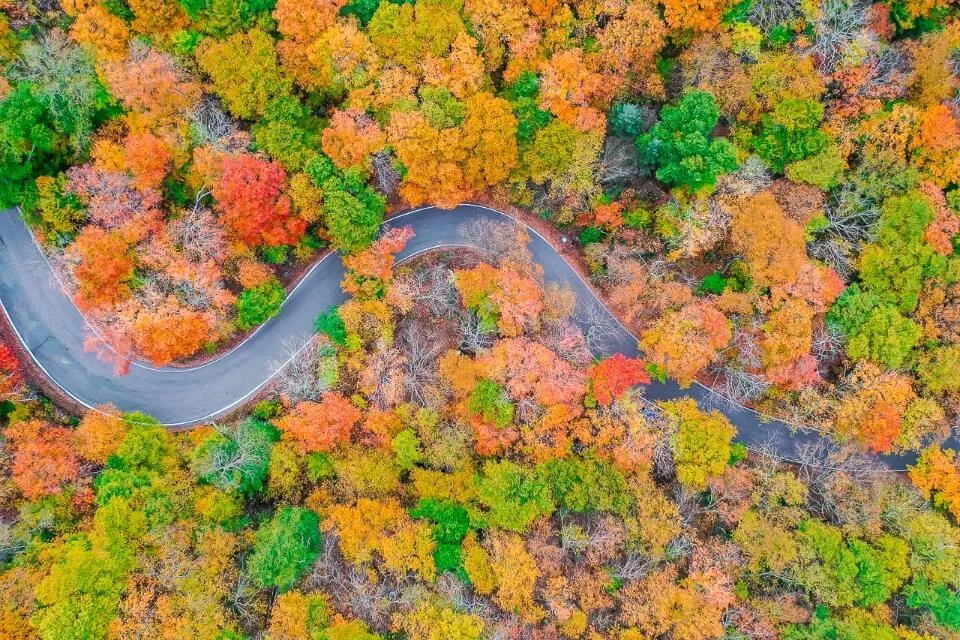
5. Plan A Road Trip Route
With your destination, budget and vehicle figured out, the next step to planning a road trip is crafting the road trip route. The easiest way to plan a general route is the visual way by looking at a map.
Begin by looking at your starting location (point A) and then end with your final destination (point B).
All you have to do from here is decide which points of interest and potential attractions you want to visit.
Here are some things to consider when planning road trip route:
- Are you traveling during peak or low season ? Peak season will mean more people and more traffic.
- What type of weather can you expect? Certain roads may be closed during parts of the year.
- Would you prefer to travel along the main interstates or do you want to take the scenic byways ?
- What do you plan to do during your road trip? Hike new trails or find new photography locations?
Road Trip Planner
There are many free road trip planners available to help you plot the best route but we would recommend using Google Maps or Wanderlog to research and visualize your road trip route.
Let’s use a road trip from San Francisco through Los Angeles and down to San Diego on the legendary California Pacific Coast Highway as an example.
Driving San Francisco to San Diego on Highway 1 is about 600 miles and would take about 17 hours if you drove the entire route straight through.
However, we would recommend you take between 10 days – 2 weeks to explore the small towns and scenic vistas along this beautiful stretch of open road.
As you can see on our road trip planning map above, we have added places of interest we planned to visit during our epic California road trip as well as great accomodation options.
By plotting points, we broke up the road trip into shorter stints so we avoided driving long distances and made sure we didn’t miss any of the interesting places along the way.
A road trip planning app (or website) is an extremely useful resource because you can account for driving distances while plotting all of your important places for your entire trip.
Google maps and Wanderlog are also great because you can utilize the search bar to find a specific place or search for a scenic drive.
If you plan your road trip in this way, you will end up with a custom map of your personalized road trip itinerary.
Tips For Plotting A Route
- Pick a road trip route that is reasonable for your time frame. Don’t try to cram in too much.
- Break up long drives by adding in points of interest.
- Use a road trip planner to help you visualize your exact route.
- Always take the scenic byway over the highway (as long as you have enough time).
- Try not to plan every second. Half the fun of a road trip is spontaneity.
- Look for quirky roadside attractions.
6. Find Accommodation
Unless you plan to find free campsites for the duration of your entire road trip, the next step is to find hotels and / or campsites because you may need to book them soon.
If you are planning a road trip during the peak season, you will most likely need to book accommodation months (and sometimes even years) in advance.
If you are planning a road trip during the low seasons, you should be able to book as you go. This is the exact reason we love traveling during the shoulder seasons!
Book Hotels With Booking.com
Booking.com is always our go to platform for booking accommodation anywhere we travel. There is no other site that compares in quality, accommodation options and value.
- Find accommodation with booking.com here .
Our favorite part about booking.com is the genius loyalty rewards program. This popular program will give you a 10-15% discount, free breakfasts, free room upgrades and even travel credit back for future bookings.
You can search for both hotels and apartments with Booking. We sometimes book apartments if we plan to stay in a destination for a longer period of time. This is also a great way to cut down on food costs for your road trip budget.
Other popular accommodation platforms include:
- Hostelworld – This is a great option for finding shared spaces and meeting like minded travelers. Hostels offer shared rooms at cheap prices.
- Airbnb – This platform has many different and interesting types of accommodation options including treehouses, cabins, yurts, shared rooms and so much more. But be mindful on the high cleaning and service fees.
Want to learn how to find and book cheap hotels? Don’t miss our popular post on how to book cheap hotels every time you travel .
How To Find Campsites
There are many ways to find free or paid campsites for your road trip. Generally, the more money you spend on a campsite, the more amenities you will have available.
Paid campsites can typically range anywhere from $5-100 / night with amenities such as showers, toilets, electricity, dump stations and picnic tables, etc. While free campsites tend to be very basic and much more primitive.
Here are some resources to help you find a campsite:
- The Dyrt PRO ($35.99/year) – This is a great app to locate sites along your specific driving route. Campsites are rated and reviewed by active users. You can also search for a campsite offline if you do not have cell service or wifi.
- Recreation.gov (free) – If you plan to camp in any of the US National Parks, this resource will help you find and reserve campsites throughout the entire country. But these campsites sites must be booked well in advance.
- Hipcamp (free) – This an online marketplace community offering unique adventurous stays and has earned a nickname as the Airbnb of the outdoors. Private landowners can list campsites, glampsites, RV space, cabins for users to book.
If you are looking for a free campsite, there are many areas in the United States where you can disperse camp for free or a small fee. However, some states may require permits or passes so be sure to do your research.
Dispersed camping is typically allowed in National Forest Land, State Forest Land, National Wilderness Areas and sections within the Bureau of Land Management unless it is otherwise posted.
- Free Roam (free) – This is a great app for locating free camping within public lands. You can use multiple BLM and National Forest overlays to see where others have camped in the past.
Road Trip Tip : It is not permitted to sleep in your car within National Park boundaries. You will be kicked out of the park if caught by a ranger. We’ve seen it happen multiple times so you may need a plan B.
Rest Stop and Truck Stop Camping
Designated rest stops are located along US interstate highways. These were created to give long-haul drivers a much needed break where they could pull over and rest.
But while some states allow overnight parking at rest stops, other states do not. Check this comprehensive list of interstate rest areas to see the overnight parking rules in your location.
Truck stops are another great option if you are in a pinch. National chain truck stops sometimes offer overnight parking to RVs, trailers, and campervans. Truck stops have a few amenities such as showers, food and toilets.
We would recommend you call ahead before you stay. National truck stop chains include Pilot Flying J and Travel Centers of America .
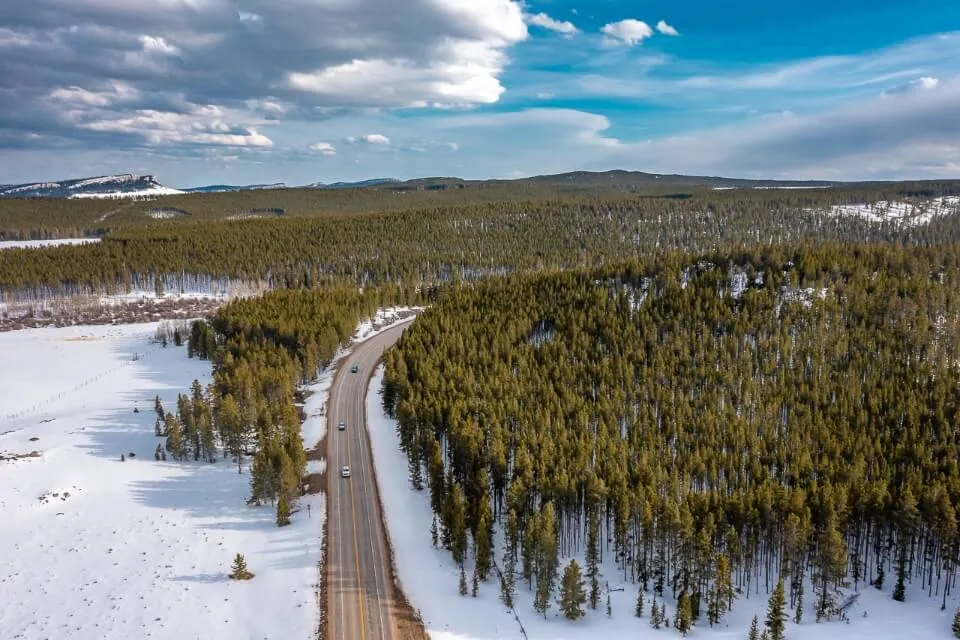
7. Finalize Your Road Trip Itinerary
We always recommend you take one final look at your road trip itinerary. Maybe you got a little too overzealous when originally planning?
During your final review, consider these few questions:
- Are there any long drives you need to break up?
- Consider the weather conditions for your road trip, do you have a plan B for inclement weather?
- Are there any bucket list activities, tours or attractions you might have missed?
- Do you want to visit a popular restaurant? Check if you need a reservation!
- Have you considered traffic in your drive times?
Book Tours and Attractions
If you plan to travel during the peak season, we recommend you book any tours or attractions you don’t want to miss. It may take a little spontaneity out of your road trip, but at least you will be guaranteed a spot.
You can usually get away with booking as you go if you are traveling during the low season, but if this is something you can not miss, call the company ahead of time to see what they would recommend as far as reservations.
Popular Road Trip Itineraries
Below we have listed some of our favorite US road trips in case you need some inspiration:
- New England Fall Foliage
- South Dakota Road Trip
- California Pacific Coast Highway
- Mount Rushmore to Yellowstone
Looking for more road trip ideas? Check out comprehensive road trip itineraries with our best advice taken directly from personal experiences on our US road trips page.
8. Use A Road Trip Packing Checklist
The key to a successful road trip is to pack like a minimalist. Nothing ruins a road trip quicker than carrying around too much gear.
In this road trip planning guide, we won’t go over every single item you should bring on a road trip, but we do in this complete road trip packing list .
On this comprehensive road trip packing list, we include the 10 road trip packing list essentials, a checklist for your car, what clothes to pack, road trip gadgets, a road trip food list and some additional items to bring for comfort.
Make sure you always have these essentials on hand:
- Driver’s License
- Vehicle Insurance Information
- Vehicle Registration
- Travel Insurance
- First Aid Kit
- Roadside Emergency Kit
We recommend you bring a suitcase or a small duffel for your main bag that you can leave in the car and then bring a small travel backpack for any day excursions.
Packing cubes can also be a lifesaver because you can even leave them in your suitcase and only take what you need for the night.
Road Trip Tip : When leaving items in your car for long periods or overnight, cover everything up with a blanket or sheet to avoid prying eyes. Darker colors such as blue or black work best.
9. Plan Road Trip Meals
The next step is figuring out food for your road trip. Are you planning to eat out at restaurants or do you plan to cook most of your own food?
After many road trips, we find food is where we always overspend. We also start to feel pretty unhealthy eating out day after day on a longer road trip.
We find a combination of eating out and making our own meals is the best way to stay healthy and maintain our budget during a road trip.
When traveling in rural areas, food can be extremely limited. So this is where it comes in handy to have planned ahead so you can have some better food options.
However, if you are visiting a popular place like Zion National Park where there are many food options in nearby Springdale, it may be better to try some of the delicious local eats.
Planning ahead and getting a feel for your food options is the best advice we can give you. This will avoid tons of frustration, help you maintain your road trip budget and eliminate some of those unhealthy feelings.
Just to give you an example, the food options near the Grand Canyon South Rim are pretty lackluster. Which is very surprising considering it is the Grand Canyon. But it pays to know this before you visit.
How To Stay Healthy During A Road Trip
There are a few things you can do to stay healthy during a road trip:
- Plan and prepare meals early in the day before you are tired from driving and sightseeing. This will help you to make healthier choices.
- Always stay hydrated. We try to have several gallons of water in the car. This is a good idea to have extra water for emergencies but we can also fill our reusable water bottles when needed.
- Buy fresh fruits and veggies at a local grocery market. Keep them fresh in a small cooler or refrigerator.
- Look for healthy restaurant options serving fresh options.
- Buy groceries locally and often to maintain the healthy options in your vehicle.
How To Minimize Costs For Food
As we mentioned previously, food costs can get out of control during a road trip if you haven’t carefully planned. Here are some money saving tips:
- Try a food truck instead of a sit down meal. Food choices will usually be cheaper.
- If you are visiting a National Park, do you research and make a meal plan if needed. Food can be expensive and very limiting.
- Choose an apartment over a hotel so you can cook your own meals.
- Eat lunches in restaurants instead of dinner. The menu is often the same with smaller portions at lunch which means cheaper.
- Eat local foods because food grown locally should be less expensive.
If you plan to cook some of your own meals, here are some easy camp stove meal ideas to get you started on what you can cook throughout the duration of your road trip.
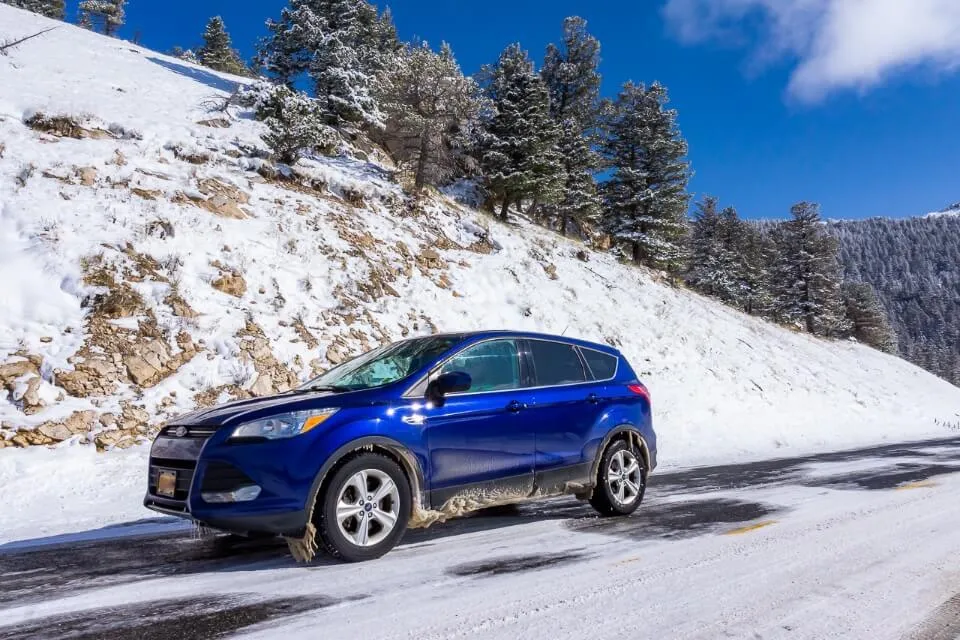
10. Prepare Your Vehicle
The last and final step of this how to plan a road trip guide is to prepare your vehicle. This just might be the most important step of this entire process and it won’t take much time, but it will ensure a good time.
These tips will be extremely important if you are planning to use your own personal vehicle. But if you are renting a car or camper van, perform these steps when you first pick up the vehicle
Before your road trip, be sure to stay on top of your regular maintenance.
- Does the oil need to be changed?
- Is the vehicle inspection going to expire soon?
- Do you need to replace any fluids?
- Inspect the air filter, windshield wipers and spark plugs
- Inspect all lights and make sure they are properly functioning
- Do the tires have enough tread for the trip you plan to take?
- What about a spare tire and tools for changing a spare?
- Are you up to date on your car insurance and vehicle registration?
- Do you know where the car manual is located?
It is better to have the problems fixed prior your road trip before you are in the middle of Death Valley with little to no cell service.
Keep an eye on the milage throughout the duration of your road trip. You may need to have an oil change. We have our SUV regularly serviced when we are longer road trips.
It also pays to have a little bit of extra money set aside in case of emergency repairs. Unfortunately while road trips are fun, they cause a lot of wear and tear to vehicles. But if you properly prepare, these repairs won’t be a shock.
Roadside Assistance
Do you know what you would do if your vehicle broke down? We highly recommend you have a plan for a “just in case” scenario.
If you are planning a road trip in the United States, consider purchasing a AAA membership .
The American Automobile Association (AAA) provides:
- 4 roadside service calls per year
- A battery jumpstart and replacement
- Free fuel delivery service
- Replacement of flat tire with spare at no charge
- A lock out service up to $50
- Winching service
So even if you lock your keys in your car, AAA will be there for you!
As an extra bonus, they also provide free paper maps and discounts on select hotels. Just ask your hotel if they accept AAA discounts when you check in.
AAA Membership offers three different tiered levels and cost anywhere between $40-100/year. This is a small amount of money to cover any automotive emergencies on your road trip.
Best Road Trip Planning Apps
Free apps are some of the best road trip planning tools. We recommend you download some if not all of these best road trip apps before your trip.
- Waze (free) – A subsidiary of Google providing satellite navigation software. This app will tell you about traffic, construction, police, crashes and even objects in the road in real time. Available on iPhone , iPad and Android .
- Gas Buddy (free) – This is a great option to find the cheapest gas station on your route. It focuses on finding real-time updates on gas prices so you won’t over pay at the pump. Available on iPhone , iPad and Android .
- Roadside America App (free) – Find cool, quirky and local roadside attractions. Available on iPhone and iPad .
- Gaia GPS ($31.99/year) – This app is the gold standard when it comes to navigation during a hike. Click the link for our special 20% discount.
While Google Docs is not a free travel app, this is one of our favorite ways to stay organized when planning a road trip. We create a specific road trip file and list notes about our route as well as drive times and interesting places.
Google docs can also be shared with multiple people so you each can make notes about your road trip.
Mistakes To Avoid When Planning A Road Trip
Get ready to start those engines because you are officially ready to begin your road trip! We hope this how to plan a road trip guide helped you every step of the way.
We felt it was important to include a few common road trip mistakes to make your trip the best it can be:
- Avoid driving long distances during rush hour. You will save so much time and frustration.
- Use Waze to keep an eye on your speed when driving in unfamiliar locations. No one wants a ticket!
- Download any offline maps or routes you need while you still have cell service or wifi.
- Keep an eye on your gas when driving in rural areas. We keep our gas tank at least 1/4 full at all times.
- If you get tired from driving, stop for a short break. Walk around to stretch your legs and grab a coffee.
- Try to maintain a good sleep pattern (about 7 hours a night) and stay hydrated.
- The early bird gets the worm – start your day early to avoid crowds.
- Watch the sunset as much as possible.
- Don’t over plan. Be flexible for spontaneous road trip adventures!
But if there is only one piece of advice you take from this how to plan a road trip guide, it should be to stay present and enjoy every moment.
Car breakdowns and bad weather are bound to happen. It’s that time you share with friends and family that is priceless.
Try not to let a bad day ruin your time. That horrible road trip experience will make for a funny story in the future.
Our Popular US Road Trip Itineraries
- Nevada – Las Vegas To Death Valley Day Trip
- New Hampshire – Kancamagus Highway Fall Road Trip
- Pacific Coast – San Francisco To San Diego Road Trip
- SD + WY – Mount Rushmore to Yellowstone
- South Dakota – South Dakota Black Hills Road Trip
- Utah – 9 Amazing Utah Road Trips
- Utah – Zion to Bryce Canyon Road Trip
- Wyoming – Salt Lake City To Yellowstone Road Trip
We hope our how to plan a road trip resource helps you enjoy your time on the road!
Where are you planning your next road? What are the best places you’ve stopped at on a previous road trip?
Please let us know if you have any questions or need any help planning for your epic road trip.
Happy Road Trip Planning ,
Mark and Kristen
Was This Post Helpful? Pint It For Your Visit!
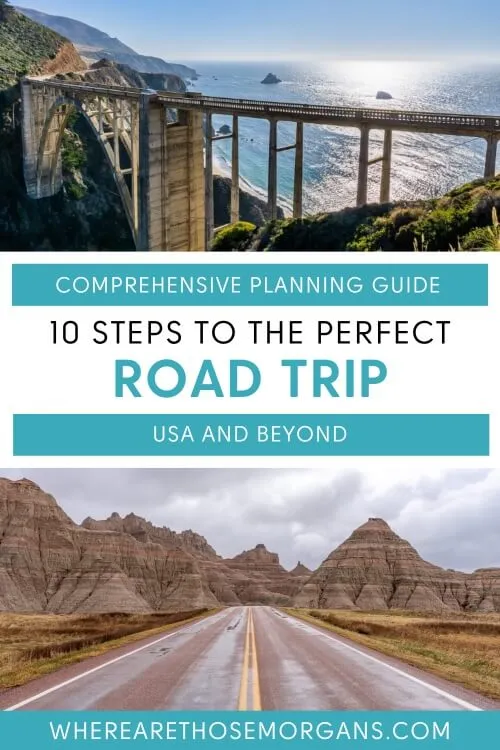
Note : This article contains affiliate links. When you make a purchase using one of these affiliate links, we may earn a small commission at no extra cost to you.
All Rights Reserved © Where Are Those Morgans, LLC. Republishing this article and/or any of its contents (text, photography, maps, graphics, etc.) in whole or in part is strictly prohibited.
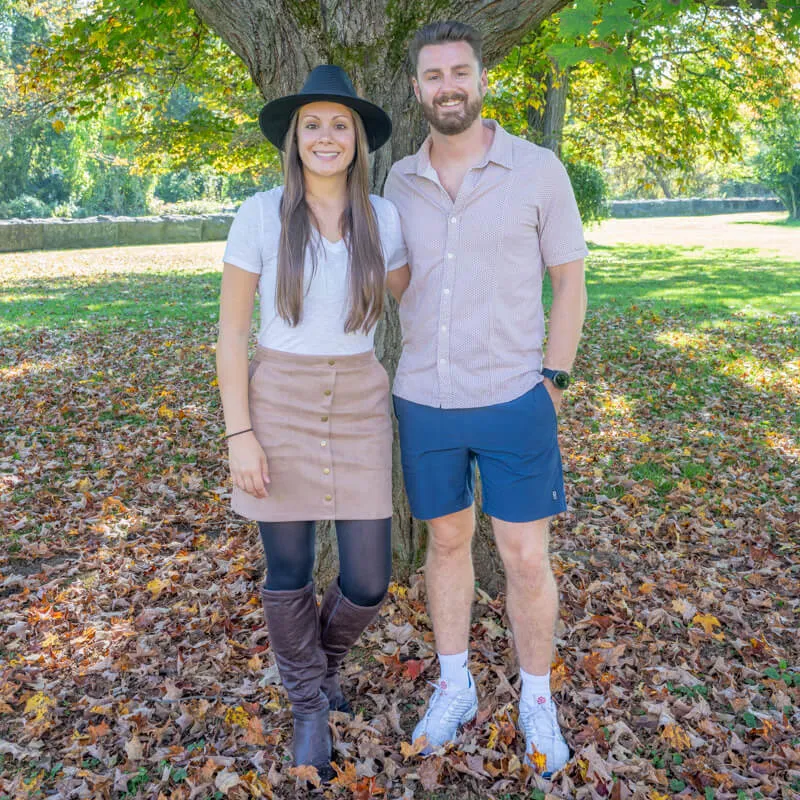
Mark and Kristen Morgan are travel, hiking and photography experts. Over the last 6 years traveling full time, they have explored more than 40 countries and 30 US states.
Where Are Those Morgans has been featured in USA Today, Gestalten, Get Your Guide, CityPASS and Condé Nast Traveler along with various other publications. Read more about us .
Leave a Comment Cancel reply
Subscribe to our newsletter
Get the latest in travel straight to your inbox
Click here to subscribe

How to Plan Your Trip

Planning your trip can be a lot of work! Where do you start? What’s step one? What’s step two? What’s step three? Fret not! This page will give you all the best resources I have for planning your trip from start to finish. These posts go into the nuts and bolts of planning. They will teach you what to do first, second, and third. They will teach you how to narrow down your travel choices, know where to get legit information on the web (besides here), and help you avoid the newbie mistakes I made in the beginning!
Top Articles on Travel Planning

16 Easy Steps for Planning Your Next Trip
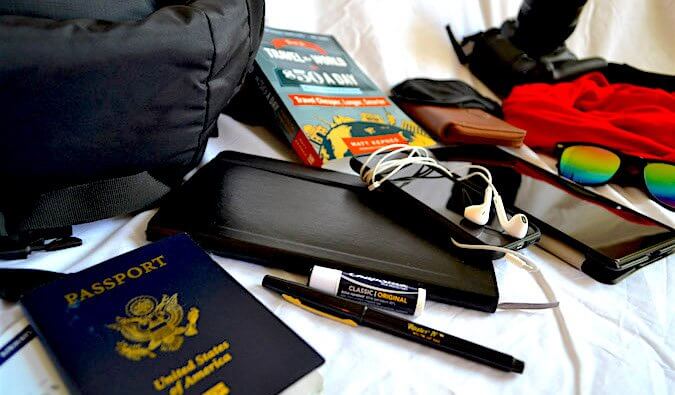
What I Pack for My Travels: Your Guide to Packing
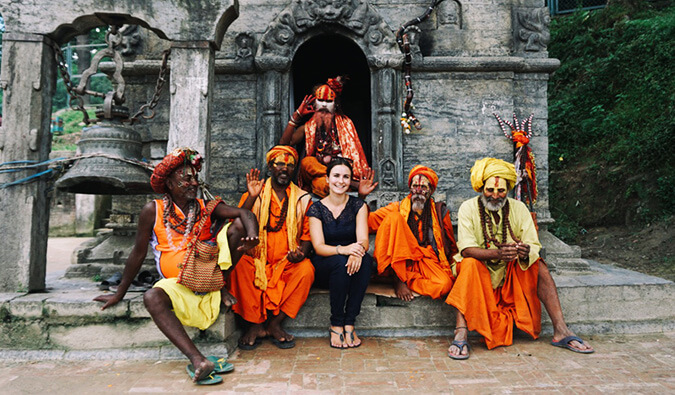
How to Use Your Social Network to Travel the World
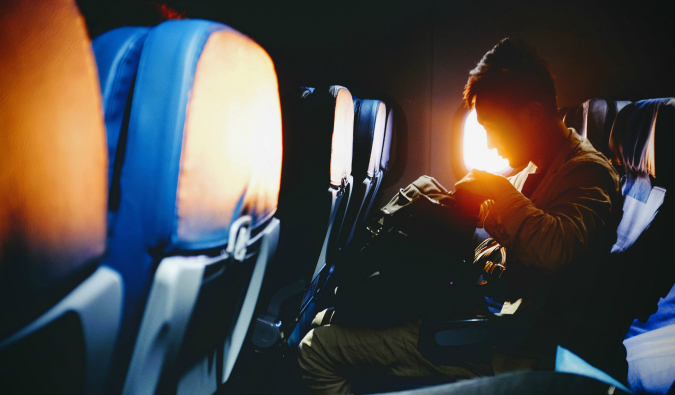
My Best 61 Travel Tips to Make You the World’s Savviest Traveler

How to Plan a Trip to a Place You Know Nothing About

How to Avoid Paying Bank Fees While Traveling

Too Many Places: Overcoming the Paradox of Choice

Overtourism: How You Can Help Solve This Worldwide Problem

Cheap Holiday Ideas: 8 Budget Vacation Deals
Read more on the topic –>
MY FAVORITE TRAVEL RESOURCES
Below are my favorite companies to use when I travel. They are always my starting point when I need to book a flight, accommodation, tour, or vehicle!
- Skyscanner – Skyscanner is my favorite flight search engine. It searches small websites and budget airlines that larger search sites tend to miss. It is hands-down the number one place to start.
- Going.com – Going (formerly Scott’s Cheap Flights) finds incredible flight deals and sends them directly to your inbox. If you’re flexible with your dates and destinations, you can score some amazing deals and save hundreds of dollars in the process!
- Hostelworld – This is the best hostel accommodation site out there, with the largest inventory, best search interface, and widest availability.
- Booking.com – The best all-around booking site. It constantly provides the cheapest and lowest rates and has the widest selection of budget accommodation. In all my tests, it’s always had the cheapest rates out of all the booking websites.
- Get Your Guide – This is a huge online marketplace for tours and excursions. It has tons of tour options in cities all around the world, including everything from cooking classes and walking tours to street art lessons!
- SafetyWing – This site offers convenient and affordable plans tailored to digital nomads and long-term travelers. It has cheap monthly plans, great customer service, and an easy-to-use claims process that makes it perfect for those on the road.
- Discover Cars – Discover Cars is a car rental aggregator that can help you find the best deals for your next road trip. It pulls data from over 8,000 car rental locations to ensure you always find a great deal!
- Trusted Housesitters – Trusted Housesitters is a platform that connects you with people in need of pet and house sitters. In exchange for looking after their pets or home, you’ll get access to free accommodation.
- Top Travel Credit Cards – Points are the best way to cut down travel expenses. Here’s my favorite point earning credit cards so you can get free travel!
Travel Guides I’ve Written

GET YOUR FREE TRAVEL STARTER KIT
Enter your email and get planning cheatsheets including a step by step checklist, packing list, tips cheat sheet, and more so you can plan like a pro!

- Skip to primary navigation
- Skip to main content
- Skip to primary sidebar
- Skip to footer
TravelAwaits
Our mission is to serve the 50+ traveler who's ready to cross a few items off their bucket list.
27 Tips For Planning The Perfect Road Trip

haveseen / Shutterstock
- News and Tips
- Travel Tips
- Types of Travel
The classic road trip has made a comeback. More Americans than ever are taking to the roads for vacations and family visits. According to a survey completed in May 2020 by the GasBuddy app, nearly one in three Americans said they planned to go on a summer road trip.
Road trips are a fantastic way to make memories and see new places and things. Whether you are staying local for day trips or hitting the road on a long bucket-list trip across the country, there are a few things you can do to make your trip better and memorable for the right reasons.
These tips will help you experience less stress and fewer arguments if traveling with others, and help keep you safe.
1. Outline Your Itinerary
Planning where you want to go, what you want to see, and how long you will spend at each place is important.
Otherwise, you could spend your entire vacation at your first stop, or rush through important visits and then have too much time at other less-important sites. You don’t want an hour-by-hour plan but a general idea of what you want to see and do and how much time you think each activity or stop will take.
Be sure to build in some extra time for that last-minute thing you want to stop and see.
2. Determine Must-See Sights
I often ask everyone who is traveling together to make a list of two or three things they want to see or do and to share a few things that would be fun but don’t need to go at the top of the list. When everyone traveling together combines their items, you can usually hit at least two of everyone’s top choices. Yes, everyone gets to do a couple of things they have their heart set on if you plan accordingly.
Pro Tip: As you plan your trip, don’t plan too much driving in a day. Scenic routes are fun, but decide in advance the most time you want to spend driving and stick with it. Few people enjoy days on end in the car.
3. Know Who’s Traveling With You
Determine who will be making the trip. The success or failure of a vacation often depends on who you are traveling with and how compatible you are. If you are driving for hours and one of you likes complete silence and the other thinks you have to have a constant conversation, it might not be fun for either of you. Similar tension can ensue if one of you wants to just get to your destination as quickly as you can, but the other wants to stop at every other town to see new things along the way. Know who you are traveling with, how each person likes to travel, and how you will make this road trip work. Hopefully, you can meet in the middle or take turns with your preferences.
If spending the night, determine the sleeping arrangements in advance, too. When traveling with another couple, make sure everyone is on the same page. Some couples think sharing a room is cozy and fun; others want more privacy and want separate rooms for each pair.
4. Create A Budget
Some people feel a vacation is a time to splurge a bit, while others want to stick to a strict budget and do everything on the cheap. So this is something you need to discuss before hitting the road. Even if you are making a solo trip, you need to plan a budget. You will need to budget for gas, meals, lodging, activities, snacks, admittance fees, turnpike tolls, souvenirs, alcohol, and other drinks.
I usually determine how much I want to spend and then break down the costs from there. If you are traveling with someone, you need to discuss what type of places they desire to stay, the kinds of meals they will eat, and the total budget they can afford.

Piyawat Nandeenopparit / Shutterstock
5. Join AAA Or Another Road Assistance Club
No one wants to be stranded somewhere. Whether you lock your keys in the car, have a dead battery, or encounter some other car malfunction, being a member gives you peace of mind and a 1-800 number to call to get the help you need. It saves you money and hassle. I’ve been a member of AAA for 36 years, and every time I have called them, I have been pleased with the service and the money I saved.
6. Make Reservations
If you know where you will be each evening, make reservations in advance. You will know you have a room and it eliminates the stress of worrying if you will find something.
7. Check Inspections
Make sure your car has all the proper inspections before you leave for the trip. If possible, have your car serviced a week or two before the trip as well. Ideally, you will check on this a week or two in advance so you have time to make an appointment. According to AAA, most breakdowns can be prevented by having your car serviced before your journey.

8. Check Your Tire Pressure
I know this sounds silly, but before you leave, you need to make sure all your tires have the correct pressure. You will get more miles per gallon of gas if your tires are properly inflated. Also, your tires will last longer. This is especially important when you have weather extremes. Not sure how much pressure your tires should have? Check the door of your car; it is usually listed there.
9. Check Oil And Wiper Fluid
Make sure you have sufficient oil and an extra quart of oil in the trunk in case it is needed. This is important because you can’t always find the type of oil you need when traveling. My car takes synthetic oil and a strange blend. The first time I needed oil and was traveling, I had to go to five different places before I found the correct oil mixture. I wasted time I could have been having fun. Since then, I always make sure I have extra in my trunk before heading out on a trip. If you aren’t sure what kind you need, it is in your owner’s manual.
Pro Tip: Bugs, dirt, and other debris can inhibit your vision. Wiper fluid levels should be full when you begin your trip.

Roger Brown Photography / Shutterstock
10. Stock Emergency Items
Double-check to be sure your spare tire is fully inflated and that you have a set of jumper cables and extra wiper fluid on hand in your trunk. I keep these things along with the extra oil in a trunk organizer. I also keep a blanket, an extra bottle of water, and a granola bar in case of emergency!
11. Clean Your Car
Before heading out on a road trip, clean your car.
Remove all trash. Clean the windows and mirrors. Run the sweeper on the carpet and wipe off the dash. You will feel much better about traveling in a clean car. When you stop for breaks, take empty bottles and other trash and properly dispose of them.
You might want to wash the outside of your car as well. In our family, I usually clean the inside, and my husband washes the outside the day before our trip.
12. Verify Your Passports And Drivers’ Licenses
If you are traveling out of the country by car, be sure you have an up-to-date passport. If your passport is scheduled to expire within six months, you may have a problem. So be sure to check this in advance and be sure you pack them.
13. File Confirmation Numbers And Addresses
If you have a hotel or other confirmation numbers, keep them all in one place. You can print and put them in a file folder or keep them on your phone.
I put them all into a note on my phone in the order I will need them.
Like the confirmation numbers, I keep a note on my phone of addresses and phone numbers for each hotel or destination we plan to visit.
This way, if we need to, I can quickly look them up on GPS or call the hotel and let them know we are arriving much later than expected, et cetera. This is especially important if you are staying at an Airbnb.
14. Get Some Cash
Credit cards are great! But there are times when you need to have cash for tolls, a soda, or whatever you need.
Always make sure you have a bit of cash on hand before you travel.
15. Download Helpful Apps In Advance
There are a few apps that make a road trip easier. Download them in advance so they are ready to use when needed. I recommend Google Maps, the iExit app for info on amenities available at exits, and diaroogle.com or the Flush app (for Apple or Android ) for the lowdown on the nearest toilets and their conditions.
16. Pack Nutritious Snacks
Pack healthy snacks for the trip. Think fruits, protein bars, hard-boiled eggs, nuts, celery and carrot sticks, cherry tomatoes, and other veggies. Junk food can lead to fatigue, so don’t blow your diet while on the road. Also, pack plenty of water. Or, better yet, have a reusable glass or stainless-steel water bottle for each person and refill it along the way. Dehydration can lead to headaches and crankiness. Be sure to pack these in an insulated bag or cooler.
Try to avoid sugary beverages while traveling. We often buy a case of water and keep it in the trunk. We put a few bottles in a cooler to drink as we go and then restock the next day from the trunk supply. It is less expensive to purchase a case of water than individual bottles.

Africa Studio / Shutterstock
17. Don’t Forget The Sunglasses
Be sure to pack sunglasses, even in winter. Driving while looking at the sun can cause headaches and make your trip unpleasant.
18. Don’t Forget Hand Wipes and Disinfection Wipes
Pack a tub or cylinder of hand wipes in the car. These are great for spills and sticky fingers.
The disinfection wipes are great for cleaning anything your hands will touch. Think gas pumps, credit cards after someone else has handled them, et cetera.
They can also be used to clean doorknobs, faucets, et cetera at your hotel.
19. Be A Smart Packer
Pack as lightly as possible; after all, you will have to transport the luggage several times during the trip. I also usually take a small bag or duffle and fill it with daily essentials, such as pajamas, toiletries, and one change of clothes to take in for just a night when we don’t want to unpack everything.
20. Fill Your Tank
Nothing puts a damper on the start of a trip more than having to stop for gas a half-hour after starting. So fill up the tank the day before your trip. Also, as you travel, if you see an area with low gas prices, stop and fill up even if you still have half a tank. Keep the tank full an do it as economically as possible.
21. Remember The Cell Phone Charger
Be sure you have your cell phone charger and cord in the car. I have one that has multiple outlets, so I can charge several items at the same time. This is a lifesaver when traveling. (How did we survive before cell phones and GPS?)
I also make sure I pack a cell phone charging bank. While I rely on the car charger, emergencies do occur, and having a backup always makes me feel safer.
22. Start Early
Like many people in their 50s, my eyes aren’t as sharp at night, so I prefer to drive during daylight hours. If you can get an early start, you sometimes beat the heavy traffic, and it is usually safer to travel during daylight hours. I always try to arrive at my evening destination before dark.
23. Pick Some Tunes
Whether it is your favorite tunes, a book on CD, a radio station, or a podcast, plan something to listen to in advance. Make sure you have headphones in case each of you enjoys different things.

James R. Martin / Shutterstock
24. Take Breaks When Driving
Plan to take a break from driving every hour or so. Don’t just stop for restroom breaks and gas. Get out and walk a bit, and do some stretches. This helps with circulation and keeps you from getting sleepy when driving.
I’ve read that experts suggest a 15- to 20-minute break every two hours of driving.
25. Plan For Downtime
While I advise a planned timeline for traveling, be flexible, and don’t schedule every minute of the day. You never know when you will come upon an unexpected place that grabs your attention. Stop at the roadside stand; spend an extra hour picking up seashells; make an unexpected stop at a museum. Sometimes these stops make the best memories, and they break up the drive. Allow time in your schedule for the unexpected.
26. Skip The Chain Restaurants
Eat local grub at bistros and cafes. If you want to get a flavor of the local community, find a restaurant that isn’t part of a chain. Ask the locals where they recommend eating. Locals are more likely to give you their favorites, and they will be better than any online review.
27. Prepare To Have Fun!
Remember the trip’s goal is to enjoy yourself, take in some beautiful scenery, learn new things, experience fun adventures, and make memories.
Editor’s Note: GasBuddy app’s findings, reported on by MarketWatch, are accessible here .

Robin O’Neal Smith is a freelance and travel writer. A young baby boomer, Robin and her husband have traveled throughout North America, many of the Caribbean Islands, and Europe. She loves cruising and inspiring others to live their dreams of travel. Follow her travels on her personal site where she discusses travel, food, and more!

Travel Planning – How to Plan a Perfect Trip

Are you about to plan a trip? This can seem like a challenging and overwhelming task.
Maybe you don’t know where to start, or maybe you wonder how proper travel planning can make the most of your trip.
Whatever the case may be, planning a trip doesn’t have to be difficult at all !
Traveling has been an important part of my life for as long as I can remember. From planning short weekend getaways to trips to remote destinations that lasted months.
I love travel planning and the anticipation of going somewhere new.
In this article I want to help you with your travel planning. No matter where you are going, who with, or for how long, this guide will share the tips I use when I plan a trip.
How to Plan a Trip
1. choose your destination.

Logically, this is the first part of travel planning. It all starts here.
If you haven’t decided on the exact destination(s) of your next trip, let’s plan this out first.
Ask yourself: what kind of trip do I want to go on? Do I want to go to a sunny destination? Discover new cultures? Backpack? Stay in luxury hotels? Travel on a budget ? Learn a new skill? How long do I want to travel?
Take a look at your finances and decide how much money you want to spend on this trip. Once you know your budget and how many days you have, research the average cost per day in your favorite destinations.
When you’ve got all of that clear, it will be a lot easier to choose your destination.
- Bucket List Destinations for a Once in a Lifetime Trip
- The Best Caribbean Islands to Visit & Why
- The Most Beautiful Cities in the USA
2. Find the Best Flights and Dates

When we’re planning a trip, we want to find the best deals, right?
You’ve probably heard hundreds of different tips and tricks, but the ones that really work are: traveling off-season, being flexible with your dates, and doing a lot of research.
I’ve found the best and cheapest flights on Skyscanner.com . You can search for multiple destinations at the same time or set your destination to everywhere (this might come in handy if you haven’t made up your mind yet), you’ll then get an overview of all the cheap flights around the world.
If you do know your destination but your dates are flexible, select “whole month” and then “cheapest month” to check the best time to travel.
Of course, most of the time when you plan a trip you both know your destination and your exact dates. Then as well Skyscanner is my go-to website because it compares prices for almost all airlines anywhere in the world.
I go into much more detail about finding flights in this article: How to Find the Cheapest and Best Flights .
Traveling by Bus, Train, or Car Instead?
If you’re going on a road trip with your own car, please check your car before leaving. The last thing you want is to end up with car trouble during your trip!
And if you decide to plan a trip by train or bus, make sure you book your tickets early. Depending on where you are going, I’ve seen train and bus tickets for longer distances booked out weeks or even months in advance.
It might also be worth signing up for the newsletter of the train or bus company you plan to use, as they will often email special discounts.
3. Choose Suitable Accommodation

So you’ve chosen your destination and you’ve found a good flight or other modes of transport. What’s next? Booking a place to stay.
Whether you’re planning to go on a short or a long trip, you’ll need to choose suitable accommodation, at least for the first few nights.
A few questions to ask yourself here:
- Do you prefer to stay in a hotel or would you rather have your own kitchen and more space?
- Are you on a limited budget or are you looking for some luxury for this trip?
- Is a good location the most important or is a unique or beautiful property more important for this trip?
Once you know what type of accommodation you’d like to book it’s time to search the web again.
These are my go-to websites whenever I’m looking for accommodation:
- Booking.com . This is the first place I search for hotels, anywhere in the world. And these days they also offer apartments and houses for rent, plus a number of hostels and smaller guesthouses.
- Hotels.com . Although Booking.com is my go-to website, I often use Hotels.com to compare their options. Sometimes they have a good deal or offer a few different hotels.
- Airbnb and VRBO . If you know you want to rent an apartment, house, or just a room, then these websites are the best option. And if you are looking for a unique place to stay, a treehouse or a stay on a boat for example, these websites can offer some great options.
- Hostelworld . If you are traveling on a budget or just like the social aspect of hostels, Hostelworld is the best website to find a hostel anywhere in the world.
- Pros & Cons of Staying in a Hostel
- Important Things to Look For When Booking a Hotel
- Cool Hotels in Amsterdam
- Where to Stay in Valencia, Spain
- The Best Hotels in St Maarten, Caribbean
4. Find Out How to Get to Your Accommodation

Some airports offer great public transport, others do not.
And even if they do, public transport might not take you anywhere close to the place you are staying.
After a flight, while lugging around your bag or suitcase, the last thing you want is having to figure out how to get to your destination.
So, don’t forget to make this part of your travel planning!
Find out how exactly you will get to your accommodation.
Check Google Maps first. In most places Google Maps will show you the different ways you can travel from the airport.
Second, ask your hotel/hostel/Airbnb what modes of transport they recommend and if they perhaps offer any transportation themselves.
It’s a small thing, but knowing how to get to your accommodation will make the start of your trip a lot more stress-free.
Tip: if you plan to rent a car, book it online long before you arrive. Prices often go up close to the travel date and if you wait too long there might not be any cars available anymore.
5. Explore Your Transportation Options

How will you get around during your trip?
It’s nice to know what your options are before you arrive.
You could research the following things:
- Is there good public transportation? If so, what’s the best option, and how does it work?
- Is it possible to walk to most places or rent a bicycle? More and more cities have bike share systems these days.
- Would it be better to rent a car and can you do so online?
- Can you easily find a taxi or Uber? Some countries have a local version of it – for example, when traveling to Spain , Cabify and Blablacar are popular options.
Google Maps is a good tool to figure out what’s available at your chosen destination. And a simple Google search for ‘how to get around in [your destination]’ will also generally answer all your questions.
If you’re traveling in Asia, 12go.asia is the best website to find out how to get around and book bus, train, and ferry tickets, plus some flights.
Also Read: Tips for Driving Abroad for the First Time
6. Plan Your Activities

Now that you’ve planned the logistics of your trip, it’s time for some fun!
But where do you start? What are the best things to do?
If you want to plan and book tours and activities, I’d recommend you to use the following websites, they’re all really useful:
- Get Your Guide . This is generally the first website I check for activities in any place I visit because of their wide offer.
- Viator . I find Viator slightly better in the USA so if I travel in the US I check Viator before Get Your Guide. But, Viator also offers activities all over the world.
- Klook . Klook is expanding quickly. I used them a lot for activities in Asia, and they would still be my first choice there. But these days they also offer activities in many other parts of the world so it might be worth having a look no matter where you travel to. And in some places they offer nice hotel deals as well.
7. Find Places to Eat & Drink

Unless you’ve booked an all-inclusive stay you’ll have to find places to eat.
And if you’re anything like me, trying local food, local restaurants, and popular cafés is one of the things that makes traveling great.
To find out about local favorites I love asking my Airbnb host or the hotel staff for their tips.
But reviews on Google Maps are also very helpful. And before I travel I often read other blogs about the best places to eat, hidden gems, and, a personal favorite when I travel to cities, nice rooftop bars with views of the city.
- The Best Rooftop Bars in San Diego, California
- The Best Rooftop Bars in Medellin, Colombia
- Paella Restaurants in Valencia for an Authentic Paella Experience
- Where to Eat in Vilnius, Lithuania
- The Best Cafes to Work From in Amsterdam
8. Get Travel Insurance

This is definitely one of the least fun aspects of travel planning, but please don’t skip it.
Of course we’re going to assume nothing will go wrong, but it does happen. I’ve lost my luggage, had my laptop stolen and even ended up in an Indonesian hospital with dengue fever .
Believe me, when anything like that happens you’ll be happy you have travel insurance!
I’ve written a separate article about what to look for in travel insurance , because it depends on how you travel, where you are going to and even where you are coming from.
9. Find Out if You Need a Visa & Check Travel Advice

Do you need a visa to travel to your destination?
Depending on your passport, there are many countries that will allow you to visit without a visa. But, not all.
If you aren’t sure whether or not you need a visa, check it directly with the embassy in your home country . And do so long before you travel , because if you do need to apply for a visa it might take time.
An embarrassing personal story about that: a few months ago I traveled to Canada . I don’t know why, but I just assumed I could fly there on a European passport without a visa. It wasn’t until I was checking in for my flight online, 24 hours before the flight, that I found out I did need a visa! Thankfully Canada’s visa process is very quick, but that was stressful!
Apart from checking if you need a visa, I’d also recommend you visit your government’s website for more information about the country you are visiting. This would be information on security, local laws, natural disasters, mandatory and recommended vaccinations, and how to find help once you’re abroad.
Keep in mind that if your government gives out negative travel advice, your travel insurance might not cover you.
- Things to Know Before Traveling to Europe as an American
- Things to Know Before Traveling to New Zealand
- 12 Things to Know Before Traveling to Colombia
- Important Travel Tips for Mexico
10. Make Sure Your Passport Is Valid

Sometimes we’ve been so busy planning our trip and focusing on other things, that we totally forget to check our passports. If you’re traveling abroad, do double-check if your passport is still valid!
And, more annoyingly, some countries want your passport to be valid for at least another six months. If your passport isn’t then make sure this won’t cause issues when entering the country you are visiting.
11. Decide What to Pack

This can be a challenge in itself, don’t we all know it?
Luckily, there are lots of useful packing lists for different destinations online. Although I hardly ever stick to everything these packing lists suggest, they are a great help. Simply Googling ”what to pack for [your destination or type of trip]” should give you plenty of good results.
Tip: use travel cubes ! I’ve only recently started using them and they’ve made it SO MUCH easier to organize things and to keep them organized during the trip.
And remember: don’t pack too much! You always need less than you think.
Also Read: Essential Things to Pack for a Trip to Europe
12. Enjoy and Leave Some Room to Get Lost

As much as I believe planning a trip is important, a big part of the fun is leaving some room to get lost and to get off the beaten path .
If you plan every minute of your trip you risk trying to fit in too much and will end up stressed and annoyed when things don’t go according to plan.
Relax, take in your surroundings, enjoy spontaneous encounters, and dive into the unknown!
Travel Planning – Conclusions
Travel planning doesn’t have to be difficult, boring, or challenging – in fact, it’s all about the joy of anticipation.
I hope this guide helped you find ease in planning your perfect trip. And wherever your next trip is taking you, have a great time!
- 5 Practical Tips to Make Travel Planning Easier
- Things to Do Before Traveling – Checklist of Things to Do Before Any Trip
- Tips for Traveling Alone – Planning a Solo Trip
- How to Stay Safe While Traveling
- How to Meet People While Traveling
- How to Take Good Travel Photos
- The Benefits of Traveling With Family
Like this article about how to plan a trip? Pin it!

This article about travel planning contains affiliate links. I may receive a commission for purchases made through these links, at no additional cost to you. As an Amazon Associate I earn from qualifying purchases.
Leave a Comment Cancel reply
Contact: [email protected]
Created by Mar y San Design

Your ultimate checklist for an epic road trip
Travel Travel Inspiration Road Trips Epic Road Trip Tips
Road trips are one of the most fun ways to travel and explore a place. Think about it - wouldn’t you rather breathe in some fresh air and get lost in serene landscapes instead of waiting in long lines at the airport? Of course! Now, although road trips can be exciting, they can also get to you if you haven’t planned a few things out. We’ve put together a list of hacks and tips to make sure you have an epic road trip with fewer unpleasant surprises and many memorable ones!
27 Expert Tips For An Epic Road Trip
Below are the tips and hacks you're here for. Read on and thank us later!
#1 Budget the road trip (and stick to it)
Plan your budget beforehand so you can figure out how much you’ll need for the entire trip. Don’t underestimate your total budget because you don’t want to fall short of money. You’ll also want to account for unforeseen expenses, emergencies, and toll gates. Always carry enough cash just in case you can’t use your cards. If you’re traveling with other adults, decide on a budget together. Talk about how much you plan to spend each day and how much you need to set aside for different activities. It’s always good to plan these things out together and set expectations during the planning process.
#2 Alternate coffee with water to stay alert
Although coffee is widely accepted as the beverage that keeps you awake and alert, it’s not the best choice if you’re driving for long hours. the caffeine can make you very dehydrated and lethargic after a while, making things extremely uncomfortable, especially if you’re driving. caffeine acts as a stimulant but often works for a short duration. taking a few sips of plain water or snacking on water-infused fruits every now can really help you stay hydrated and alert for the whole journey., #3 get a thorough car health check-up before you hit the road.
The last thing you want on your road trip is to have your car break down. Head over to the closest garage or mechanic and have them check your car thoroughly. Check the tire pressure for any signs of a possible flat. Fill up the car with a full tank to skip the hassle of finding a station in the first few hours of your road trip. Always keep a spare tire or two in the car just in case you need it on the way, and of course, learn how to change a tire before you hit the road. You just might need it for those areas where road assistance is miles away.
#4 Let your bank know where you’re going
It’s a good idea to inform your bank about where you’re headed in case of any money-related emergency that can crop up on your holiday. Because you’ll be traveling to unfamiliar places, there’s always the chance of running into frauds, even if you’re extremely careful. Keeping your bank informed can ensure that all transactions made on your holiday are looked into and any action needed can be done almost immediately. Put yourself at ease and let your bank know your travel plans before you head out.
#5 Chart a rough itinerary
You don’t want to rely solely on spontaneity, and at the same time, you don’t want to plan every tiny aspect of the trip. What you can do is chart out a rough itinerary, including pit stops, places to visit once you reach, restaurants, and the like. Basically, a rough idea of all the things you want to cover on the trip. This gives you a lot to look forward to but also room for some flexibility. For instance, let’s say you had a long night and woke up too late for breakfast and sightseeing, that’s okay! If your plan is flexible, you can still make the most of the day and see what else you can do.

#6 Carry cash and stash them carefully
Carrying a sufficient amount of cash on your road trip is absolutely essential. You just might need cash for places that don’t accept card payments, especially if you’re traveling through a small town or village. Maybe you want to grab a quick bite at a little food stall or food truck, maybe you get a flat and have to call for road assistance. Either way, keep some cash with you just in case. But don’t keep all of it in one spot. Carefully distribute it across a few spots and make sure it’s safe and hidden.
#7 Fill up gas using a Credit Card that gives cashback
Many banks have exciting cashback offers when it comes to expenses like fuel. You’ll probably need a full tank or three for your whole trip so why not save some money and earn some points/cashback while you fuel up. Call or visit your bank before you fuel up to see if your credit card is eligible for a cashback. If not, check with your road trip buddies to see if any of them have cashback offers. This is super helpful, especially if your journey is going to be a long one and you need to fill fuel more than a couple of times.
#8 Fill up gas every chance you get
Even if you have more than a half tank of gas, it’s always better to fuel up every chance you get. You never know when you might find the next gas station and sometimes it could be several hours before you do. Sometimes it might even be shut. So, even if you do your homework and figure out where all the gas stations are on your way and back, it’s always better to be safe and fill gas whenever you find a station, especially if you’ve used up half or more of your tank.
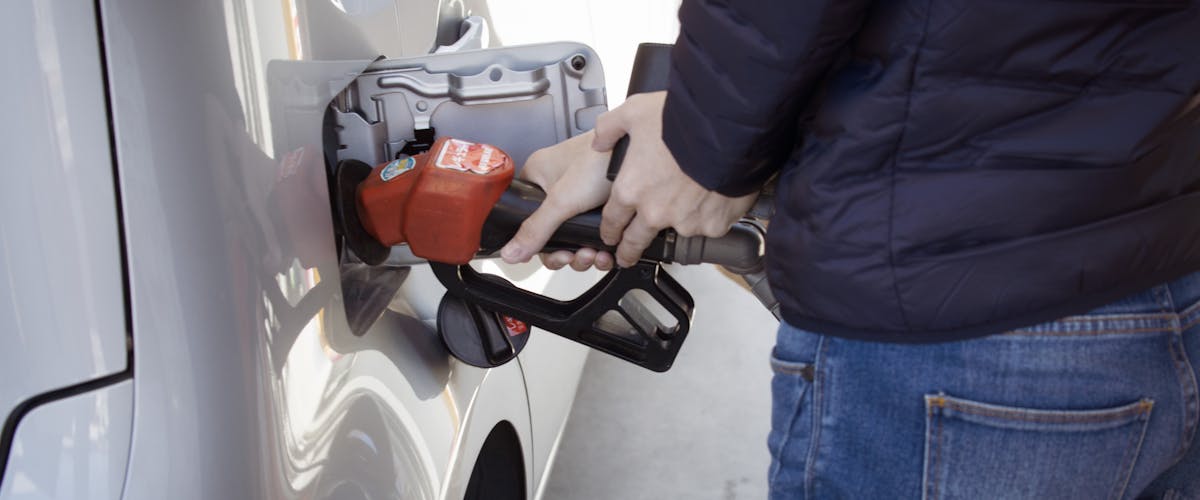
#9 Opt for truck stops over rest areas
Because you’re traveling to unknown areas, your safest bet is to opt for truck stops instead of secluded pitstops. This is an especially useful tip if you’re traveling with women and children and want to be cautious. Truck stops aren’t just for truckers anymore. With adequate lighting, food, facilities, and a small crowd, it is definitely much safer than stopping at a remote area with no one around. Either way, be cautious about where you pull up and quickly scan the area to make sure it’s safe.
#10 Schedule exercise breaks every 2 to 4 hours
We all know how painful it is to sit in the same position for hours on end. You definitely want to avoid this especially while driving and stop for a quick stretch every 2-4 hours. Doing this will help keep the inevitable back pain and leg cramps at bay. Stop every few hours and stretch it out, especially if you feel your body starting to get stiff. Breathe in some fresh air, pop a few healthy snacks, and stay hydrated so your body is in good shape to get back on the road.
#11 Learn how to change a tire
No one really tells you the importance of knowing how to change a tire, but it is an extremely valuable skill to have. It’s easy to call someone to change your tire when you run a flat in a city, but what happens when you’re in the middle of nowhere? You may not find road assistance close by or they might be miles away and take hours to reach you. You’d rather take the time to learn how to change a tire yourself and save yourself time and money.. If you learn how to do it right, the whole ordeal takes just 10-15 minutes.

#12 Bring a portable charger for your devices
We’re all pretty reliant on GPS, especially when we’re traveling. Your phone is precious in more than one way and you can’t have it drain out before you reach your destination. When you’re on a road trip, you usually rely on your vehicle’s power to charge your device. On the off chance that your car breaks down and you can’t charge your phone for assistance, it's good to have a backup charger. So carry one or two portable chargers for emergencies!
#13 Carry an offline/physical map for when GPS ditches you
Let’s be honest, we’d be pretty lost without GPS, and you can’t have your GPS giving up on you on a road trip! Backups are essential. Although the age of physical maps might be long gone, you never know when it’ll come in handy. You should also download offline maps before you set out in case you lose network and can’t access your GPS. Having all of this sorted ahead of time will save you from being stranded.
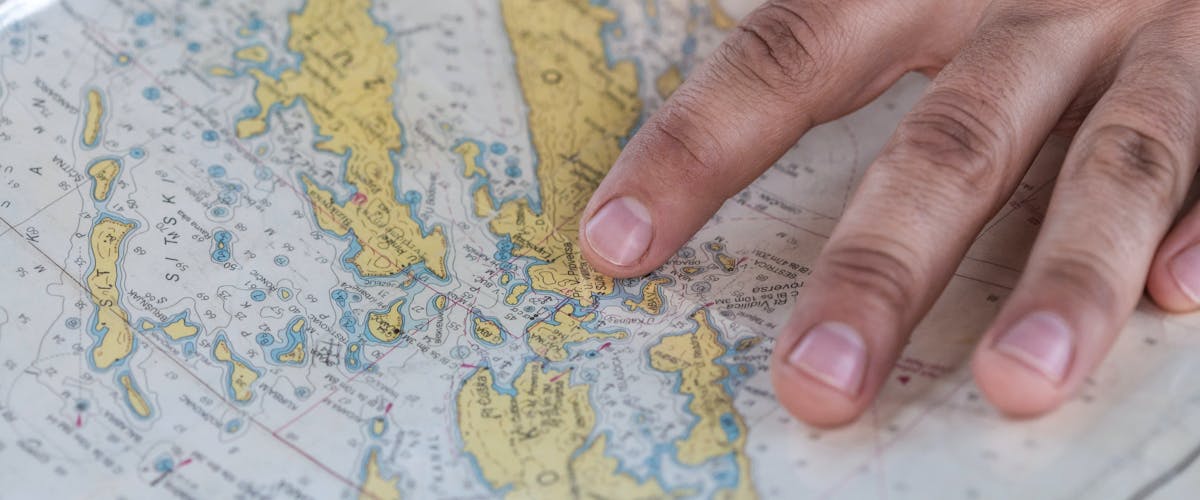
#14 Preload your phone with playlists and podcasts
Road trips are always more fun when you have some fun tunes to hum along to. Remember that you’re probably going to be out of range for the radio to function, so put a few playlists together before you hit the road. You might also lose signal sometimes, so maybe download all the songs and podcasts just in case. That way you always have music and entertainment to keep you engaged through the long stretches. Although road trip games are fun, sometimes it’s nice to just sit back, relax, and listen to good music. Don’t forget to keep everyone’s taste in mind when you’re making these playlists.
#15 Get off the highway and take the road less traveled (sometimes)
Driving on the highway can get monotonous and boring. If you have a car that can handle a little bit of off-roading, why not take an alternate route or a short detour and go on a mini-adventure? You never know what you might find in the nooks of new towns, but we’re sure it’ll be worth finding out. That said, don’t take too much of a detour and lose your way completely! Make sure to check the maps before you hit the detour to see which roads will lead you back to the highway.

Ultimate Bucketlist Road Trips In The World
#16 book flexible attraction tickets in advance.
It’s important to have a loose itinerary in mind when you plan a road trip. Although planning and booking things in advance is helpful, you might change your mind once you’re actually there. Booking flexible attraction tickets gives you the option of canceling your tickets or rescheduling them without losing money. This is a great option if you and your buddies are more on the spontaneous side. Have some fun and be flexible with your plans.
Book last minute experiences on Headout , your one-stop digital marketplace for tours, activties and experiences across 100+ cities around the globe.

#17 Snap pictures of informative signs when you enter a city/town and keep them handy
Just like how you might take pictures of where your car is parked in a massive parking lot, you probably want to take pictures of important signs on your road trip. Keep these pictures in handy in case you get lost and need to retrace your path. It’s also a good idea to keep these pictures in case of any other emergency that pops up when you’re on the road in unfamiliar areas.
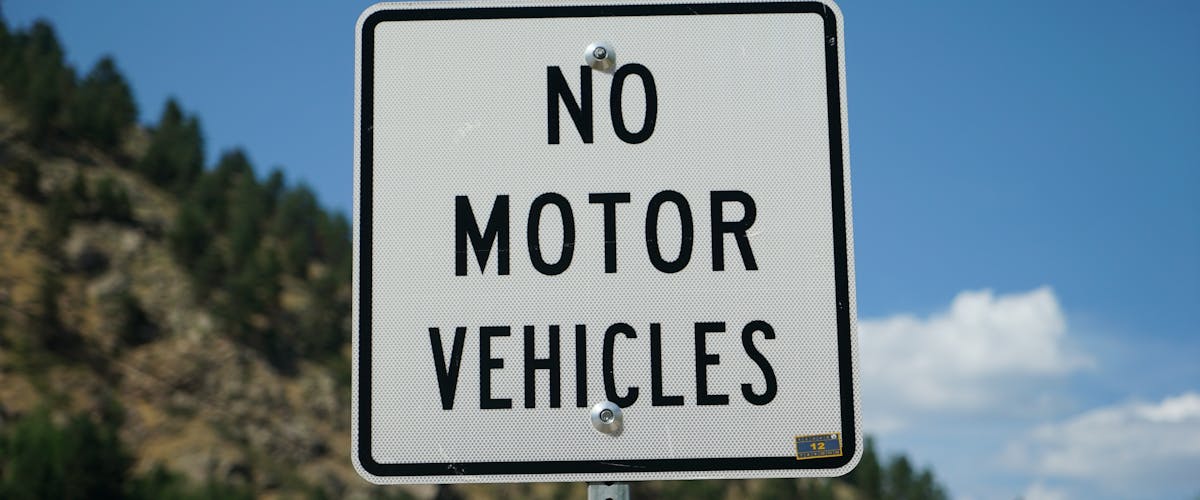
#18 Download a handy chunk of road trip friendly apps
Nowadays there are apps for pretty much everything. To find a toilet, to find the closest gas station, to chart your road trip itinerary and even to find the nearest parking. Before setting off on a road trip, make sure to download the few recommended road trip apps to help make your trip hassle-free!
#19 Stock up on emergency essentials (more than one of each)
Include emergency essentials on your road trip packing list. You always need to be prepared in case of accidents and emergencies, especially if you’re in for a long drive and help is far off. Some important things that need to be packed include a first-aid kit, road safety kit, car tools, spare tires and other car parts, a flashlight, blankets, and water.
#20 Travel insurance + Car insurance are an absolute must
There’s a reason why accidents are called that - because you never know when they can happen. Make sure you have car insurance and travel insurance and keep a copy or two of them in the car. You want to be prepared for anything when you’re on a road trip, especially when there are other people in the car with you. Insurance is a must when you’re heading out on a road trip..
#21 Know the road rules of the country
Get yourself familiar with the road rules of the place you’re going to visit. Sometimes each state has its own travel rules for the road. Do a bit of research and find tips for travelers from official travel and tourism websites. Whether it’s Europe, the United States, Australia, or Asia, you can find important information about road rules on their government or tourism sites. This little extra step can help reduce any tension when you’re driving and prepare you for the unexpected.
#22 Carry a foldable chair and portable picnic set
One of the most exciting parts of a road trip is finding beautiful spots along the way where you can enjoy the view, take some cool pictures, or better - have a picnic! Carry a few foldable chairs and a portable picnic set with you so you can have an impromptu picnic anywhere, anytime. Light food and beverages are perfect for a picnic, like sandwiches, juice boxes, chips, and whatever else you fancy. Having a small picnic in the middle of your road trip also gives you a chance to unwind and enjoy nature before getting back on the road.
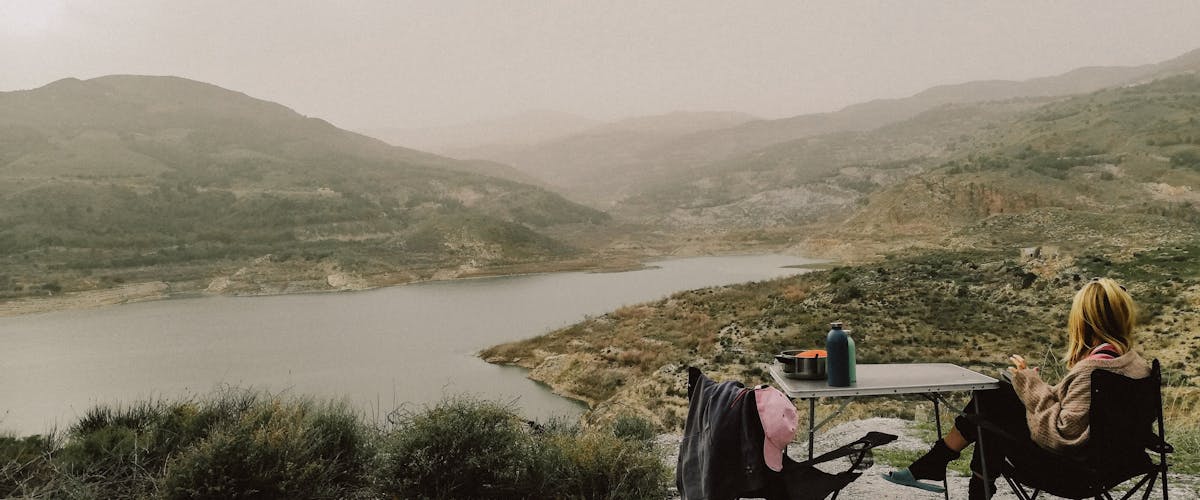
#23 Sunscreens for the windows are a blessing during afternoons
When you crank the air conditioner up, it can slow down your car or burn up fuel much faster. but when you roll the windows down, it can get loud with harsh winds. plus, the car usually gets quite heated up during noon, making it uncomfortable for passengers inside. a bunch of hot, sweaty, irritable people stuck next to each other for a long time inside a car can make things very uncomfortable. invest in sunscreens for the car windows so that even if you’re driving when the sun is at its peak, you can still have a pleasant drive., #24 cover distances during daylight, the best time to start your road trip is at 4 or 5 am in the morning, just before the sun rises. this way you get to beat the morning traffic and be out of the city in time to catch some sensational views of the sunrise. plus, without regular commuters on the road, your journey becomes less hectic and more enjoyable without being stuck in those annoying traffic jams. after all, you don’t want to start off your road trip in a bad mood. leaving early also helps you cover the majority of your distance during daylight when it's the safest to drive., #25 don’t use cruise control at night, as relaxing as it is to put the car on cruise control, kick back, and enjoy the ride, you don’t want to do this after the sunsets. using cruise control at night can be dangerous because it’s harder to see things at night and your reflexes need to be on high alert. the nighttime is usually when truck drivers tend to become more drowsy and little animals tend to set out on adventures, often ending up on roads. so stay off cruise control at night and be ready for anything unexpected..
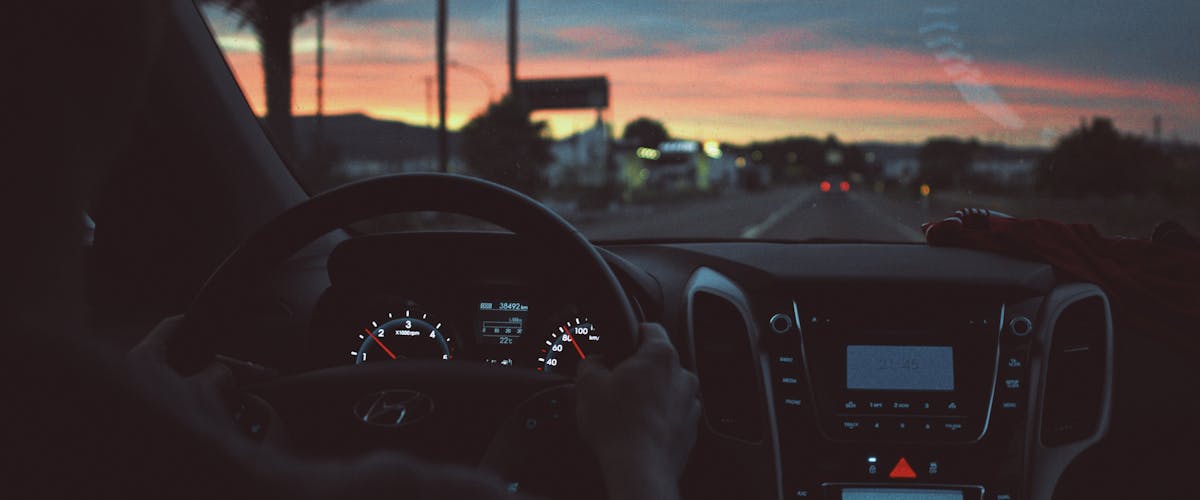
#26 Keep a close watch on the weather forecast and change plans accordingly
Weather can be so unpredictable sometimes. you most certainly should check the weather forecast while planning the trip to see what clothes to carry, what activities to plan, and so on. but, as accurate as weather forecasts are, there are times when the weather changes unpredictably. keep a close watch on the forecast every day of your trip, especially when you’re planning to cover long distances. have a rough backup plan in mind, in case mother nature decides to throw some weather hazards your way., #27 kit your car out and carry spare parts, even though vehicles are made of a gazillion different parts, sometimes even if one of those parts stops working, you’re going to have trouble. there are some essential parts to a car where it helps to have a spare, so you don’t end up having to ditch your car in the middle of nowhere. spare tires, car battery, water pump, jumper cables, and a timing belt. if you want to keep even more items handy, that’s perfectly alright, but you should at least have these few essentials just in case there’s a breakdown on your road trip..

Lakshmi Menon
Born to parents bit by the wander bug, Lakshmi calls her love for travel "hereditary and habitual". Perpetually ensconced with a book in her hand and a mug of coffee in the other, she has been to over 15 countries in her 23 years of existence and is currently saving miles and money for her solo trip to Iceland. Always hustling towards the least trodden path, she has encountered some wonderful people during her escapades and if you ever meet her, she won't stop gushing about them.
Be a smart traveler
The first to know about trending destinations, travel deals, tips and all things travel.
- Travel Recommendations
- The Taste of Travel
- Tips & Tricks
- Travel Experiences

17 tips for the perfect road trip

There’s no question about it; road trips are awesome. Regardless of what country you’re driving in, Thelma & Louise and Jack Kerouac won’t be far from your mind – even if you are sleeping in 5-star hotels and driving a top-of-the-range BMW.
A successful road trip will stay with you for life. The ability to just get up and go and the absolute thrill of uncertainty; where will you sleep? Where will you eat? When will you get to your next stop?
It’s up to you to choose where to go, when to go and what kind of budget you’ll have. Our 17 travel tips cover all kinds of road trips, in all kinds of countries – consider this your road trip 101.
1. Google Maps
A great place to start. Enter your start and final destination, and get an idea of timing. Adjust the route and see where you can go and how long it’ll take you (you can also see if you’re just a few hours shy of somewhere you might not have originally thought of, but would love to visit). Make sure you’ve got your basic route worked out, your A to B, but don’t have every single mile written in stone. You’ve got to have room for the unexpected turns, the snap decisions and the ‘I wonder what’s down here?’ moments.
2. What car?
What kind of car you need depends on your destination, trip type and how many people you will be. Think about how likely you are to need 4-wheel drive, high clearance or a convertible, and book accordingly. Make sure that you book in advance, choose unlimited mileage (unless you’re absolutely positive about the length of your trip), and insure yourself!
If your trip is going to be a long one, a couple of months or more, you might want to think about buying a used car and selling it on when you’re done. Make sure you get it checked over before signing anything though – the last thing you need is a break down in the middle of nowhere!
Few things go together as well as music and the open road. There’s going to be plenty of time for tunes, so make sure you’ve downloaded some playlists to your smartphone (and don’t forget the USB cable). That said, it’s wise to check out local radio as well to hear the kind of music you probably wouldn’t listen to back home, probably won’t think you’ll like, but probably come to love.
To help get you in the mood, check out momondo’s road trip playlist (if your browser is having trouble, use this link instead).
4. Roadtrippers
Check out the great site Roadtrippers . It’s a gold mine of information, from quirky roadside sights to accommodation. Covering the entire globe, it includes millions of the world’s most interesting destinations and sights.
5. Roads less traveled
Highways might be fast, but you’ll miss a lot. If possible (given time and terrain), take the road less traveled. You’ll see so much more, meet the locals and venture down paths you’d never even have seen. On a similar note: take that detour! See a sign for an odd sounding ghost town or weird tourist attraction? Follow it! Now’s your chance. Spontaneity rules on road trips.
6. Eat local and stay local
Give the local grub a go – even if you have no idea what it is. After all, it might be the only chance you get. The same goes for accommodation: it might be tempting to stay at the shiny new resort, but why not stay at the unique B&B/kitsch motel/mom and pop place down the road?
If you can’t decide, check the Near Me Tonight feature on our app (for iPhone and Android ), and see the available rooms near you for that night.
7. Cool bag
Who knows when you’ll next be able to grab a bite to eat? Pack a cool bag – or splash out on an electric car cool box – and store drinks and snacks in case you get hungry (or in case you get a little lost …).
8. Camp (even in your car)
Depending on your budget – and on your wheels – you might consider camping instead of hotels or motels. It’s cheap, easy and a great way to meet people. If you’ve got a large car or van, you can even sleep in your vehicle at some campsites, RV campsites, and in some petrol stations and Walmart stores .
9. Travel mate
Road trips can make or break a friendship. Sure, they make you laugh, but imagine being stuck in a car with them for six hours straight, when the GPS breaks and they can’t read a map … If that all sounds fine, think tastes: are they as interested in local history as you, or are they more interested in finding the nearest bar?
Make sure you find the right travel mate to match your temperament, can do something well that you can’t do at all (e.g. read maps, speak a local language), and one who can handle you when you’re at your best – and worst.
10. Buy a GPS
Don’t hire one. The daily charges will soon run up to much, much more than it would cost to buy one – and you can use your own over and over again, at home and abroad.
Read more: get more tips for travel gadgets you need to own
11. Go offline
Yes, Google Maps is great, but there’s something about a paper map– you know, the things you occasionally see gathering dust in the back of taxis or your parents’ car. You’d be surprised at how useful it can be – both for finding out where you are, and for note taking on impromptu stops (and think of the nostalgia value when you’re home).
12. Book ahead
Certain attractions, e.g. Alcatraz, Chateau de Versailles, sell out months in advance. Try to find the main sights you want to see, and work your trip around these. The same applies for some hotels in popular spots, like The View Hotel in Monument Valley . Make sure you don’t miss out and book ahead !
Read more: get the best hotel deals with these five exclusive insider tips
13. Rules of the road
Make sure you’re down with the rules of the road for the country you’re visiting. You can find tips and advice on Europe from The AA , Australia from the official tourism site , and the US (note that each state has its own rules), from USA.gov .
If you’re traveling to a country in Asia, be sure to check for driving advice for tourists on that country’s government or official tourism site.
14. SIM card
If your phone is unlocked, pick up a local SIM card to make sure you keep your costs down, and to make sure people can contact you easily. There’s always Skype and WhatsApp Messenger, but those do need a Wi-Fi or mobile data connection to work.
Read more: check out our ultimate travelling checklist to make sure you’ve got the essentials covered
15. Gas stations
Gas stations can be a godsend. The bigger ones have toilets, semi-decent food, drinkable coffee and all kinds of treats for the weary traveler. Some might even let you use their facilities and park overnight in their carpark.
16. Stay safe!
Go down those small roads, get out of your comfort zone and explore – but be sensible. Listen to advice, always let someone know where you are and where you’re going – and don’t be a hero.
On a more practical note, keeping a few gallons of water in your car at all times can literally be a lifesaver. If you have the room, a gallon of gas is a good idea too.
17. Download apps
Make sure your smartphone is loaded up with useful apps. For a good start, check out our incredibly useful top travel apps that aren’t strictly travel apps – you might be surprised!
Chances are you’ll be passing through a city or two on your trip, so check out our momondo places city guide series for iPhone: 14 (and counting), free city guide apps in English, with 200+ local tips, each colour-coded by mood and offline maps (no data roaming).
Now you’ve got the basics covered, it’s time to start thinking about booking your Thunderbird car to get the best deal . Hit the road!
Whatever country you’re headed to, have a search on momondo Inspiration – it’s full of expert news and tips on where to eat , what to see , where to stay and what to do . If you’re still dithering, find out how you can accomplish your travel dreams and get going!
About the author.

Explore more articles

How to Plan The Perfect Trip!
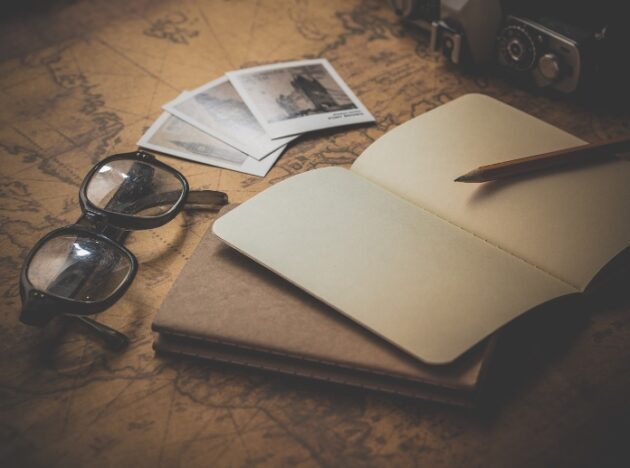
When it comes to planning the perfect vacation, the details can be daunting. From researching destinations and accommodation to flight booking and packing, you have a lot of tasks to complete. It can be overwhelming, but with the right guidance, you can create a smooth and enjoyable travel experience.
In this blog, we will guide you on how to plan the perfect trip. We’ll walk you through setting a travel budget, choosing a destination, researching accommodation, planning your itinerary, booking flights and accommodation, packing for the trip, creating a travel planner, and making the most of your trip. So, let’s get started!

Table of Contents
- 1 Introduction to Trip Planning
- 2 Setting a Travel Budget
- 3 Choosing a Destination
- 4 Researching Accommodation
- 5 Planning Your Itinerary
- 6 Booking Flights and Accommodation
- 7 Packing for the Trip
- 8 Creating a Travel Planner
- 9 Making the Most of Your Trip
- 10 Conclusion
Introduction to Trip Planning
Trip planning can be overwhelming and time-consuming, but it doesn’t have to be. With the right guidance, you can plan a stress-free and enjoyable trip. Here are some tips to help you get started:
- Set a realistic travel budget. Before you begin planning, set a travel budget that is realistic, achievable, and suitable for your needs.
- Research destinations. Take the time to research different destinations and decide which one is best for you. Consider factors such as cost, climate, and attractions.
- Research accommodation. Research the different types of accommodation available in the destination you choose and decide which one is most suitable for you.
- Plan your itinerary. Plan an itinerary that covers all the attractions you want to see and activities you want to do.
- Book flights and accommodation. Once you have planned your itinerary, book flights and accommodation.
- Pack for the trip. Make sure you pack all the essentials and anything you may need for your trip.
- Create a travel planner. Create a travel planner to help you stay organized and to keep track of all the details.
- Make the most of your trip. Once you’re on the trip, make the most of it by taking advantage of all the opportunities available and making the most of your time.
Now that we’ve covered the basics of trip planning, let’s look at each step in more detail.
Setting a Travel Budget
Setting a realistic travel budget is the first and most important step in planning a perfect trip. It’s important to set a budget that you can stick to and that’s suitable for your needs. Here are some tips for setting a travel budget:
- Decide on a total budget. Decide on a total budget for your trip and stick to it.
- Break it down. Break down the total budget into categories such as accommodation, meals, transportation, activities, and so on.
- Calculate costs. Calculate the costs for each category and factor in any extra costs such as taxes and fees.
- Look for deals. Look for deals on flights, accommodation, and activities to save money.
- Set a daily budget. Set a daily budget and try to stick to it.
Once you have set a travel budget, it’s time to start researching destinations.
Choosing a Destination
Choosing a destination is one of the most important steps in planning a perfect trip. There are many things to consider when choosing a destination such as cost, climate, attractions, and activities. Here are some tips for choosing the perfect destination:
- Research destinations. Research different destinations to get an idea of what’s available and what’s suitable for you.
- Consider cost. Consider the cost of the destination and the cost of living there.
- Consider climate. Consider the climate of the destination and look for destinations with the climate you prefer.
- Consider attractions. Consider the attractions and activities available in the destination.
- Choose a destination. Once you have researched different destinations, choose one that best suits your needs and budget.
Once you have chosen a destination, it’s time to start researching accommodation.
Researching Accommodation
Researching accommodation is an important step in planning a perfect trip. There are many types of accommodation available, so it’s important to research and find the one that’s best for you. Here are some tips for researching accommodation:
- Research accommodation types. Research the different types of accommodation such as hotels, hostels, Airbnb, and camping.
- Consider cost. Consider the cost of the accommodation and factor in any additional costs such as taxes and fees.
- Consider amenities. Consider the amenities available in the accommodation such as Wi-Fi, air conditioning, and so on.
- Look for deals. Look for deals on accommodation to save money.
- Read reviews. Read reviews to get an idea of what other people think of the accommodation.
Once you have chosen the right accommodation, it’s time to start planning your itinerary.
Planning Your Itinerary
Planning your itinerary is an important step in planning a perfect trip. It’s important to plan an itinerary that covers all the attractions and activities you want to do. Here are some tips for planning your itinerary:
- List attractions. List all the attractions and activities you want to do in the destination.
- Consider timing. Consider the timing of the attractions and activities and plan accordingly.
- Consider logistics. Consider the logistics of the attractions and activities such as transportation and entry fees.
- Allow time for rest. Allow time for rest and relaxation in between the attractions and activities.
- Plan for contingencies. Plan for contingencies such as bad weather or unexpected delays.
Once you have planned your itinerary, it’s time to book flights and accommodation .
Booking Flights and Accommodation
Booking flights and accommodation is an important step in planning a perfect trip. It’s important to book flights and accommodation that are suitable for your needs and budget. Here are some tips for booking flights and accommodation:
- Book in advance. Book flights and accommodation in advance to get the best deals.
- Compare prices. Compare prices of different airlines and accommodation to get the best deals.
- Consider convenience. Consider the convenience of the flights and accommodation and choose ones that are suitable for your needs.
- Look for deals. Look for deals on flights and accommodation to save money.
- Read reviews. Read reviews to get an idea of what other people think of the flights and accommodation.
Once you have booked your flights and accommodation, it’s time to start packing for the trip.
Packing for the Trip
Packing for the trip is an important step in planning a perfect trip. It’s important to pack all the essentials such as passports and TEFL certificates and anything else you may need for your trip. Here are some tips for packing for the trip:
- Make a list. Make a list of all the items you need to pack and ensure you have everything.
- Pack light. Pack light and only bring the essentials.
- Pack for the weather. Pack for the weather and consider the climate of the destination.
- Pack for activities. Pack for any activities or adventures you may be doing and ensure you have the right gear.
- Pack for convenience. Pack for convenience and bring items that will make your trip easier such as a power bank, travel pillow, and so on.
Once you have packed for the trip, it’s time to create a travel planner.
Creating a Travel Planner
Creating a travel planner is an important step in planning a perfect trip. It’s important to create a travel planner to help you stay organized and to keep track of all the details. Here are some tips for creating a travel planner:
- List all details. List all the details of your trip such as flight and accommodation bookings, itinerary, and contacts.
- Store information. Store the information in a secure place such as a cloud storage or a travel app.
- Include emergency contacts. Include emergency contacts such as your embassy and local police in case of an emergency.
- Set reminders. Set reminders for important tasks such as checking in for flights and booking activities.
- Create a checklist. Create a checklist to ensure you have everything packed and ready to go.
Once you have created a travel planner, it’s time to make the most of your trip.
Making the Most of Your Trip
Making the most of your trip is an important step in planning a perfect trip. It’s important to take advantage of all the opportunities available and make the most of your time. Here are some tips for making the most of your trip:
- Explore the destination. Explore the destination and go off the beaten path to discover hidden gems.
- Try new things. Try new things and activities such as food, culture, and adventure.
- Keep an open mind. Keep an open mind and be open to different experiences.
- Connect with locals. Connect with locals and learn more about the destination.
- Take lots of photos. Take lots of photos to capture the memories of your trip.
Now that we’ve covered how to make the most of your trip, let’s look at the conclusion.
Planning the perfect trip can be daunting, but with the right guidance, you can create a smooth and enjoyable travel experience. In this blog, we have provided tips on how to plan the perfect trip, from setting a travel budget to making the most of your trip.
We have also discussed the importance of creating a travel planner to help you stay organized and to keep track of all the details. So, if you’re planning a trip, follow these tips to ensure you have a stress-free and enjoyable experience.
Happy travels!
travel planner , trip planning
- Share full article
Advertisement
Supported by
Travel Tips
How to Have a Perfect Road Trip

By Shivani Vora
- July 4, 2017
Unlike flying, which is often stressful, a road trip is a journey that can be as enjoyable as the destination you’re headed to, according to Sheryl Connelly, a trend forecaster for Ford Motor Company , who takes road trips often with her family. “In a world of increasing distractions, being in a car for an extended period of time is a great way to bond with your family or friends and see sights you may not get to otherwise,” she said.
Here, Ms. Connelly’s tips on how to have a fun-filled and safe road trip:
PACK SMART Besides your clothes and toiletries, road trip essentials include a basic first-aid kit, wet wipes to clean up any messes, a charger for your cellphone, jumper cables to jump-start your vehicle in case it dies, and a spare tire — surprisingly, Ms. Connelly said, many drivers don’t have one in their cars. And, what’s a road trip without food? Bring a cooler of finger foods like whole fruit, cheese sticks, roasted nuts, granola bars and indulgent treats like a bar of your favorite chocolate.
BANISH BOREDOM Keep your road trip entertaining. Old-fashioned games such as “I Spy” are a fail-safe option, and so is music. “Have every passenger create a playlist, and rotate listening to songs from each one,” she said. Other ideas include audiobooks and podcasts of TED Talks.
STOP EVERY FEW HOURS Break up the monotony of being in the car by stopping every two to three hours to get some fresh air and stretch your legs. “After sitting in the car for too long, the tendency is to get fatigued, and even a five-minute stop will help counter the sluggishness,” she said.
BUILD IN SIGHTSEEING Use your road trip as an opportunity to explore the destinations you’re driving through. “Don’t just observe the landscape,” Ms. Connelly said. “Participate in the community you’re surrounded by.” Try seeing a small, quirky museum, dining at a restaurant known for serving tasty regional specialties or visiting a local park or farmers’ market — the app iExit , available on Apple and Android, has information on attractions off exits on major highways.
STAY CONNECTED When driving through remote areas, spotty cellphone reception and dead zones are inevitable, and in an age when many drivers (Ms. Connelly included) rely on map apps to help them navigate, it’s a good idea to know your car navigation system and in-car Wi-Fi options before your trip. Some of the latest vehicles, for example, have Wi-Fi hot spots so connectivity isn’t an issue. Otherwise, Ms. Connelly advised reviewing the route you will be taking before you set off and bringing along a detailed map of the areas you will be traveling through.
Brought to you by 76®
A practical guide to planning the perfect day trip
Get your fill of adventure and exploration—no overnight stay required
By Archana Ram

There’s a lot to love about the open road: fresh air, incredible sights, connecting with people in a new place. But sometimes life gets in the way, be it a lack of vacation days or kids waiting for you at home. That’s why we love day trips. It packs that sense of wanderlust into a neatly edited one-day excursion. You don’t have to lug a carry-on or figure out how you’ll fit your backpacks, cooler, tent, and sleeping bags into the car.
But just because it’s a single day doesn’t mean some planning isn’t required. With a little foresight, you can make the very most out of a 24-hour getaway, from packing the right provisions to loading your phone with helpful apps. Here’s what you need to know:
How to plan
Consider budget. Cost factors into everything, from where you’ll go to which restaurants you’ll eat at to permits you’ll need to enter national parks. Deciding in advance how much you want to spend—especially when traveling with a group—can help make decisions on where to go and what to buy that much easier. And keep in mind some places (i.e. museums, hot springs, etc.) offer discounts for locals.
Pick your theme. Before you get to the “where,” think about the “what.” Maybe it’s making stops along Route 66 , hiking forest trails, or exploring eerie old resorts. Whatever the theme, stick to one or two to avoid a watered down itinerary. Then, once you’ve got your themes figured out, start making lists of all the top locales that align with them—ideally focusing on places no more than three hours away to maximize trip time.
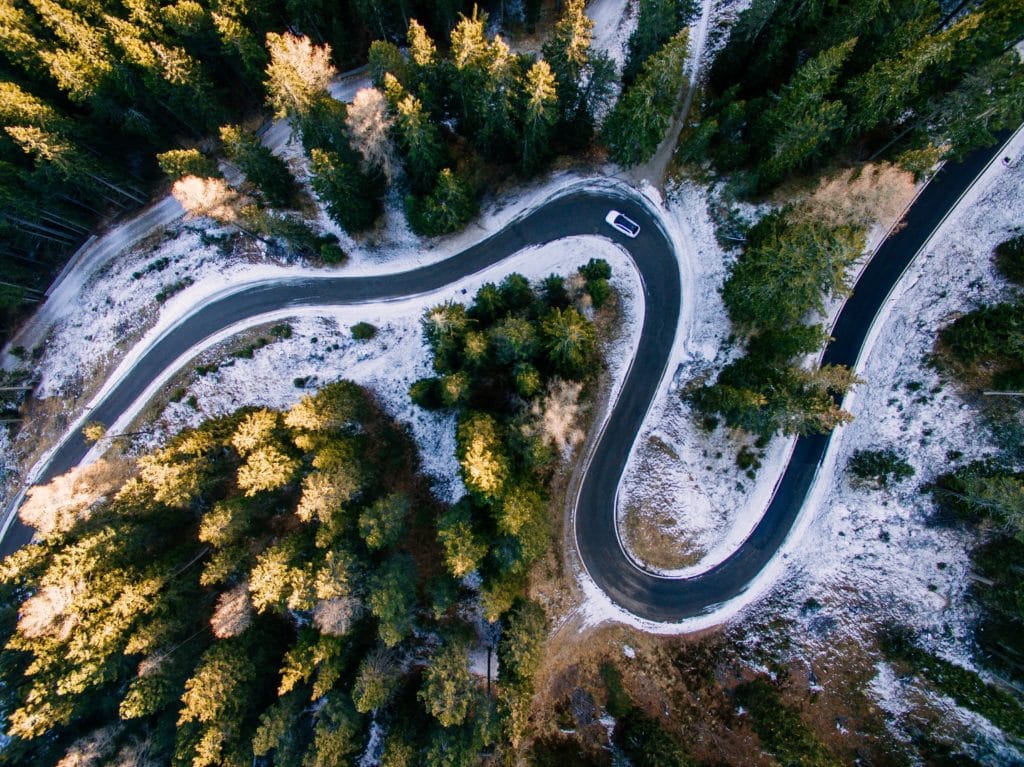
Limit your areas. Some people fall into the trap of packing too much into a day trip because it’s, well, a day trip. But there’s no point in returning home ragged after running around all over town. Once you’ve picked your destination, try to concentrate on two or three specific areas. It’ll give you more time to hit the streets, trails, and coastlines, rather than spending all of your time in the car. Remember, it’s about connecting with the place, not getting a superficial scope of things. For example, instead of trying to traverse the whole stretch of Joshua Tree National Park —which can take several hours even without making any significant stops—pick a side, like the western portion, where you’ll find the titular trees (you’ll have extra time to scout the antique shops in town, too!).
What about weather? Do you like the blaring heat? What about getting rained on? These factors can help whittle down options for places and timing. But remember, if you don’t mind putting up with some less-than-perfect conditions, you could be rewarded with fewer crowds. But crowds aside, always be aware of weather conditions and safety.
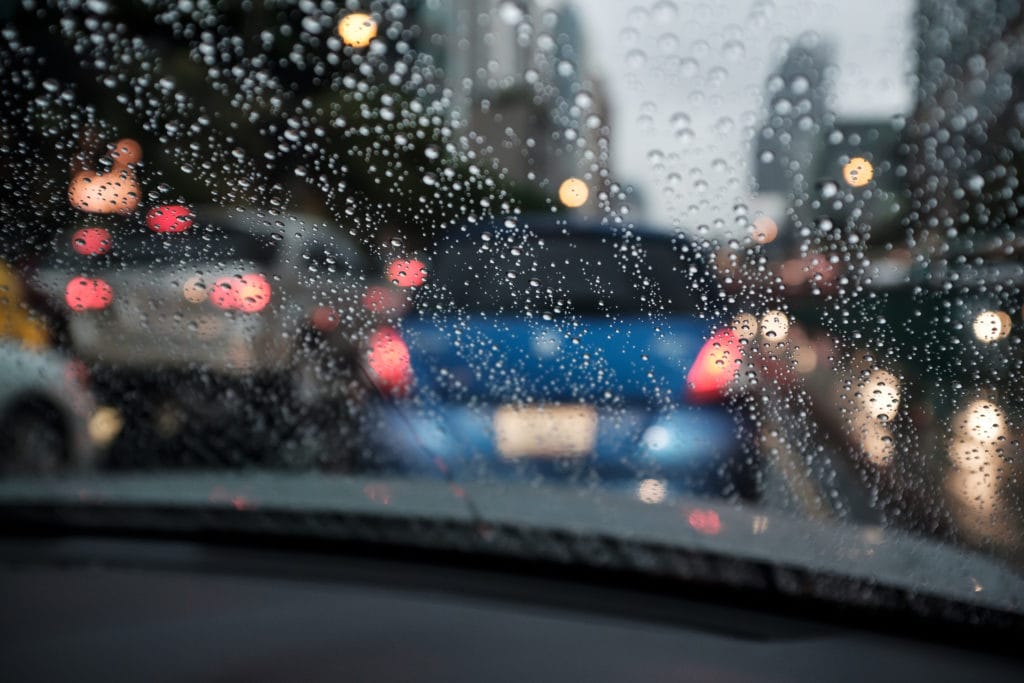
Examine your car. You want to make the most of your getaway without any car troubles sucking up precious time. Before hitting the road, take the time to ensure your car is armed with a full tank of gas, oil, jumper cables, and flat tire fixes—whether that’s a jack and spare or the number for roadside assistance . And if you’re driving in winter conditions, make sure you have the proper cold weather provisions .
Check schedules. Maybe you’re visiting a museum. Or touring an iconic landmark. If your attraction comes with a timetable, double check to make sure it’ll be open both the day and times you want to visit.
What to pack
Charger. Admit it—your phone is basically another appendage, and on a day trip you’ll likely use it for navigation, music, and finding places to stop. That all takes a lot of juice, so bring either a USB cable to charge within your car or a remote battery pack.
Phone mount. Looking down at the GPS while driving is dangerous. There are plenty of dashboard options out there, some of which even have wireless and solar charging capabilities.
Bring cash . Stash some dollar bills in your wallet and put that ATM fee toward your tip at a roadside diner or a unique find at an antique shop. Many local, mom-and-pop establishments don’t accept credit cards or any form of digital payment.
Flashlight. We know it’s a “day” trip, but should you have car trouble, drop your keys in the grass, or need to see exactly where to pick up the dog poop, you’ll be thankful you have a light at the end of the day. A headlamp is an even easier, allowing you to go hands-free.

Snacks. In case chips and cookies from the local service station don’t sound appealing, oranges, bananas, nuts, and peanut butter sandwiches hold up well. And if you pack enough food, you might even consider subbing those as a lunch-on-the-go so you can make time for other activities.
SPF. Whether it’s 80 degrees and sunny or sub-zero and snowing, if you’re outside, you should always think about protecting your skin. And if you plan to swim in the ocean, opt for a reef-friendly sunscreen .
Water. This can actually be an easy one to forget. Aim for at least one reusable bottle per person. (And don’t forget about the dog !)
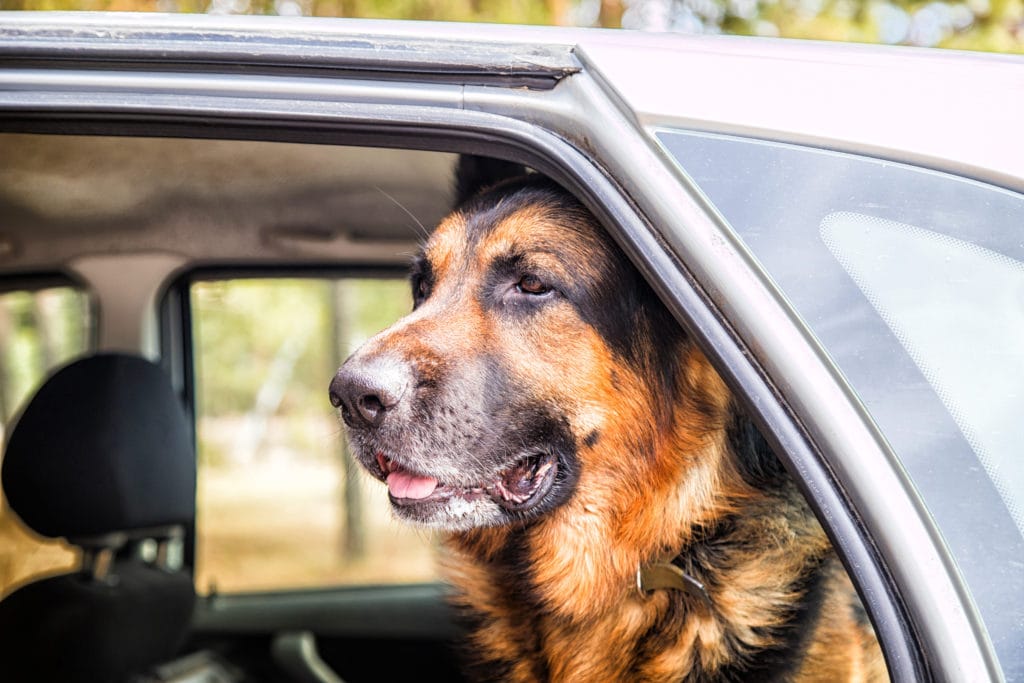
Cooler. Larger ones are ideal for beaches and parks. Cooler backpacks are a better idea if you plan to hike or bike.
Towels. They come in handy for everything from picnicking to hitting the beach to cleaning up after muddy treks.
When to ditch the plans
There’s merit in planning things ahead of time. It can mean less traffic, fewer disappointments if something is closed, and avoiding unnecessary purchases. But we all know that spontaneity is what makes a road trip truly memorable. So don’t be afraid to take that local’s recommendation or drive the scenic detour or spend your whole day in a place that was just supposed to be a pitstop. Those off-the-itinerary moments are what make hopping in a car and traveling to a new destination so fulfilling. You’re in control, so seize the day (trip).
- Related Articles
- Latest Articles
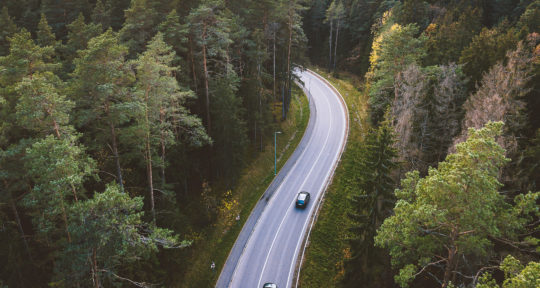
How to optimize your long road trip so you don’t miss anything

The dos and don’ts for sightseeing like a pro
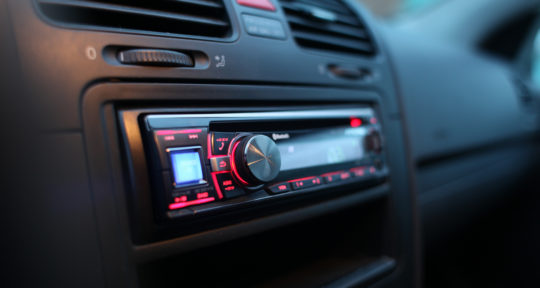
How to create a road trip playlist that everyone will love
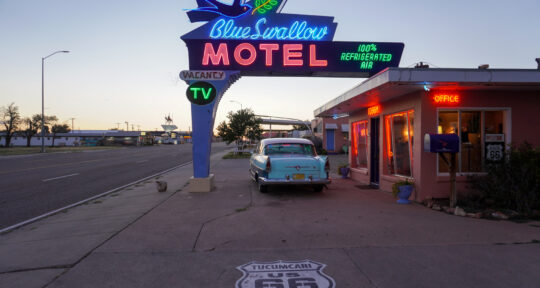
The most underrated route 66 motels

Long weekend trip itineraries around the U.S.
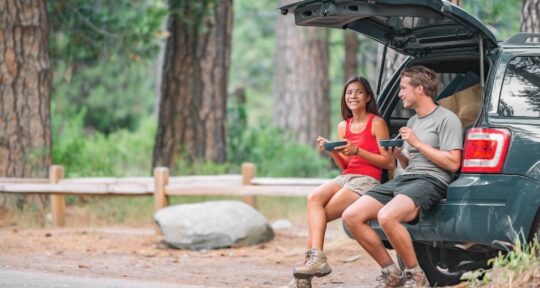
The best foodie road trips for Southern eats
Get the most inspiring stories from the road sent directly to your inbox..

- Sign up Log in Sign out
- Log in Sign out
Plan your journey, find amazing places, and take fascinating detours with our app.
If you used to sign in with Roadpass, you should now use the same username and password to log in directly with Roadtrippers above.
We couldn't find an existing Roadtrippers account using that service. Please try signing in with another option.
We need your email address to send you trip itineraries and other updates.
How do you want to plan your trip?
With just a few questions, our newest Premium feature, Autopilot, will plan your next adventure.


23 Tips For The Perfect Road Trip

Travel With Me 24 X 7
Travel itinerary, Travel guide and Destination reviews
Best Michigan Road Trip Itinerary – Perfect Road Trip to Michigan
Are you looking for a Michigan road trip itinerary? Then read this blog on the perfect road trip to Michigan, a treasure trove of natural beauty, historic charm, and vibrant cities. A road trip through Michigan offers a diverse experience, from the shores of the Great Lakes to quaint towns and bustling cities.
👉🏼7 Best Places In US That Look Like Europe – European like cities in the US

Michigan Road Trip Itinerary – Road Trip Through Michigan
This Maine road trip itinerary takes you on a scenic journey, highlighting why each stop is worth visiting, things to do, scenic stops in between, and tips to make the most of your trip.
Day 1: Detroit city tour and then drive to Ann Arbor
- Distance: 45 miles

Start your road trip in Detroit, a city known for its rich automotive history, vibrant arts scene, and revitalized downtown. The drive to Ann Arbor is short but scenic, offering a transition from urban energy to this college town’s charming, tree-lined streets.
Things to Do in Detroit:
- The Henry Ford Museum: Explore America’s history of innovation with exhibits on automobiles, aviation, and more.
- Detroit Institute of Arts: Home to one of the largest and most significant art collections in the U.S.
- Riverwalk: Stroll along the Detroit River with stunning views of Canada.
Scenic Stops – Belle Isle Park: A beautiful island park on the Detroit River with a conservatory, aquarium, and breathtaking views.
Overnight Stay – Graduate Ann Arbor – A mid-budget hotel near the University of Michigan with a quirky, collegiate vibe.
Pro Travel Tips – Detroit offers numerous free or low-cost activities, such as visiting the Eastern Market or exploring public art installations.

Day 2: Ann Arbor city tour and drive to Holland
- Distance: 145 miles
- Route: I-94 West to I-196 West
Ann Arbor’s vibrant cultural scene and the scenic drive to Holland, a town known for its Dutch heritage, make for an enriching day. The route takes you through picturesque landscapes, with opportunities for scenic detours.
Things to Do in Ann Arbor:

- University of Michigan Museum of Art: A diverse collection of over 19,000 works of art.
- Nichols Arboretum: A beautiful, sprawling garden perfect for a peaceful walk.
- Main Street: Explore local shops, cafes, and restaurants in the heart of downtown.
Scenic Stops:
- Kalamazoo Nature Center: A quick detour offers nature trails, wildlife, and beautiful views.
- Saugatuck Dunes State Park: Before reaching Holland, stop for a hike among the towering dunes and pristine beaches.
Overnight Stay – CityFlatsHotel Holland – An eco-friendly boutique hotel in downtown Holland’s heart.
Pro Travel Tips – If you’re visiting in spring, attend Holland’s Tulip Time Festival, a vibrant celebration of the town’s Dutch heritage.
👉🏼10 Best Road Trips from Phoenix, Arizona – Perfect Weekend Trips + Short Scenic Drives

Day 3: Holland city tour and drive to Sleeping Bear Dunes National Lakeshore
- Distance: 120 miles
- Route: US-31 North
The drive from Holland to Sleeping Bear Dunes is one of Michigan’s most scenic routes. You’ll travel along the Lake Michigan shoreline, offering endless water views and quaint lakeside towns.
Things to Do in Holland:
- Windmill Island Gardens: Home to the only authentic Dutch windmill operating in the U.S.
- Holland State Park: A perfect spot for a beach day or a hike with views of Big Red, Michigan’s most famous lighthouse.
- Grand Haven: A picturesque town known for its beaches, boardwalk, and musical fountain.
- Muskegon: Visit Pere Marquette Park, a beautiful beach favorite among locals.
Overnight Stay – Lakeshore Inn Traverse City – A comfortable, mid-budget option near Traverse City with easy access to Sleeping Bear Dunes.
Pro Travel Tips: Sleeping Bear Dunes offers some of the best hiking in Michigan. For incredible vistas, check out the Pierce Stocking Scenic Drive.

Day 4: Sleeping Bear Dunes tour and then drive to Mackinac Island
- Distance: 100 miles to Mackinaw City, then ferry to Mackinac Island
- Route: M-22 North to US-31 North
Sleeping Bear Dunes is a natural wonder, and the drive to Mackinaw City offers breathtaking views of Lake Michigan. Mackinac Island, accessible only by ferry, is a step back in time, with no cars allowed and horse-drawn carriages as the primary mode of transportation.
Things to Do in Sleeping Bear Dunes:

- Dune Climb: Challenge yourself with a hike up the towering dunes.
- Glen Arbor: Explore this charming village known for its art galleries and boutiques.
- Charlevoix: A beautiful town known for its unique “Mushroom Houses” and stunning lakeshore.
- Petoskey: Famous for its historic Gaslight District and as the place where Ernest Hemingway spent his summers.
Overnight Stay – The Inn at Stonecliffe – A historic, mid-budget hotel on Mackinac Island offering serene views of Lake Huron.
Pro Travel Tips: Plan your visit to Mackinac Island early, as hotels can book quickly, especially in the summer.
Day 5: Mackinac Island city tour and drive to the Upper Peninsula (Pictured Rocks National Lakeshore)

- Distance: 140 miles from St. Ignace (after ferry) to Pictured Rocks
- Route: I-75 North to M-123 North to M-28 West
The Upper Peninsula (U.P.) is a pristine wilderness, and Pictured Rocks National Lakeshore is one of its crown jewels. The journey offers a mix of rugged landscapes, serene forests, and stunning views of Lake Superior.
👉🏼Best Day Trips From Chicago For Families (Weekend Trips From Chicago)
Things to Do on Mackinac Island:
- Fort Mackinac: Explore the island’s rich history at this well-preserved 18th-century fort.
- Arch Rock: A natural limestone arch offering panoramic views of Lake Huron.
- Biking the Island: Rent a bike and explore the island’s 8-mile perimeter road.
- Tahquamenon Falls State Park: One of the largest waterfalls east of the Mississippi, surrounded by lush forests.
- Seney National Wildlife Refuge: A haven for birdwatchers and nature enthusiasts.
Overnight Stay – Pictured Rocks Inn & Suites, Munising – A comfortable mid-budget hotel near the Pictured Rocks National Lakeshore entrance.
Pro Travel Tips – Book a boat tour at Pictured Rocks to see the colorful cliffs from the water – it’s the best way to experience this natural wonder.
FAQs – Road Trip to Michigan – Road Trip in Michigan
Let’s read some frequently asked questions about the Michigan road trip, which will help you plan a trip through Michigan.

- What is the best time of year to take a Michigan road trip?
The best time to take a Michigan road trip is from late spring (May) to early fall (October). During this period, you can enjoy mild temperatures, blooming flowers, and vibrant fall foliage. Summer is the peak season, with warm weather perfect for exploring beaches and outdoor activities.
- How many days do I need for a Michigan road trip?
A 5 to 7-day road trip is ideal for exploring Michigan’s highlights, including Detroit, Ann Arbor, the Lake Michigan shoreline, Mackinac Island, and the Upper Peninsula.
- Are there any scenic routes I should take on a road trip to Michigan?
Yes, Michigan offers several scenic routes:
M-22: A beautiful drive along the Lake Michigan shoreline through the Leelanau Peninsula.
US-31: A scenic route along the west coast of Michigan, offering views of Lake Michigan and charming lakeside towns.
M-123: A picturesque route through the Upper Peninsula, passing through Tahquamenon Falls State Park.
- How do I get to Mackinac Island?
Mackinac Island is accessible only by ferry from Mackinaw City (from the Lower Peninsula) or St. Ignace (from the Upper Peninsula). The ferry ride takes about 15-20 minutes. Major ferry operators include Shepler’s Ferry and Star Line Ferry.

Michigan does not have toll roads on major highways. However, you may encounter bridge tolls, such as the Mackinac Bridge toll. Depending on the season, the Mackinac Bridge toll for passenger vehicles is around $4.00 each way.
- Are there any entrance fees for the parks and attractions?
Yes, some parks and attractions may require entrance fees:
- Sleeping Bear Dunes National Lakeshore: $25 per vehicle for a 7-day pass.
- Pictured Rocks National Lakeshore: $20 per vehicle for a 7-day pass.
- Tahquamenon Falls State Park: Requires a Michigan Recreation Passport, which costs $12 for Michigan residents and $36 for non-residents.
- What should I pack for a road trip through Michigan?
Pack layers, as Michigan weather can vary throughout the day. Essentials include comfortable walking shoes, a rain jacket, sunscreen, bug spray, a hat, and a reusable water bottle. Bring warmer clothing for cooler evenings if you visit during the fall.
This Michigan road trip itinerary perfectly blends city excitement, small-town charm, and natural beauty. Each stop offers something unique, making it a road trip you will never forget. Enjoy your journey through the Great Lakes State!
Picture Courtesy – CanvaPro
Follow more on social media channels at
Facebook Twitter Instagram Pinterest
All content and photos belong to travelwithme247blog(dot) com , and using content/photos without permission would result in legal action.
DISCLAIMER – The blog’s content is solely my views of a place or a thing. This does not offend any class, religion, ethnicity, or nation. My views can change from time to time. This blog may contain some advertisements or links to commercial products, so this site is not responsible after you click on those advertisements.
We are the independent owner of this site, and the views expressed in this are our own. I own all the photographs. There can be slight differences in distances, locations, or some details for which I (owner) am not responsible. This post may contain some affiliate links, which means at no additional cost to you. I will earn money if you click through affiliates and make a purchase.
Share this:
- Click to share on Telegram (Opens in new window)
- Click to share on Reddit (Opens in new window)
- Click to share on Twitter (Opens in new window)
- Click to share on WhatsApp (Opens in new window)
- Click to email a link to a friend (Opens in new window)
- Click to share on LinkedIn (Opens in new window)
- Click to print (Opens in new window)
- Click to share on Facebook (Opens in new window)
- Click to share on Flipboard (Opens in new window)
- Click to share on Pinterest (Opens in new window)
Leave a Reply Cancel reply
This site uses Akismet to reduce spam. Learn how your comment data is processed .
Discover more from Travel With Me 24 X 7
Subscribe now to keep reading and get access to the full archive.
Type your email…
Continue reading
- Entrepreneurship
August 28, 2024
Keith Lee’s Baltimore Trip Benefits The Rooted Rotisserie Restaurant, Rated 10/10 For Customer Service
After a glowing review, the restaurant was almost practically booked for the entire week.
A mention from TikTok food critic Keith Lee can do wonders for some of the restaurants that may get a visit from him. When Lee posted that he was heading to Baltimore , several of the businesses were clamoring for that visit, and the Rooted Rotisserie was the latest to get a cosign from the popular critic.
According to The Baltimore Sun , the Burtons got a surprise visit August 24. What some people don’t realize is that Lee doesn’t actually go into the place to taste the food. Typically, he sends others in, without notification, to place the order and bring the food to him. He then eats the meals in his car without interruption or distractions.
As with all other venues, the Burtons did not even know their place was picked to be critiqued. Lee did have some great things to say about the Rooted Rotisserie. He did give an almost perfect score for the “fantastic” duck confit gumbo with duck meat “cooked to perfection” and “crispy and seasoned” potatoes.
“This whole thing has flavor throughout, from the beginning to the end. In my opinion, they balance extremely well,” he said, giving the plate a rating of 9.6 out of 10. After rating several other items from the menu, most receiving the lower end of an eight, he also gave the venue a perfect 10 of 10 rating for customer service.
Amanda Burton, who co-owns the Rooted Rotiserrie with Joseph Burton, said that Lee came back inside the restaurant after eating his meal. Shocked by his presence, Amanda Burton said he introduced himself to the couple and took photos with the staff. But, before leaving, he left a tip of $4,000 and also took care of the checks for the guests who were in the restaurant at the time, leaving an additional $2,000.
His reviews have already worked in the favor of the restaurant. Amanda Burton said that as of August 26, the Rooted Rotisserie was just about completely booked through the end of the week.
So, it’s “all hands on deck as far as staffing,” Joseph Burton said. “Our prep schedule has increased tremendously to make sure we’re fresh, and we’re ordering much more food—much more.”
RELATED CONTENT: Keith Lee Sheds Light On Bay Area Homelessness Crisis, Joined by JPMorgan Chase CEO Jamie Dimon
- Rooted Rotisserie

IMAGES
VIDEO
COMMENTS
5. Always Bring A Sarong. Sarongs can be used as a wrap when you are cold, a towel, a curtain, or a piece of clothing that can be worn dozens of different ways. Solid colors are great, but if you want something that stands out, I love this sarong. Read more: 8 Ways to Wear a Sarong. 6. Always Buy Travel Insurance.
Alternatively, explore 2 small neighbouring countries such as Armenia and Georgia. I wouldn't advise trying to pack in more than 2 countries in a month. 2-3 Month Trip: This is when you can really start exploring several countries within one region i.e. Southeast Asia, East Africa, Eastern Europe, Central America.
Our Top Travel Tips & Resources Here are our favorite travel tips & resources for saving money and planning travel logistics! For more tips, check out our travel tips resource page or our guide to planning a trip. Booking Flights: To score flight deals, search on Google Flights or Kayak. Money-saving tips: fly mid-week or on the weekend; fly ...
Example: You will need more money to finance a 4 month trip when compared to 2 months. It sounds obvious, but the point is to ensure you get the balance right between time and travel funds. Once you establish the amount of time and any specific dates you have to play with, move onto the next planning steps. 2.
It can be good to hit the road in the passenger seat to catch the scenery and enjoy the ride from a different perspective. 3. When road tripping, it is important to have a stockpile of playlists ...
Get Secret Flight Deals. 6. Ask for Time Off. If you're not planning this trip because you already have time off approved, schedule time in your calendar to speak with your boss or submit your time off request as soon as you've nailed down the dates you want.
STEP 6: BOOK YOUR ACCOMMODATION. This is by far the most overwhelming part of how to plan a trip. (It's my least favorite part.) But the further out you do it, the more options and lower prices you will have, making it quicker and painless-er (er…just go with it). Use your map app to see what areas are convenient.
Visit the pubs, historic sights, and memorable coastal scenery along the way. Scotland's North Coast 500: Take a scenic drive through rugged seashores and hilly mountainsides on northern Scotland's 516-mile-long North Coast 500 route. Iceland's Diamond Circle: Turn a visit to Iceland's landmarks into a road trip by traveling along the ...
Consider proximity to attractions, public transportation options, and safety when making your decision. Choose a location that allows easy access to the sights and activities you want to explore. This also accounts for travel days. You don't want to be staying 50 miles from the airport for a 7am flight….
2. Determine Length Of Vacation. The second step when planning a road trip is to determine how long your road trip will be. While the amount of time may vary between people, the amount of time you spend driving everyday is an extremely important consideration.
It has cheap monthly plans, great customer service, and an easy-to-use claims process that makes it perfect for those on the road. Discover Cars - Discover Cars is a car rental aggregator that can help you find the best deals for your next road trip. It pulls data from over 8,000 car rental locations to ensure you always find a great deal!
Everything starts with a travel itinerary as perfect or terrible itinerary can either make or break your adventure. These following ten easy steps will teach you how to create a travel itinerary and how to avoid the most common mistakes. Creating the perfect travel itinerary is an art in a way. As in every industry, there are a few people among ...
Pack Nutritious Snacks. Pack healthy snacks for the trip. Think fruits, protein bars, hard-boiled eggs, nuts, celery and carrot sticks, cherry tomatoes, and other veggies. Junk food can lead to fatigue, so don't blow your diet while on the road. Also, pack plenty of water.
The easy way to plan a trip, step by step. Step 1: Choose your destination. Step 2: Make sure you are visiting at the best time of year. Step 3: Decide how long your trip will be. Step 4: Work out your travel budget. Step 5: Book transportation such as flights. Step 6: Organize your accommodation. Step 7.
You always need less than you think. Also Read: Essential Things to Pack for a Trip to Europe. 12. Enjoy and Leave Some Room to Get Lost. Don't plan every part of your trip. As much as I believe planning a trip is important, a big part of the fun is leaving some room to get lost and to get off the beaten path.
Check the tire pressure for any signs of a possible flat. Fill up the car with a full tank to skip the hassle of finding a station in the first few hours of your road trip. Always keep a spare tire or two in the car just in case you need it on the way, and of course, learn how to change a tire before you hit the road.
Step 8: Get a rental car/figure out your mode of transport. Step 9: Plan things to do/book tours. Step 10: Plan places to eat. Step 11: Make copies of important documents. Step 12: Get a local sim card or arrange roaming data. Step 13: Withdraw money overseas.
Pack a cool bag - or splash out on an electric car cool box - and store drinks and snacks in case you get hungry (or in case you get a little lost …). 8. Camp (even in your car) Depending on your budget - and on your wheels - you might consider camping instead of hotels or motels.
Creating a travel planner is an important step in planning a perfect trip. It's important to create a travel planner to help you stay organized and to keep track of all the details. Here are some tips for creating a travel planner: List all details. List all the details of your trip such as flight and accommodation bookings, itinerary, and ...
STOP EVERY FEW HOURS Break up the monotony of being in the car by stopping every two to three hours to get some fresh air and stretch your legs. "After sitting in the car for too long, the ...
We know it's a "day" trip, but should you have car trouble, drop your keys in the grass, or need to see exactly where to pick up the dog poop, you'll be thankful you have a light at the end of the day. A headlamp is an even easier, allowing you to go hands-free. On day trips, flashlights are key as the sun starts to set.
23 Tips For The Perfect Road Trip. Story by Florence Jones • 9mo. 1 / 24
For a trip like this, you need to save about $8 a day which for most people, is totally reasonable (hint: skip that daily coffee on the way to work). If this sounds doable for you, you might be setting a budget of about $3000 which will let you more easily pick realistic activities and accommodation for you.
Michigan Road Trip Itinerary - Road Trip Through Michigan. This Maine road trip itinerary takes you on a scenic journey, highlighting why each stop is worth visiting, things to do, scenic stops in between, and tips to make the most of your trip. Day 1: Detroit city tour and then drive to Ann Arbor. Distance: 45 miles; Route: I-94 West
Keith Lee's Baltimore Trip Benefits The Rooted Rotisserie Restaurant, Rated 10/10 For Customer Service. ... he also gave the venue a perfect 10 of 10 rating for customer service.